Click allow to get notifications on every article we post.


Travel to Morocco: A Complete Guide (Tips + Morocco Itinerary).
- By Sarah Steiner
- Updated On April 22, 2024
Welcome to our Morocco Travel Guide! It’s safe to say we love Morocco. It’s April 2024 and we are just wrapping up SIX months of travel to Morocco.
We arrived by ferry from Spain and have hugged and surfed the beautiful Atlantic coastline. We loved the contrast of the famous imperial cities (Fes, Marrakech, Chefchaouen) and desert towns (Ouarzazate, Merzouga and Zagora) heading all the way inland to the Sahara Desert. And we ventured way down south to camel markets (Guelmim), historic settlements (Sidi Ifni) and surfing hotspots (Taghazout, Tamraght and Dakhla).
So now; after six incredible months of travel to Morocco here is our complete Morocco Travel Guide and itinerary with everything you need to know for an epic trip to Morocco of your own!
In this Morocco travel guide you will find:
- Travel to Morocco
- Best time to visit
- Visas
- Traveling to Morocco
- Data, WIFI and connectivity
- Safety in Morocco
- Money and ATM’s
- Food and alcohol
- Transportation within Morocco
- Morocco itinerary
- Places to visit in Morocco – Tangier – Chefchaouen – Fes – Rabat – Casablanca – Essaouira – Marrakech – Agadir – Merzouga – Ouarzazate – Ait Ben Haddou
- Accommodation in Morocco
- More about travel to Morocco
About Morocco, just quickly
- Full Name: The Kingdom of Morocco
- Capital: Rabat
- Official languages: Arabic and Moroccan Berber
- Religion: 99% Islam
- Currency: Moroccan Dirham (MAD)
- Population: 37,080,000 (2021)
- Time Zone: National Standard Time (UTC+1)
- Calling Code: +212
- Drives On: Right
- Credit Cards: Visa/MC accepted
- Outlets: Plug Type C and E (220 V / 50 Hz)
Travel to Morocco – the country, the people and its culture
Morocco has a unique history that has largely been influenced by its geographical placement in between Europe and Africa and bordering the entrance to the Mediterranean Sea.
Size-wise it is a large country and has an incredibly varied landscape and culture in the different directions of each border. But one thing that is constant all over the country is the Moroccan culture and warm hospitality.
On the northern Atlantic coast the first cities that welcome any traveller are the coastal towns of Tangier and Asilah.
Inland, the famous imperial cities of Marrakesh and Fez do not disappoint. Marrakesh is more modern and popular as a starting point, but Fez is iconic and traditional and definitely worth adding to your Morocco itinerary.
Agadir, Rabat and Casablanca are Morocco’s other large cities and offer the coastline as well as street food and the famous Hassan II Mosque (the only mosque you can visit as a tourist in Morocco).
The Atlas Mountains provide truly stunning scenery and are popular as a destination for trekking and exploring or just as a daytrip from Marrakech.
And hidden away in the Rif Mountains, Chefchaouen is arguably Morocco’s most iconic and prettiest town.
Read more about options to choose the best Morocco itinerary below.
Do I need a visa to travel to Morocco?
Citizens of the following countries and territories can enter Morocco visa-free for up to 90 days (unless otherwise noted):
- All European Union member states, Algeria, Andorra, Argentina, Australia, Bahrain, Brazil, Burkina Faso, Canada, Chile, China, Colombia, Cote d’Ivoire, Dominican Republic, Gabon, Indonesia, Japan, Kuwait, Liechtenstein, Macao, Malaysia, Mexico, Monaco, New Zealand, Niger, Norway, Oman, Peru, Philippines, Qatar, Russia, San Marino, Saudi Arabia, Senegal, Singapore, South Korea, Switzerland, Togo, Tunisia, Turkey, United Arab Emirates, United Kingdom, United States.
Visa-free entry for Morocco is valid for both airport and land borders for the countries listed above.
Other foreign nationals wishing to enter Morocco must obtain a visa prior to arrival.
On July 10, 2022, the Moroccan government launched an e-Visa system to facilitate the granting of visas to foreign nationals subject to this formality.
Best time to visit Morocco
Traditionally, the best time to visit Morocco in terms of the weather is during the spring (April and May) and autumn (September and October) months. This is when the climate is pleasant and summery throughout the country without being too hot for day-time exploration.
However, in our experience we would also recommend the wintertime (December, January and February) as a perfect escape from the Northern-hemisphere. And to make the most of the sunshine and pleasant day-time temperature. Winter is also a good time to explore the south and the Sahara fringes and further inland without overwhelming heat. Albeit do remember that even in the desert it can get bitterly cold during the night.

Getting to Morocco
Morocco is geographically located in North Africa. It is possible to travel to Morocco by air, land and sea.
Travel to Morocco by air
Morocco has 8 main international airports. Casablanca is the country’s major airport and hub for the national carrier, Royal Air Maroc.
International airports in Morocco:
Travel to Morocco by land
If you want to travel to Morocco by land, know that it shares a border with two countries: Algeria and Mauritania.
The border between Morocco and Algeria is closed and has been closed for years. But it is possible to cross the border from Morocco to Mauritania.
- Read all about crossing the Morocco – Mauritania border from Dakhla to Nouadhibou here.
Travel to Morocco by sea
It is also possible – and easy – to enter Morocco at the port borders in the north of the country at:
- Tangier Med
It is possible to bring a vehicle or motorhome with you to Morocco on the ferry from Europe. (This is what we did).
- Read all about how to travel to Morocco with a motorhome on the ferry from Algeciras, Spain to Tangier Med .
Is it safe to travel to Morocco?
Morocco is regarded as a safe country to travel to. Crime rates are relatively low. And in all our travel to Morocco we have never felt unsafe or questioned our safety.
The country has seen a huge rise is visitor numbers in recent years as tourists – especially from Europe, UK and USA – are looking for an off the beaten track and unique travel experience. And along with travel anywhere that is more adventurous, aspects such as public safety, hygiene standards, and societal norms may be different to what you are used to.
It is expected that you respect and understand its laws and cultural customs and adhere to the status quo.
Unfortunately Morocco does sometimes have a reputation for scams and pickpockets, especially in the public spaces of tourist hotspots like Marrakech, Fes and Essaouira. Much of Morocco’s economy depends on tourism and petty crime and ‘tourist traps’ can catch a visitor by surprise. Keep your valuables safe and carry small amounts of cash. And as with any travel around the world it is important to be aware of your surroundings.

Internet connectivity and WIFI in Morocco
In general, internet and WIFI connection is good (surprisingly so by travel standards) across the country. Hotels and accommodation in the cities will have WIFI available (at varying speeds). In the desert regions and further south in Morocco the connection is often weaker.
If you rely on WIFI for work I suggest tethering to your SIM card with data. See below, but the mobile networks are often faster and more reliable.
SIM cards and data
There are three mobile network operators: Maroc Telecom, Orange and INWI.
It is easy to buy a prepaid SIM card on arrival at the airports and at Tangier Med (ferry port). And in the cities you will see roving vendors wearing branded t-shirts of the different network providers selling SIM cards and recharge vouchers.
Data is inexpensive and it is straightforward to recharge prepaid connections using scratch cards that can be purchased at kiosks and convenience stores all over the country.
- Read all about buying a SIM card in Morocco and how to get unlimited data.
Get a VPN for traveling in Morocco
You should always use a VPN when you travel. And especially when you connect to public Wi-Fi networks.
Your connection with a VPN will be much safer. And you will be able to access any content that is typically censored or blocked in Morocco.
Money, currency and cash when you travel to Morocco
The Moroccan dirham is the official currency of Morocco.
- 10 MAD = 1 USD
- 100 MAD = 10 USD
- 1000 MAD = 100 USD
Dirham are available in banknotes of 20, 50, 100 and 200. Coins are available in denominations of 1/2, 1, 2, 5 and 10 dirham.

ATMs in Morocco
You can find ATMs in the main cities and towns in Morocco.
Credit cards (VISA and Mastercard) are accepted at mainstream city accommodations, high-end restaurants, large supermarkets and shopping malls.
However, Morocco is a cash-based society. You will need to always carry cash with you in Moroccan Dirham.
ATMs in Morocco will give you a maximum of 2,000 – 4000 MAD per transaction (approximately 200 – 400 EUR/USD.)
These are the ATM’s in Morocco we have used (mostly successfully) to withdraw local currency:
- Societe Generale
- Attijariwafa Bank
- Banque Populaire
Morocco has fairly high withdrawal charges with a standard withdrawal fee (regardless of amount withdrawn) of 35 MAD.
How much does it cost to travel to Morocco?
It really depends on how long you have, where you go and ultimately your Morocco itinerary.
Typically, meals costs somewhere between 5 and 10 USD. Accommodation in Morocco usually includes breakfast.
- Bottle of water (1.5L): 6 MAD
- Bread: 1.5 MAD
- Tagine (2 person): 50 MAD
- Cappuccino: 15 MAD
- Orange juice (fresh): 10 MAD
- Sprite or Coke (330ml): 6 MAD
- Sandwich/Panini: 35 MAD
- Meal at McDonalds: 65 MAD
- Bananas (1kg): 15 MAD
- Milk (1L): 8 MAD
- Beer (330ml): 25 – 40 MAD
- Wine (750ml): 60 – 110 MAD
- Petrol (1L): 14 MAD
- Diesel (1L): 13 MAD
Food and alcohol in Morocco
There’s a lot more to Moroccan cuisine than couscous and tajines. The traditional foods of Morocco are mouth-watering.
Moroccan dishes are influenced by Berber, Jewish, Arab, Spanish and French cultures. And food plays a very important role in traditional Moroccan culture and is seen as a symbol of hospitality.
Alcohol isn’t readily available around the country. But it is legal to drink alcohol in Morocco. Many larger hotels will serve alcohol and in the cities (Marrakech, Fes, Essaouira, Agadir) there are restaurants and bars in and around the medina that serve alcohol.
Food in Morocco you need to try
The most common food items you will come across on your travel in Morocco include slow-cooked meats, couscous, bread, dates and sweets and of course, Moroccan mint tea. LOTS of mint tea.
- Tagine: Slow-cooked meat and vegetables cooked and presented in a conical-shaped clay pot.
- Couscous: Originally from Morocco and typically served with meat or vegetable stew. Traditionally prepared on Friday and served for special occasions.
- Harira: Lentil soup usually served as a starter or used during Ramadan to break the fast at dusk.
- Bastilla: Flaky pie traditionally made with pigeon or chicken.
- Khobz: Crusty bread typically baked in communal wood-fired ovens and served with meals.
- Bissara: Hearty soup made from dried fava beans and commonly served during breakfast
- Tanjia: Like tagine, meat slow-cooked in a covered clay pot.
- Chebakiya: Flower-shaped, fried sesame cookie dipped in honey.
- Kaab el Ghazal (Gazelle Horns): Crescent-shaped pastires made with almond paste, orange flower water and cinnamon.

Language for your travel to Morocco
Arriving in Morocco you’ll quickly discover that the language spoken amongst Moroccans is an amazing blend of Arabic, French, Berber (Amazigh) and sometimes a little English (or even Spanish). And without doubt the people you encounter and interact with will appreciate your effort at speaking a bit of their language.
- Hello: As-salaam Alaykum (literally means peace be with you)
- And unto you peace – Walaykum As-salaam (said in response to the above)
- Thank you: Shukran
- You’re welcome: Al ‘afw
- How are you? Labas?
- Good: Mezya
- How much? Be kam?
- Please: Afak
- Delicious: Hadshi bneen
- Yes: Wah
- No: La
A greeting of ‘Salam’ is always received with a smile.

Transportation for your travel to Morocco
Public transportation is an adventure in itself when traveling in Morocco. It can be hit or miss with taxis and buses between cities or taking a shared taxi. The bigger cities like Marrakech and Casablanca have public bus routes within the city but the buses are often old and overcrowded and don’t necessarily follow a route or timetable…
But, travel to Morocco is an adventure and that is what we are here for; right?
Travel in Morocco by train
The best way to travel between Moroccan cities is by train. Morocco now has Africa’s fastest trains traveling at 300km/h (186mph) linking Tangier, Rabat and Casablanca every hour over a new high-speed line. Classic trains link northern Tangier and Casablanca with Meknes, Fes and Marrakech.
Travel in Morocco by rental car
Renting a car in Morocco gives you the ultimate freedom to explore in any direction and at your own pace of travel. Car rental in Morocco costs between 15 and 50 USD a day. The price will depend on the company that you rent with and the model you rent. Don’t be put off by concerns of self-navigating Morocco.
- Read our complete guide to driving in Morocco .
Travel in Morocco by plane
RAM (Royal Air Maroc) operates domestic flights from Casablanca to six major cities in Morocco. You will usually have to change planes at Casablanca, unless both points are stops on a single Casa-bound flight. In general domestic flights are expensive, but it will save you a lot of time.
Travel in Morocco by bus
Intercity buses are the most common mode of transport between cities in Morocco and are a cheap and efficient way to get around.
The most popular bus companies are:
- Ghazala
It is possible to book tickets online for Supratours and CTM or you can book in person at the bus station (easier; and definitely more reliable).
Buses between cities are reasonably priced with a ticket between Marrakech and Casablanca between 80 – 110 MAD ($8 – $11 USD) per person for the 4-hour bus ride.
Travel in Morocco by taxi
There are different types of taxis to get around Morocco. The most common are shared taxis (which in essence operate a bit more like a mini-bus system):
- Petit taxis: These are small cars to get around town and can hold up to three people (yes; only three passengers are allowed at a time). They’re very cheap to use and you can just wave one down and check with the driver where he is going and negotiate your price upfront.
- Grand taxis: These are shared taxis that can carry up to six passengers. They often won’t leave the taxi station until the taxi is full but because they are so popular the wait is not usually long. You can locate a grand taxi near any taxi stand.
- Private taxi: Operates the same as any taxi anywhere. Not all taxis are metered so make sure to negotiate and agree on a fare before driving.
Morocco itinerary options
This is the juicy part of our Morocco travel guide. From here we are going to talk about our itinerary in Morocco as well as the unmissable and best things to do in Morocco and places you need to see.
It really depends what you want to see in your travel to Morocco. Because Morocco really seems to have it all!
So whether you are looking for a relaxing riad, and Instagram-worthy vacation, history, a desert adventure or sunshine and surf. Morocco truly has it all.
Ready?

Three 10-Day Morocco itinerary options
Here are three Morocco itinerary options for a 10-day adventure (or vacation) in Morocco. All of the places to visit in Morocco are listed below with highlights and things to do in each place so you can adjust and adapt your Morocco itinerary accordingly.
North to Sahara 10-Day Morocco Itinerary – Option 1
- Day 1 : Arrival in Tangier (1 Night)
- Day 2 : Chefchaouen (1 Nights)
- Day 3 : Volubilis & Meknes (Day Trip)
- Days 3 – 4 : Fes (2 Nights)
- Days 5 – 6 : Sahara Desert – Merzouga (2 Nights)
- Day 7 : Ouarzazate and Ait Ben Haddou (1 Night)
- Day 8 : Marrakech (2 nights)
- Day 10 : Departure from Marrakech
Coast to Desert 10-Day Morocco Itinerary – Option 2
- Day 1: Arrival in Agadir – Tamraght (1 Night)
- Day 2: Tamraght and Taghazout (1 Niight)
- Day 3: Tamraght to Marrakech (1 Night)
- Day 4 – 5: Sahara Desert Trip (2 Nights)
- Day 6: Ouarzazate and Ait Ben Haddou (1 Night)
- Day 7: Return to Marrakech (1 Night)
- Day 8: Marrakech (1 Night)
- Day 9: Day trip Marrakech to Ourika Valley (1 Night)
- Day 10: Departure from Marrakech
Imperial 10-day Morocco Itinerary – Option 3
- Day 1: Casablanca (1 Night)
- Day 2: Chefchaouen (1 Night)
- Day 3: Fez (stopping off at Volubilis en route) (1 Night)
- Day 4: Marrakech
- Day 5 – 6: Sahara Desert Trip (2 Nights)
- Day 7: Ouarzazate and Ait Ben Haddou (1 Night)
- Day 8 – 9: Marrakech

Travel to Morocco – Places to visit on your Morocco itinerary
Travel to Morocco is unlike anywhere else in the African continent. Geographically the country is long and thus the culture is diverse and different from top to bottom. We have spent more than six months travel in Morocco. And we’ve seen a LOT.
But to summarise travel to Morocco in one Travel Guide we have chosen the likely main stops on your Morocco itinerary and the three best things to do in Morocco for each place.
Tangier is a port city in the north of Morocco steeped in history and entangled in the literal maze of streets in the old medina. It’s hard to fathom that this magical escape to Africa is barely an hour’s boat ride away from Europe.
Things to do in Tangier
- The Kasbah: Pass under Bab Haha gate and enter the Kasbah in Tangier with the maze of cobbled alleyways and sweeping hilltop views of the Atlantic Ocean and Mediterranean sea.
- Tangier Grand Mosque: Originating in the 5 th century the mosque was once the site of a Roman temple. During the 8 th century it became a place for Muslim prayer until the Portuguese conquest in the late 15 th century when it was converted to a cathedral and subsequently back again to a mosque.
- Petit Socco: A hub of activity – historic and otherwise – in the centre of Tangier. The best choice to plonk yourself and drink mint tea and watch the world go by.
Chefchaouen
Chefchaouen is a city in the Rif Mountains to the northwest of Morocco and known for the striking, blue-washed buildings of the old town. There are many different theories to why Chefchaouen is so blue.
Things to do in Chefchaouen
- Take in all the BLUE: Chefchaouen is the ultimate Moroccan medina for wandering and photography. There are endless enchanting squares, doorways and dead-end alleys that are all very photogenic.
- Visit the Souk: If you happen to be in Chefchaouen on a Monday or a Thursday you should definitely visit the souk.
- See the view from the Spanish Mosque: The best place for a beautiful panoramic view of Chefchaouen is at the Spanish mosque. This mosque sits on the hillside and it is a pleasant 45-minute walk to get there.
Fes is a UNESCO world heritage site and home to the oldest and largest medina in North Africa. The city was once the capital of Morocco and is now regarded as the cultural epicentre of the country.
Things to do in Fes, Morocco
- Jnan Sbil Gardens (Bou Jeloud): This peaceful slice of nature is the only public garden in Fes medina. Relax, cool down and join Fes locals enjoying the park too. The park is open Tuesday – Sunday between 8AM – 7:30PM.
- Bou Inania Madrasa: Opposite the Grande Mosquée, this religious school, completed in 1358 is a historic madrasa (Islamic learning centre) in the city of Fes.
- Fes Tanneries: Be sure to check out the iconic tanneries of Fes! Take in the world-famous smells and discover hundreds of earthen pits full of coloured dye used to colour animal skins. The tanneries are a unique part of Fes culture and a must-see in travel to Morocco.
The capital city of Rabat is often overlooked as a destination for travel to Morocco. It is a modern city today but like it’s neighbours it boasts a rich history with another lively Moroccan medina.
Things to do in Rabat
- Visit the medina: The medina and kasbah of Rabat are two different but connected areas. While much of Rabat is extremely modern, the medina still has reminders of a historic and different kind of life.
- Try a street food sandwich: Eenter the medina and hunt down the viande hache (mincemeat) sandwich in fresh Moroccan bread.
- City of Sale: Just across the Bou Regreg River from Rabat lies the smaller sister city of Salé; another interesting and often forgotten place. Salé has a fascinating history that is deeply linked to a past with dreaded pirating famed since the 1600’s.
- Visit Chellah: Overlooking the lush Bou Regreg River on the Rabat city side is Chellah, a picturesque fort that dates back to the Phoenician times in the third century B.C.

Casablanca is a port city and commercial hub in western Morocco and the largest city in the country.
Things to do in Casablanca, Morocco
- Hassan II Mosque: No trip to Casablanca is complete without visiting the spectacular Hassan II Mosque; the only mosque in Morocco open to non-Muslims.
- Morocco Mall: Located at the end of La Corniche area is Morocco Mall – the biggest shopping mall on the African continent.
- Old Medina: Starkly contrasting the modern mall; the old medina of Casablanca is a vibrant and fascinating place to wander (and drink tea and eat fresh, hot M’smen).
Marrakech
Morocco’s most well-known city is a sensory experience of vibrant colours, flavours, smells, sounds and unique sights. It’s world-famous for the maze of markets and shopping in old city medina but there are plenty more things to do in Marrakech.
Things to do in Marrakech
- Jamaa el Fnaa: The main square of the Marrakech medina is the literally-bustling heart and hub of the city and an experience of culture, chaos and shopping like nowhere else!
- Try a Moroccan hammam: This is a must-do during your travels in Morocco. A hammam is a public bathhouse and the experience really is one of the highlights (and out-of-comfort-zone adventures) of the culture.
- Jardin Marjorelle: Visit the famous gardens and vibrant blue house once owned and restored by Yves St Laurent. A truly tropical desert oasis in the midst of the busy city.

Essaouira
Essaouira is a port city on the Atlantic coast. Just a walk in the port vicinity feels like more than a world away from Europe.
Trade winds make Essaouira popular for surfing, kitesurfing and windsurfing. And it isn’t as overcrowded as Marrakech or Fes. It is one of the most underrated destinations for travel to Morocco.
Things to do in Essaouira
- Essaouira medina: The labyrinth of alleyways in the old city are an assault on the senses (in a good way) with colourful souvenirs, handicrafts, Moroccan rugs and shoes.
- Surfing: Trade winds make Essaouira a fantastic alternative for a Morocco vacation away from the big touristy cities. There are plenty of surf shops, windsurfing and surfing schools that are great for beginners.
- Fish market and port: Essaouira was the main fishing port for Morocco in the 1900’s and today fishing boats line the harbour where each day they sell their catch. It’s interesting for a walk or choose your own seafood to be cooked fresh at the many restaurants.
The Hollywood of Africa! Ouarzazate really is like a mini-Hollywood in Morocco. There are many cool sites to visit and the city is just a hop, skip and a jump from the even more iconic Ait Ben Haddou.
Things to do in Ouarzazate
- Visit Ben Haddou: A 30 minute drive from Ouarzazate, Ait Ben Haddou is an ancient village of earthen clay buildings that dates back to the 1600s.
- Atlas Film Studios: With cheap production costs and desolate scenery, Ouarzazate has been a Hollywood base for over 200 movies and television programmes filmed at Atlas Studios including, Gladiator, Ben Hur, Game of Thrones, The Mummy, Passion of Christ, and Black Hawk Down.
- Kasbah Taourirt: A citadel in the centre of Ouarzazate set up as a museum showcasing the historic vantage point of the city on the trade routes from Sub-Saharan Africa.

Agadir
Agadir is a city on Morocco’s southern Atlantic coastline connecting to the foothills of the Anti-Atlas Mountains.
Things to do in Agadir
- Souk el Had: Agadir’s main souk with over 6000 vendors selling everything from spices, fruits and vegetables through to clothes, perfumes, carpets, pottery, and electronics.
- Taghazout and Tamraght: Just a short drive north to the beach towns of Taghazout and Tamraght for surfing and sunshine. Anchor Point often considered to be Africa’s best surf spot.
- Agadir Beach (Plage d’Agadir): A seaside resort with deep, fine sand, cafes and restaurants galore.
Accommodation in Morocco
Riads – A Riad is a traditional Moroccan house of palace with an indoor garden and courtyard. Riad accommodation is generally located withing the old city medinas.
Hostels – Popular especially on the coast in surfing spots like Imsouane, Taghazout and Tamraght.
Hotels – In the bigger cities you can find high-end and mid-range to budget hotel options.
Desert Camps – In the Saharan region you will find nomad style camping and glamping offered in the desert.
Campsites – Morocco has an abundance of camping and motorhome campsites. Read our complete guide to campsites in Morocco.
- Booking.com – We book all our accommodation in Morocco and all over the world on Booking.com. There is a great selection of budget accommodation, beautiful riads, desert camps, hostels, and hotels. Be sure to check the filters and make the most of cancellation flexibility that we love!
Souks and markets in Morocco
Once you have refined your Morocco itinerary and chosen the direction for your travel in Morocco it is time to add in some unique things to see and do for a truly memorable trip. The weekly markets and souks in Morocco are a fascinating way to get a glimpse of traditional, rural and day-to-day life.
Here are some of our favourites:
- Zagora Weekly Market
- Tabounte Weekly Market
- Guelmim Camel Market
- Sidi Ifni Weekly Market
- Tafraoute Weekly Market
- Tamraght Weekly Market
- Agadir Weekly Anza Souk
- Ouarzazate Weekly Souk

Planning travel to Morocco – more information
These are the companies we use while traveling fulltime as a family (for five years now) and ones that we would recommend to anyone booking travel to Morocco.
- Booking.com – The best all-around accommodation booking site that constantly provides the cheapest and lowest rates. There is a great selection of budget accommodation and be sure to check the filters and cancellation flexibility that we love!
- Skyscanner – We use this for all our flights. They are able to search small websites and budget airlines that larger search sites often miss.
- GetYourGuide – Get Your Guide is a huge online marketplace for tours and excursions offered all around the world.
- SafetyWing – A global travel insurance that covers people from all over the world while outside their home country. You can buy it short or longterm; and even if you are out of the country.
- World Nomads – Travel insurance tailored for longterm travel and nomads (including those who have already left home). Make sure you have travel insurance before traveling to Morocco!
Read our other guides and articles for traveling in Morocco
- Taking the ferry from Spain to Morocco.
- Everything you wanted to ask about driving in Morocco.
- Crossing the Morocco Mauritania border from Dakhla to Nouadhibou.
- Motorhome services in Morocco.
- A guide to campsites in Morocco.
- Buying a SIM card in Morocco (and how to get unlimited data).
Wondering about itineraries? Questions about schooling? See our Family Travel Guides and FAQ here .
Top Destinations
- Cook Islands
- New Zealand
Latest Posts
Driving, motorhome parking and finding free camping in spain. , epic 10 day rajasthan itinerary: marigolds, forts, desert and palaces., 10 day punjab india pakistan itinerary: the best of both., 15 other best places to visit in morocco – as well as marrakech., visiting the massira market in temara, morocco., choosing the best moroccan hammam in rabat: what to expect..

We are the Steiners: Sarah, Gavin, Harry and Oscar – a family from New Zealand with a love of travel and adventure together… Especially where it takes us off the beaten track!

Away with the Steiners uses affiliate links. That means that if you buy something through these links, we may earn a commission at no extra cost to you.
Leave a Comment Cancel Reply
Your email address will not be published. Required fields are marked *
Save my name, email, and website in this browser for the next time I comment.
Notify me of new posts by email.
18 things to know before traveling to Morocco

Oct 15, 2023 • 7 min read
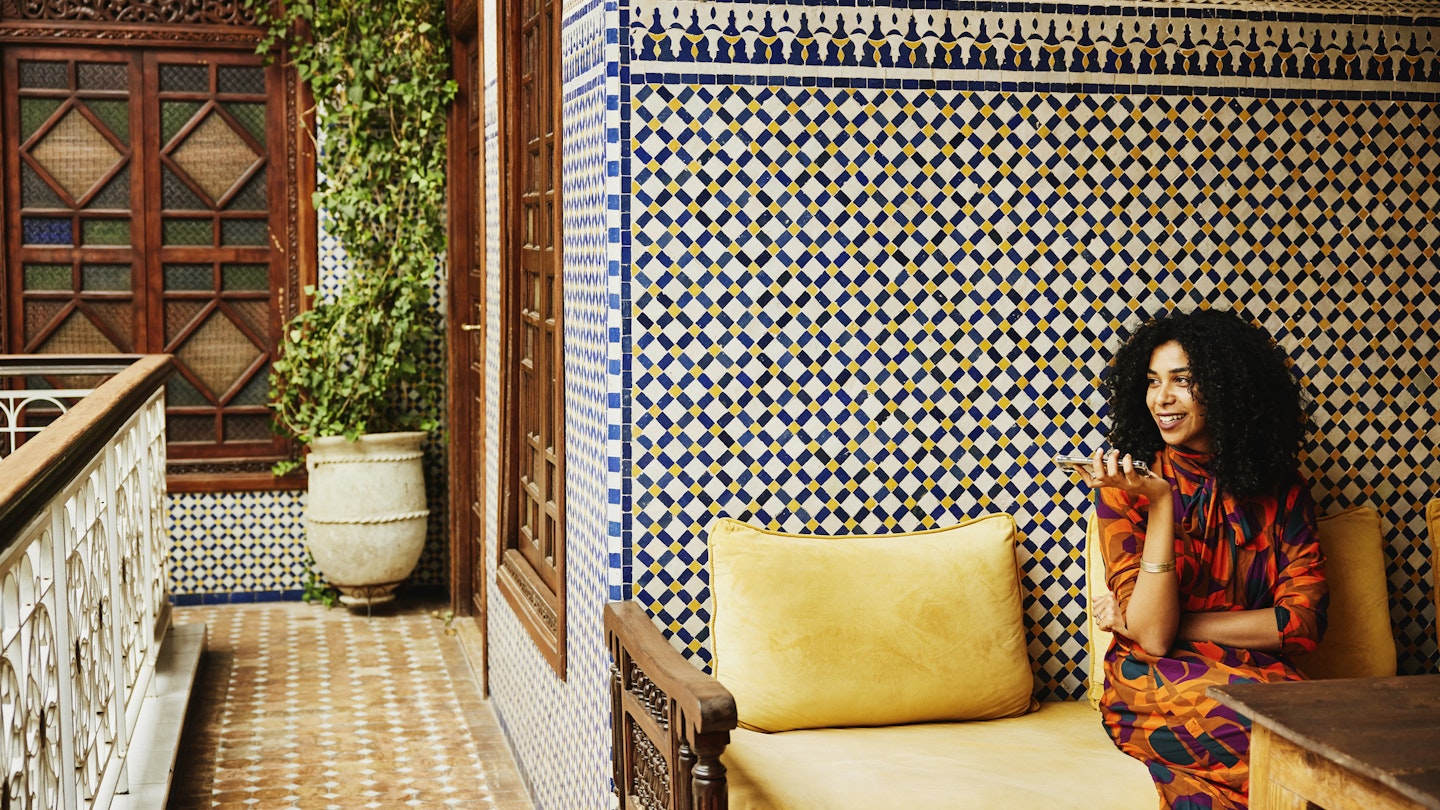
It helps to learn a little lingo: here's what to know before your trip to Morocco © Thomas Barwick / Getty Images
I am originally from the UK and have been living in Morocco since 2018. There are things I wish I'd known before jumping headfirst into the seemingly lawless world of Moroccan taxis and bargaining in the souqs.
Morocco reveals the full spectrum of real life: the good, the bad, the ugly and the oh-so beautiful. For some visitors, Morocco can be a huge culture shock. But with some awareness and understanding, it is possible to appreciate these differences, connect more deeply and see the country through a different lens without trying to change it.
1. Plan your itinerary loosely and allow for changes
Research the places in Morocco you’d like to visit but leave wiggle room for changes along the way and enjoy the spontaneity that Morocco allows. While it’s possible to pre-book tours and activities, it’s usually just as easy to reserve them when you arrive in the country.
2. Take public transport, especially in cities
Driving in cities such as Casablanca and Marrakesh is best left to the locals. Getting around Morocco is easy, even without a car. An excellent train network links many cities, including Africa’s first high-speed train, Al Boraq , between Casablanca and Tangier . A comfortable and reliable bus network connects towns big and small. Book train and bus tickets a day or two in advance to ensure the travel time you'd like.
3. Book professional guides
To get the most out of your trip to Morocco, use a guide who has in-depth expertise and speaks your language. In cities, check with the local tourism office or your accommodations for recommendations for licensed guides in the area. If you’re surfing, check ISA’s directory of certified instructors .
Hiking guides are mandatory for climbing Mt Toubkal in the High Atlas. Check with Bureau des Guides .
4. Understand the written and unwritten rules of the road
In Morocco, you drive on the right side of the road and seatbelts are mandatory, even though some taxis don't have them. Car horns are used often - not in an aggressive way, but as a means of communication.
Watch out for people, bicycles, motorcycles and animals coming from all sides. Avoid driving at night because some vehicles do not have or use their lights. Take notice of the speed limits and the roundabouts that have stoplight systems. If you’re stopped for speeding – police speed checks are common – or other penalties, having cash on you to pay fines (usually between Dh150 ($15US) and Dh300) is preferable to going to a local police station.

5. Practice the art of haggling
Haggling is a game and part of the shopping experience in Morocco . Try not to get frustrated – the ideal scenario is that both sides come away feeling like they got a fair price.
For big purchases, do your research, have a price in mind or shop around until you do. Sometimes vendors say to pay what you feel like, so if you don't have a price, ask some questions: how many hours did it take to make? Where did the materials come from and at what price?
The souqs are filled with fake tennis shoes, which are just that: fakes. Many Moroccans don't care whether their Nikes are original; they just want the best price for the latest styles.
6. Cash or card?
The Moroccan dirham is a closed currency, which means you cannot use or get it outside the country. Morocco’s rural areas still operate on a cash economy, but cards are widely accepted in towns and cities.
7. Learn some of the lingo
A mixture of French, Arabic, Amazigh and English is spoken in Morocco, depending on where you are in the country. Don't expect everyone to speak English. Apps like Google Translate can be useful, but learning some basic Arabic phrases will reward you with feeling more connected and engaged with people you meet.
8. Respect the motto of ‘God, king and country’
These words are etched on hills around the country. Islam is the state religion, and the rules of Islam are applied to personal matters in the same way that state law works in other countries. It is illegal to speak disrespectfully about religion or the king. Non-Muslims are not permitted to enter mosques or cemeteries, except the Hassan II Mosque in Casablanca . Friday is a holy day across the country, and most people take a few hours off in the afternoon to go to the mosque and eat couscous with their families afterward. Check business opening times before you visit if you're heading to a particular place on a Friday.
The holy month of Ramadan and the celebrations of Eid offer a different cultural experience, and during these times many places will be closed.
9. Things to know before going to Marrakesh
Marrakesh is the most popular city in Morocco for visitors, so pre-book entrance tickets to major attractions such as Jardin Majorelle and Musée Yves Saint Laurent online to avoid waiting in line. The Marrakesh medina comes to life around 5 p.m., but the 'pink city' is more than just the medina – spend time exploring Gueliz and step off the main boulevards onto the leafy side streets to discover pretty street cafes, bistro restaurants and small indie boutiques.

10. The dress code depends on where you are
To visit the Hassan II Mosque and other religious sites, visitors – both men and women – must cover to their shoulders and knees. Dress modestly in cities and towns to avoid unwanted attention. At bars and nightclubs, almost anything goes, but in rural areas, cover up and be respectful of the local customs.
At the beach, you can wear shorts, dresses, vest tops and swimwear including bikinis. Pack comfortable footwear that’s suitable for uneven roads and a scarf to cover your shoulders.
11. Ask before taking photos of people
No matter where you are in the world, it’s best to ask permission before taking someone’s photo. Many people are fine with it, but others aren’t. Some may ask for money. Do not take photos of military or government buildings. Drones are not allowed in Morocco without special permission.
12. Learn how to deal with the hassle
Simply ignore people who offer goods that you do not want. There's no need to be polite to everyone who wants to sell you something. By not reacting, they'll get bored and walk away.
In some places you may receive comments and, at worst, inappropriate behavior, but shouting ‘Police!’ will send these people away. In Marrakesh, there's also a high chance you will alert the undercover tourist police.

13. Can you drink alcohol in Morocco?
Even though alcohol is forbidden by Islamic law, it is widely available and sold in licensed wine shops and international grocery stores. Not all bars and restaurants serve alcohol.
14. Eat with your right hand
Moroccan cuisine such as tagines and grilled fish are traditionally eaten with bread using your right hand. The left hand is considered unclean because it’s typically the hand used when going to the toilet.
15. It’s okay to get lost
Getting lost is part of the joy of exploring Morocco with its unmarked roads, the maze of souq alleys and areas of no cell phone reception. Relax but be aware of your surroundings and ask for help if you need it.
In medinas, it’s helpful to know that if the street sign is a hexagon, it's a dead end. If it’s a square, it’s a through street.
16. Don’t drink the tap water
Morocco’s tap water is not safe to drink. Bring a water bottle with a filter to avoid buying plastic.
17. Bring tissues for public toilets
Some public toilets do not have toilet paper. Unless you are comfortable using water to clean yourself, keep a pack of tissues and some anti-bacterial hand gel or wipes on you.
18. Street cats and dogs are everywhere and part of the community
It’s best not to feed street animals from your table because they might not leave, but you can keep leftovers and feed them elsewhere on the street.
See whether a rescue center is set up in the communities you’re visiting and show your support with donations or by volunteering your time.
Explore related stories
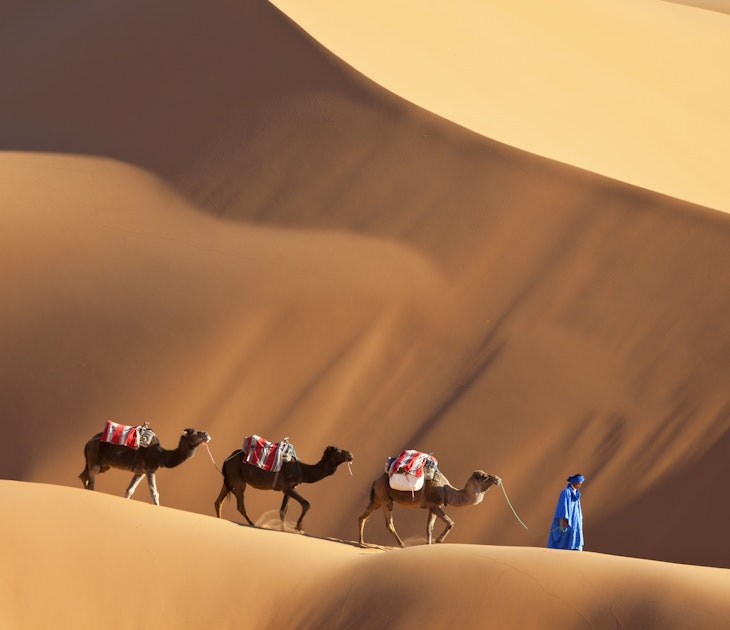
Festivals & Events
Mar 11, 2024 • 5 min read
Morocco is a fantastic year-round vacation destination, but the best time of year to travel will depend on your interests and holiday needs.

Feb 7, 2024 • 5 min read
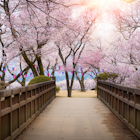
Jan 31, 2024 • 6 min read

Jan 27, 2024 • 15 min read

Jan 17, 2024 • 8 min read
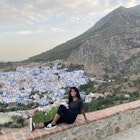
Jan 17, 2024 • 6 min read
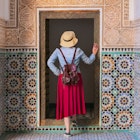
Nov 29, 2023 • 6 min read
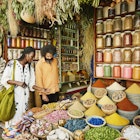
Nov 24, 2023 • 8 min read
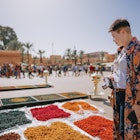
Nov 20, 2023 • 5 min read

Oct 11, 2023 • 7 min read
Meta Filter
I went on a package trip for lonely millennials. it was exhausting. march 21, 2023 6:10 am subscribe.
I feel like the real split here is actually "I might be interested in a group vacation"/"nothing could make me." I fall in the first camp, but if I (through a highly unlikely set of circumstances, I guess) found myself forced into a trip with a group of strangers, I would prefer it to be stuffed with activities. Otherwise you're just...waiting to start doing stuff....with strangers?
And to be honest, if there was a tour company that, say, handled hotel reservations, luggage transfers, reservations at good restaurants; but just gave everyone a Choose Your Own Adventure set of activities for a given day, then I'd be very interested in that setup. That's what a cruise is. Or an all-inclusive resort.
« Older 14% FALL TO DEATH | Board Games Aren't Great For The Environment Newer »
This thread has been archived and is closed to new comments
- South Africa
- Afghanistan
- North Korea
- Adventure + Outdoors
- Amusement Parks
- Backpacking Trips
- Boating + Cruises
- Budget Travel
- Bus + Train Travel
- Coasts + Islands
- Country Trips
- Fall Vacations
- Family Vacations
- Green Travel
- Heritage + History
- Honeymoons + Romance
- Inspiration + Guide
- Landmarks + Attractions
- LGBT Travel
- Markets + Bazaars
- National Parks + Reserves
- Nature + Wildlife
- Parks + Gardens
- Pets + Animals
- Photography
- Airlines + Airports
- Budgeting + Currency
- Business Travel
- Celebrity Travel
- Customs + Immigration
- Deals + Rewards
- Family Travel
- Hotels + Resorts
- Luggage + Packing Tips
- Offbeat News
- Photography Tips
- Responsible Travel
- Solo Travel
- Tech + Gear
- Travel Etiquette
- Travel Warnings
- Bars + Clubs
- Celebrity Chefs
- Restaurants + Cafés
- Wine + Vineyards
- Beach Hotels
- Boutique Hotels
- Hotel Openings
- Hotel Reviews
- Luxury Hotels
- Mountain + Ski Resorts
- Spa Resorts
- Vacation Rentals
- Asia Cruises
- European Cruises
- Festivals + Events
- Museums + Galleries
- Style + Design
- Travel’s Best
- Hotel with Agoda.com
- Hotel with Booking.com

Guide to Shenzhen nightlife — Top 5 things & what to…
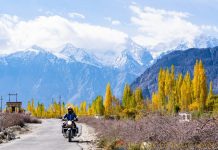
Ladakh trip cost per person from Delhi — How much does…
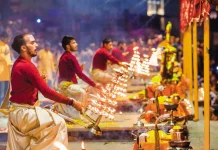
India travel tips — 25+ what & things to know before…

Must eat in Hong Kong — 7+ must eat & must…
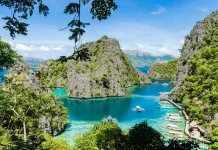
Coron itinerary 5 days — What to do & how to…

India trip tips — 9+ things to know before going to…

All about tips in Nepal — How much to tip in…

Cambodia travel tips — 15+ what to know & things to…

When is the best time to visit Kyoto? — The best,…

Must eat in Georgetown — 10+ famous, must-eat & best street…

Must eat in Melaka — 10+ famous Malacca street food &…

Hong Kong Soya sauce Chicken Rice and Noodles — The first…

Top hotels in Siem Reap — 8+ best places to stay…

Top hotels in shanghai — 15+ best hotels in Shanghai

Top hotels in Malacca — 10+ good & best hotels in…

Top places to stay in Bali — Top 10 best areas…

10 must-know things for your best first time European river cruise

Top 3 best luxury cruises in Halong Bay, Vietnam

Cherry blossom festival Korea 2024 — Top 5 cherry blossom festivals…

Ghibli museum blog — The fullest Ghibli museum guide for first-timers

Kyoto festival — Top 10 best events & most famous festivals…

National Palace Museum Taipei blog — What to see in National…

Japanese waterfall — Top 10 most beautiful waterfalls in Japan in…

19+ most beautiful towns in Europe every tourist need to visit…

Georgia travel photos — 20+ captivating photos show Georgia is heaven…

Explore Damnoen Floating Market — The oldest floating market of Thailand

Visiting Fenghuang Ancient Town — One of the most charming ancient…

Mekong Delta travel blog — Beyond rivers of Southwestern Vietnam

14 reasons why you should travel when you are young

Shigaraki Tanuki – An animal symbol of good luck in Japan

Living in the charms of cave houses in Andalucia, Southern Spain

20+ jaw-dropping tiny homes around the world
Morocco travel blog — the fullest morocco travel guide for a budget trip for first-timers.
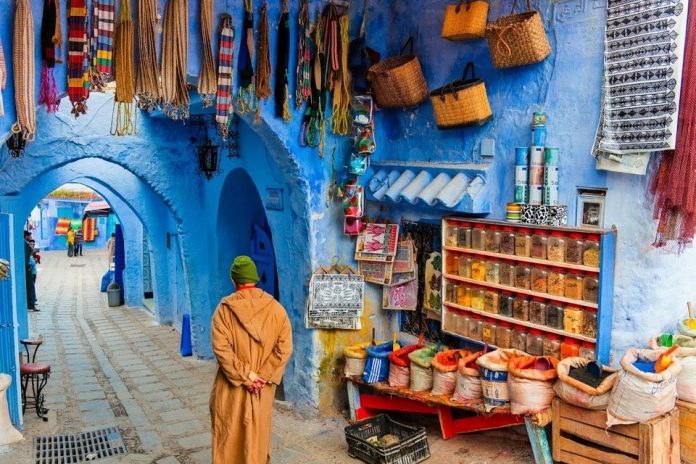
Morocco is an Islamic country located in the northwestern part of Africa, both the gateway to the Mediterranean Sea and the gateway to the Sahara desert, so this country possesses different types of terrains and diversity in climate, along with countless of extremely beautiful, impressive, spectacular landscapes. As part of the Arab world, Morocco also has many cultural traditions and a treasure of very unique Islamic art and architecture. That is why Morocco is always a favorite destination of many tourists around the world, and especially always on the “must-visit” list of any traveler. So, what to do and how to plan a perfect budget trip to Morocco for the first-time? Let’s check out our Morocco travel blog (Morocco blog, Morocco trip blog) with the fullest Morocco travel guide (Morocco guide, Morocco tourist guide) from how to get there, best time to come, where to stay, best places to visit and top things to do to find out the answer!
- Taiwan itinerary 6 days — The itinerary of a trip to Taipei – Hualien – Kaohsiung for 6 days 5 nights
- Fes blog — The fullest (Fez) Fes travel guide for first-timers
- Morocco 7 days itinerary — How to spend 7 days in Morocco perfectly to visit: Fez, Chefchaouen & Tangier
- India itinerary 10 days — How to spend 10 days in India perfectly?
- Marrakech travel blog — The fullest Marrakech travel guide for first-timers
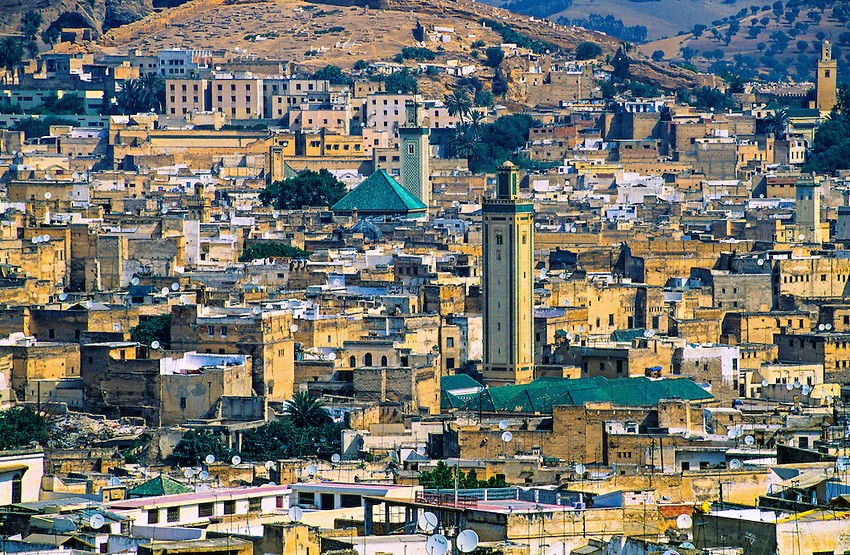
Morocco travel blog: Overview of Morocco
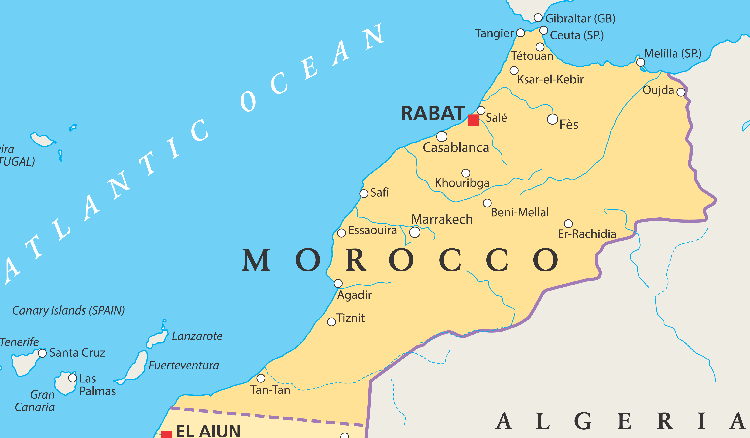
Geographically, Morocco is formed up of four different regions: The Sahara desert with its towns and Berber oasis (Siwa Oasis); the Atlas and Rif mountains; the plains were home to the royal cities of Strasbourgesh and Fez (Fes); and finally the sandy shores of the Mediterranean Sea and Atlantic Ocean, surrounded by small seaside towns and the cities of Rabat and Casablanca.
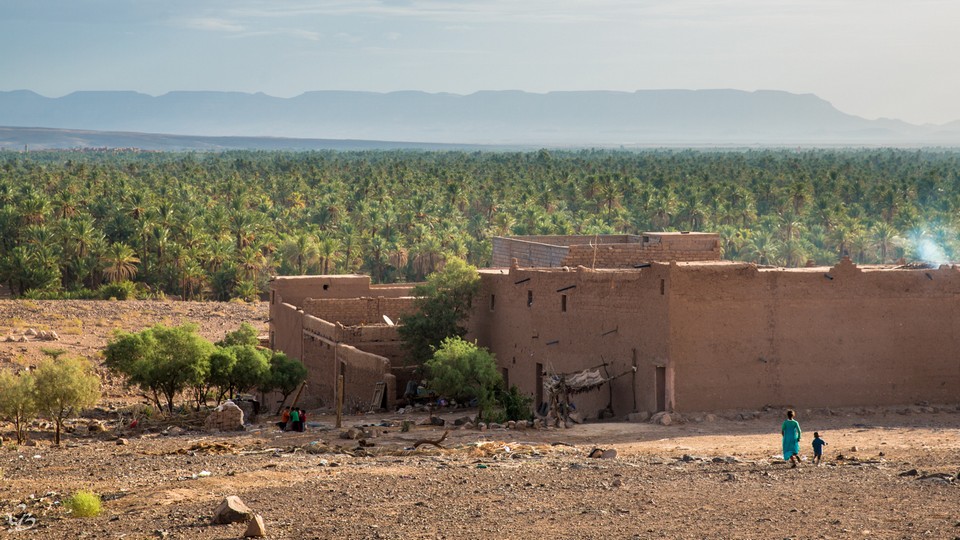
Morocco (Arabic name Al Mamlakah al Maghribiyah, meaning “The Western Kingdom”) is a country located on the northwest coast of Africa, bordered by Algeria to the east and Western Saharah to the south. The whole country of Morocco is divided into 16 regions, with the capital of Rabat and the largest and most famous city of Casablanca.
Safety and security
Theft can happen in big cities and along beaches, where you should avoid deserted areas and stay alert at all times, especially after dark. Remember do not bring large amounts of money or valuables with you.
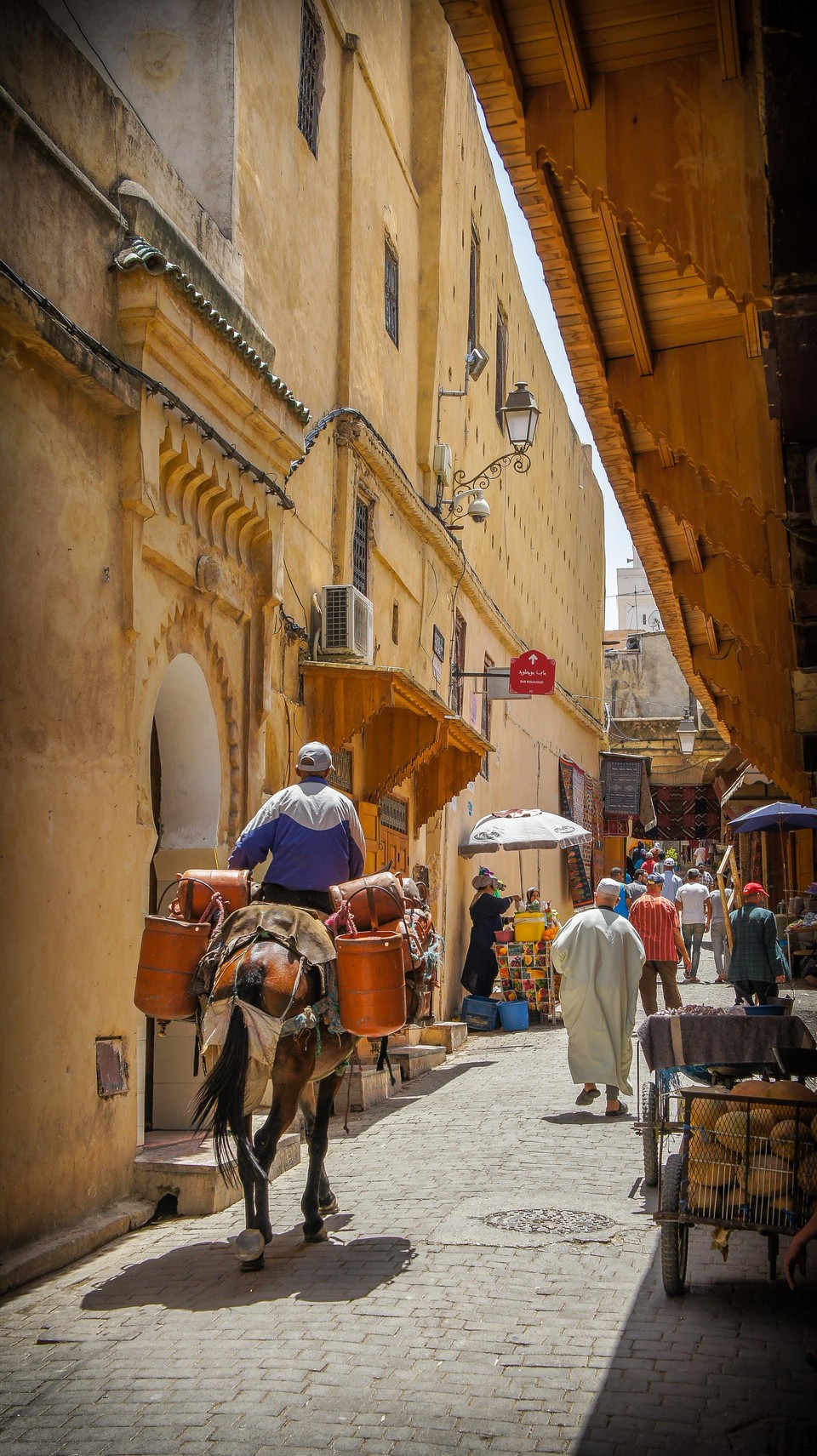
In big cities, in addition to petty theft, pickpockets and extorting money, I find the safety and security in Morocco not so bad. In crowded places, there are many policemen in uniform and plain clothes. In the old towns (Medina) always have crowded markets, it is necessary to pay attention to your belongings. You should leave the passport in the suitcase at the hotel, bring only a photocopy.
The southwestern border region which bordering Algeria and the southern territories of Western Sahara, especially near the border with Mauritania because of kidnapping and is advised by the authorities that visitors should not to come there due to the complicated security situation in these areas.
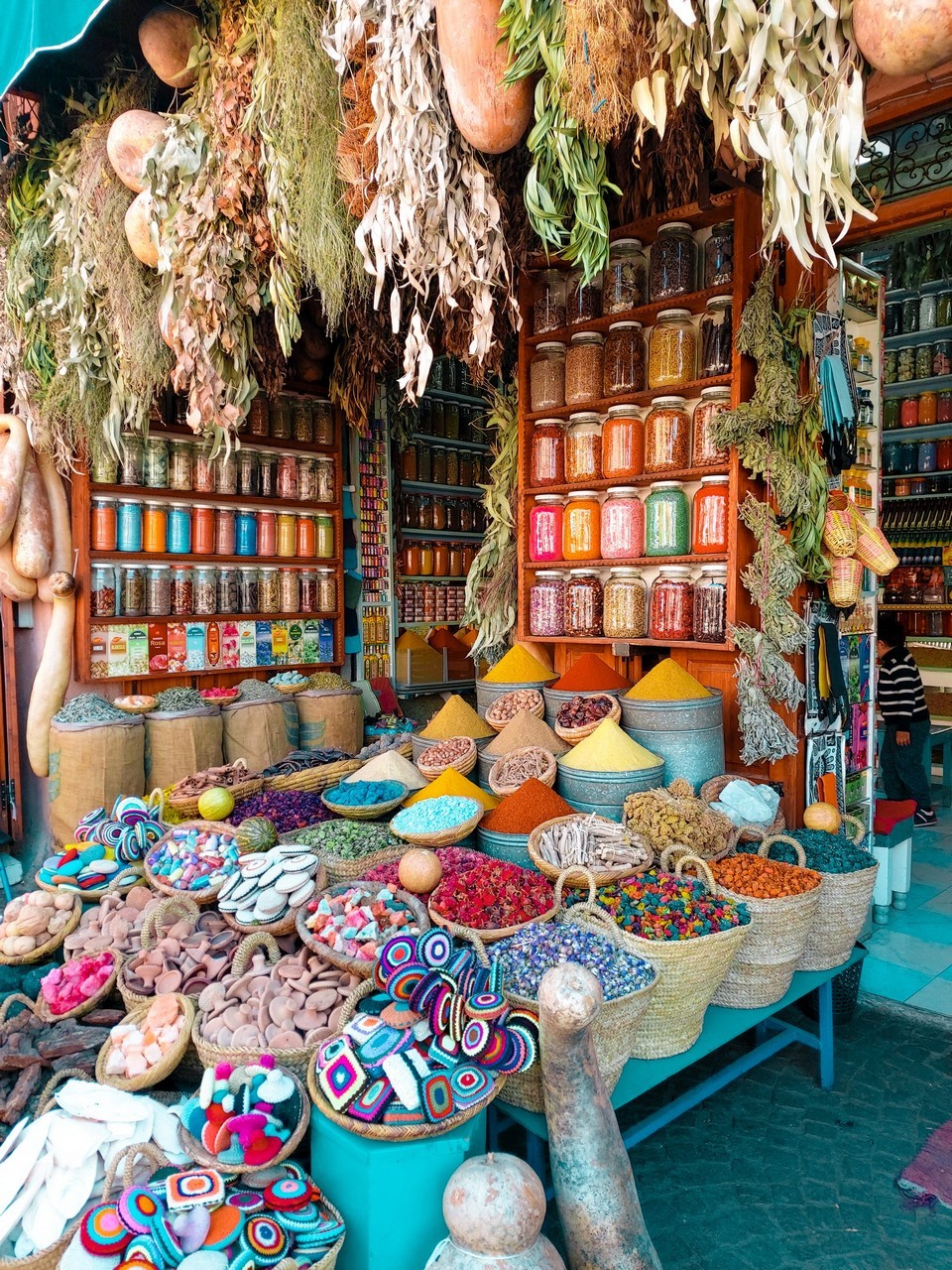
The US government has a website to notify the security situation (terrorism, natural disasters) of all countries in the world here .
The French government also has a similar site, access here .
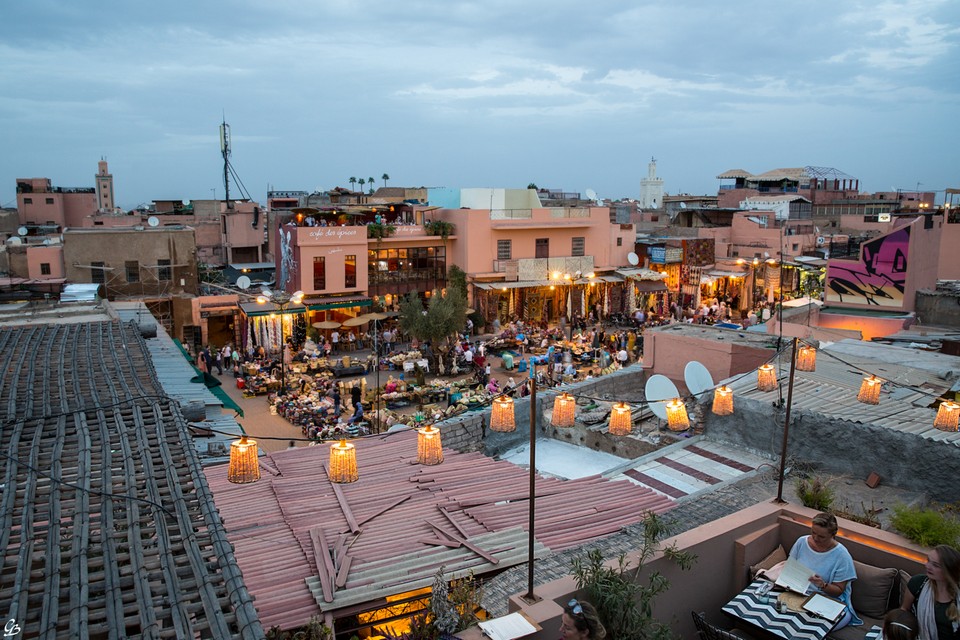
The national religion of Morocco is Islam. Coming here, it is advisable to wear discreetly, limit open underarms and short skirts on streets to show respect for locals. If it’s too hot, you can bring a thin, long, large scarf to wear instead of a shirt with sleeves.
In Morocco, in large places of worship, men and women are not allowed to pray in the same area but must be separated, male on one side, female on the other. There are different entrances as well.

The Moroccans speak two main languages, Arabic and French, and in the mountainous areas, there also is a Berber language. All the signs, in addition to Arabic, they are also available in French, so you don’t have to worry about falling illiterate.
A few common words (transliteration):
- Where is the toilet: Fin kaynin toilettes?
- Hello: Salam
- Goodbye: Bslama
- Thank: Shokran
- Thank you (in Berber): Ten miêrt
- Agree, ok : Wakha
- Let’s go: Y-allah
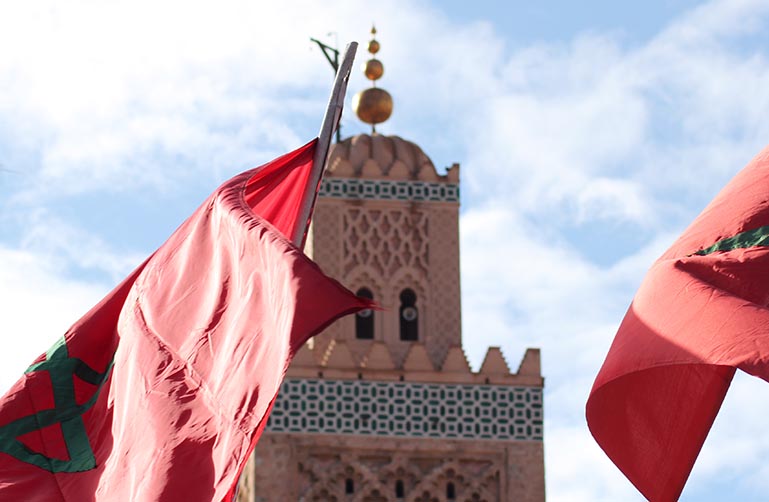
The flag of Morocco flag is red, with a green five-pointed star, which is the symbol of the Kingdom of Morocco. Originally, the Moroccan flag was plain red, embodying the Alaouite dynasty, which ruled Morocco since 1631. In 1915, a green five-pointed star was added to distinguish it from the flags of other countries that also had red. Green is the color of hope and also the color of Islam. The star represents the 5 pillars of Islam:
- Fasting (Ramadan)
- Pilgrimage (to Mecca, Islam’s holy site)
Morocco blog: When to visit?
Due to its diversisty in geography, the best time to travel to Morocco depends largely on where you will going to, but overall, Morocco is a great year-round destination. With its long coastline, majestic mountains, and desert landscapes, it’s an incredibly diversity country in landscape that offers unique experiences to explore at any time of year. January is the wettest and coldest month and July and August are the hottest months, so you’ll see less touristy. Spring (March & April) and autumn (September & October) have the most pleasant weather.
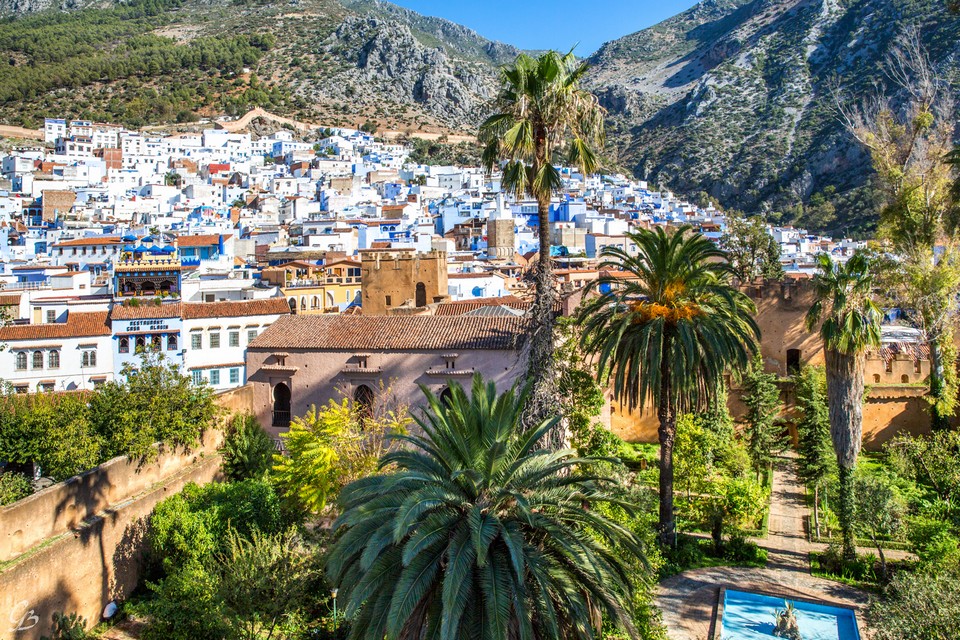
In the Sahara region, cities in the plains, you should be avoided come in mid-summer. Desert climate is hot, dry and clear in the summer, but nighttime temperatures can plummet. However, the hottest months are ideal for visiting coastal cities like Essaouira and Rabat. The winter months in the mountains are very cold, which can be difficult to come as many hotels do not have heating system.
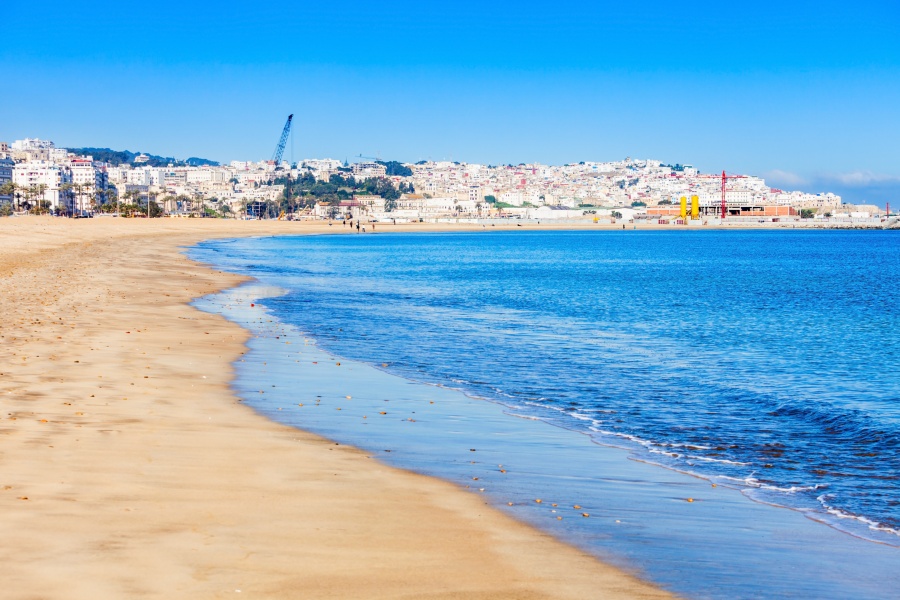
From October to May next year is the best time to visit Morocco. The autumn and spring’s weather is cool. Winters are not as cold as Southern Europe. The desert night is quite cold, so you still need to bring warm clothes. The Moroccan spring often comes a little earlier than in Europe. From mid to late February, plum and apricot blossoms bloom white on oases in the middle of desert. In late April, early May, roses bloom brilliantly in the valley of roses (Vallée dés Roses).
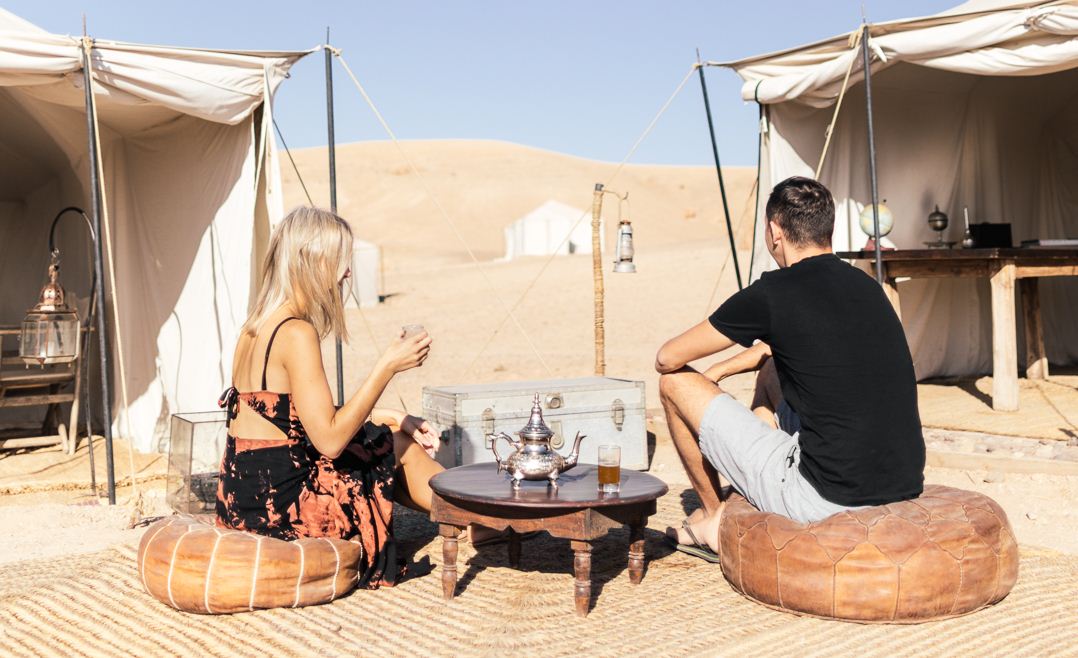
During Christmas and New Year, the whole Europe is on holiday, the streets will be a bit crowded and the price of services will be slightly higher. Because Morocco is Europe’s neighbor, the French and Germans like to go to their neighbor to relax, especially special holidays.
Morocco travel blog: Getting to Morocco
The simplest and most convenient way is flying to big cities like Casablanca, Marrakech, Fes, Rabat… There are many low-cost airlines operating daily flights from European cities to Morocco and the flight time is also very reasonable (It takes average 3 – 4 hours of flying) such as Ryanair, Volotea, Easyjet… If you hunting hard, you can find cheap airfares for just a few dozen of Euros / round-trip. I often use Skyscanner , Google Flights to find tickets and then go directly to websites of airlines to buy.
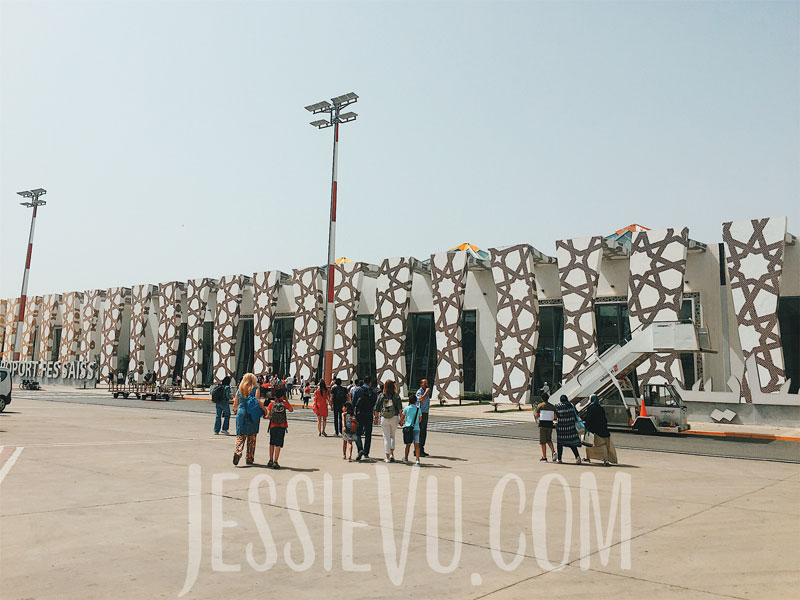
Alternatively, you can also drive to Morocco from Europe via a transit ferry from the Spanish city of Tarifa to Tangier. Some ferry companies such as FRS, Inter Shipping regularly operate ferries that connecting these two cities with travel time of about 1 hour. See ferry routes and timetables here .
Morocco blog: Getting around Morocco and between cities
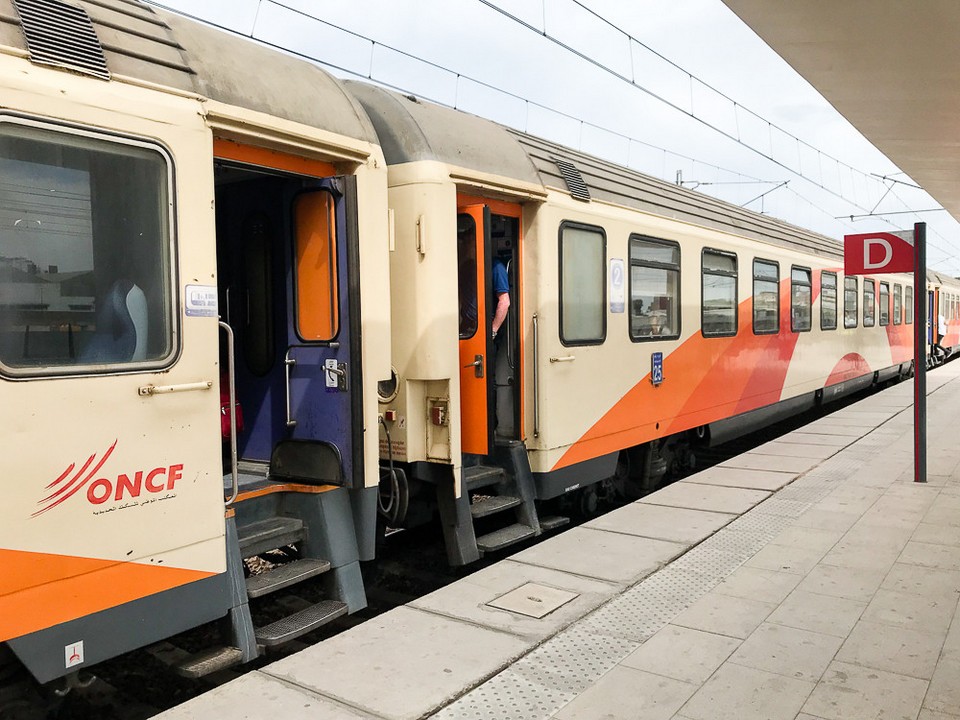
Morocco’s national railway company is ONCF. The railway network in Morocco is concentrated mainly in the north and cities along the west coast, connecting the major cities. Therefore, if you want to getting to cities in the South (such as Agadir), the bus is the most reasonable choice.
Train tickets can be purchased online through the company’s website at:( https://www.oncf.ma/fr/ ), via app ( iOS , Android ) or directly at ticket counters at train stations.
If you want a guarantee and rest assured, you can buy tickets 1 to 2 days in advance.
Like me, when I was in Marrakech, I checked the train schedules and prices in advance on the web, then went to the station 1 hour before departure and bought tickets directly at the ticket counter. This helped me more flexible and not be constrained by time.
A few things you should keep in mind are:
- The ticket counter will stop selling 3 minutes before departure time.
- In big cities like Marrakech or Casablanca have relatively high frequency of trips, on the contrary, smaller cities like Meknes have quite a few trips. So, if you stay in small cities, you should carefully check the departure time of train to arrange a reasonable travel time.
- On the train, you must always keep your belongings within sight, to avoid being “lost your luggage” when train stops at stations.
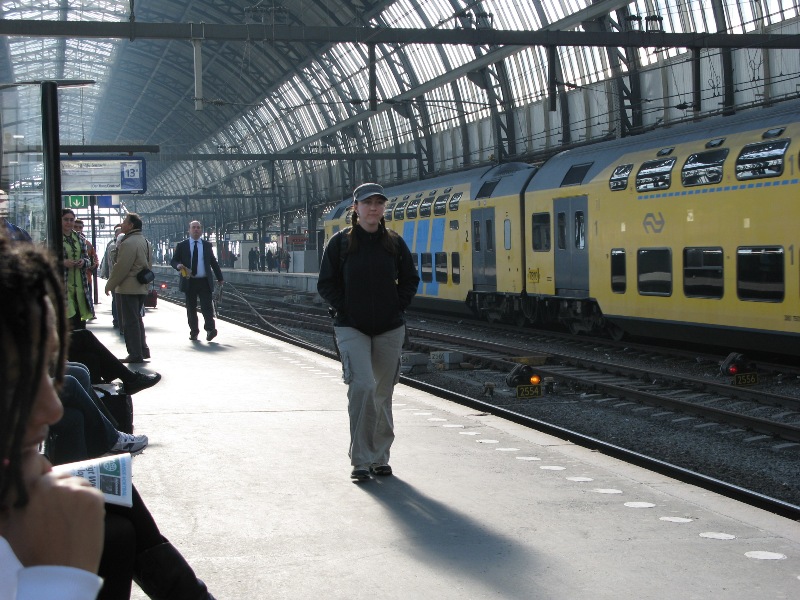
Example fares: Train from Casablanca – Marrakech : 95 MAD (10 USD); Bus supratours from Marrakech – Essaouira : 80 MAD (8.4 USD), Train from Fes – Meknes : 22 MAD (2.3 USD).
It is the most convenient means of transportation in Morocco. The bus network covers the whole country, so it is possible to reach places that train cannot. The major bus carriers are CTM ( http://www.ctm.ma/ ), Supratours ( http://www.supratours.ma/ ), SATAS and Trans Ghazala.
When traveling in Morocco, I chose the CTM bus company (because the company has frequently bus trips, and the service is also relatively good).
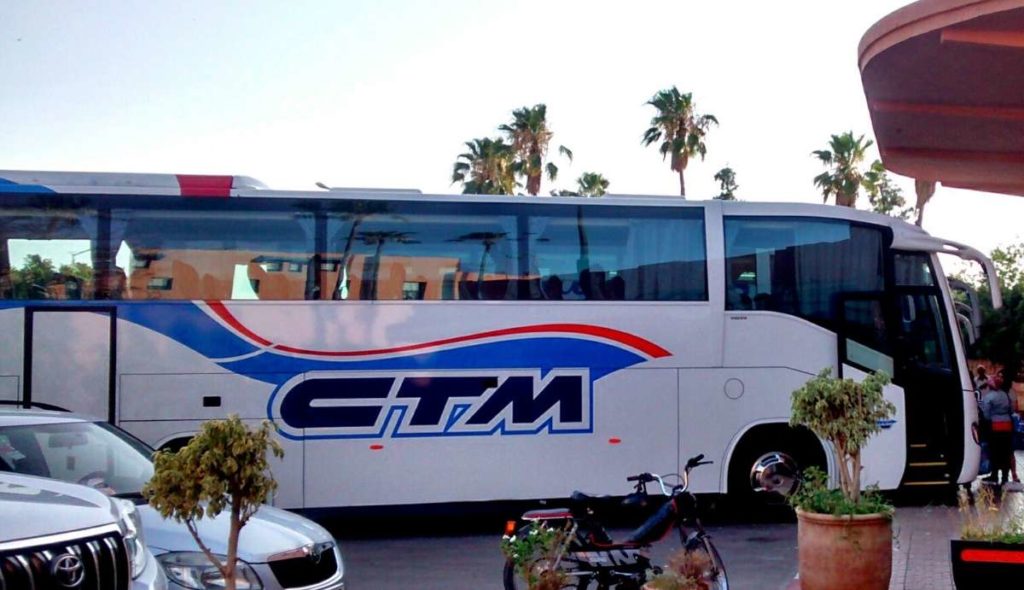
Riding by bus, I recommend you to book tickets 1 to 2 days in advance to be able to choose the most suitable trip in terms of both tickets and timetables. The reason is that if you buy tickets on the departure date, but unfortunately the bus trip you already choose is already full, you will be pushed to the next trip. In big cities, the waiting time between bus trips is not too long (about 1 hour), so take the next trip is still okay.
But, in contrast, in small cities (eg Chefchaouen) the frequency is reduced quite a lot and you have to wait for a long time to wait for the next bus, which can affect your expected schedule.
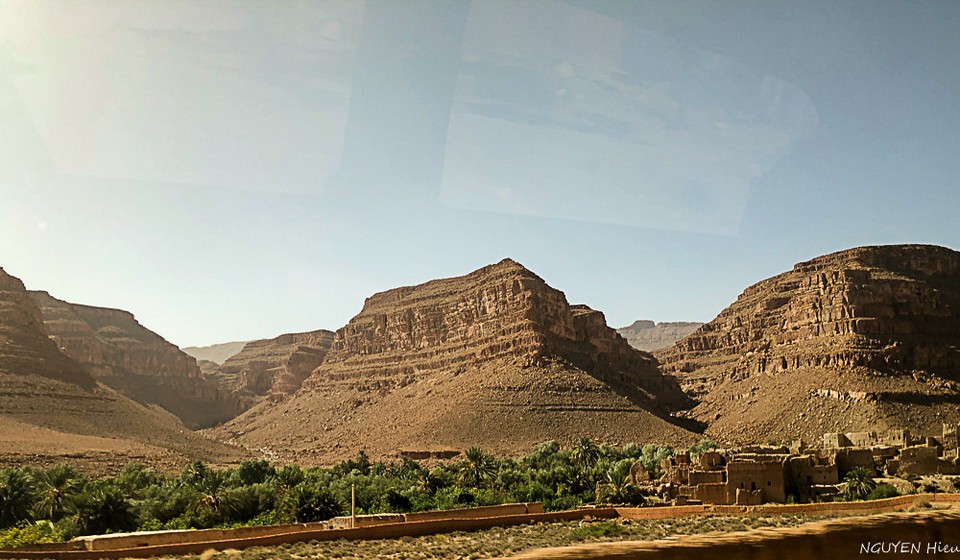
This is also a good option to getting around in Morocco, helping you to be more proactive in your time as well as being able to reach places that trains and buses cannot reach. However, self-driving in Morocco also requires you to be very steady and careful.
As far as I can see, the traffic here is a bit chaotic, especially in small cities (eg Chefchaouen): pedestrians cross the street anywhere; On the road, in addition to cars, there are also horse-drawn carriages, donkey carts, and horns are loud, in general, it feels quite similar to Vietnamese traffic.
Moreover, the terrain in the North of Morocco has many hills and passes, so self-driving is not for weak drivers.
Getting around in cities
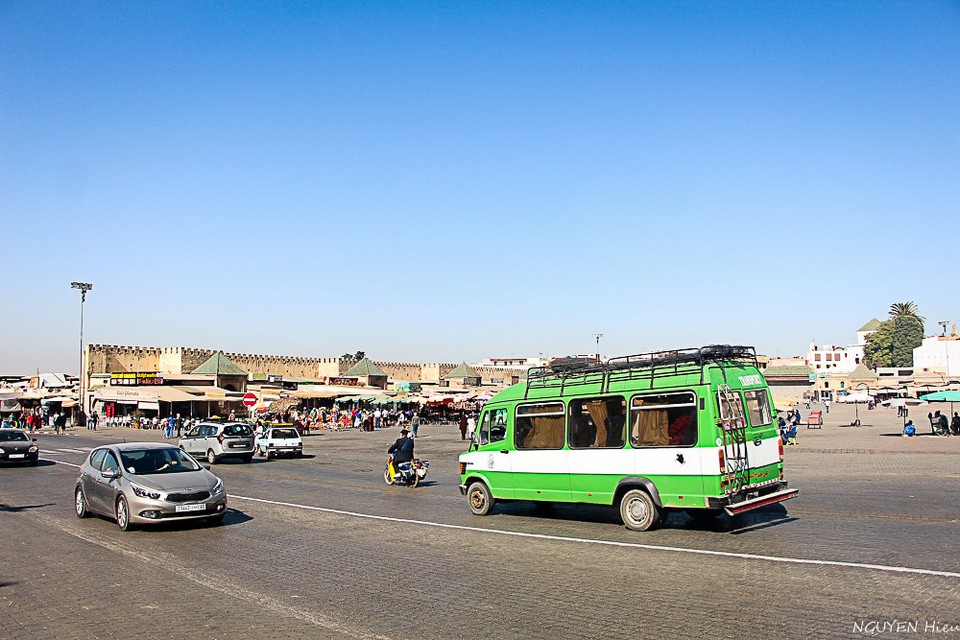
Inside medina, motor vehicles are prohibited, you can only walk or donkey riding. The area of medina is not too large but complicated like a maze. So prepare a good pair of walking shoes.
In Moroccan cities, there are always people who are enthusiastic to show you the way to ask for money. If needed, let them guide directions for you and pay about 10-20 MAD (1-2 USD). If you feel uncomfortable, just say “No” clearly a few times. If they insist on following and walking ahead, pretending to give directions, I often take advantage of when they don’t notice and stop by a shop on the street. If they don’t see you anymore, they will leave away.
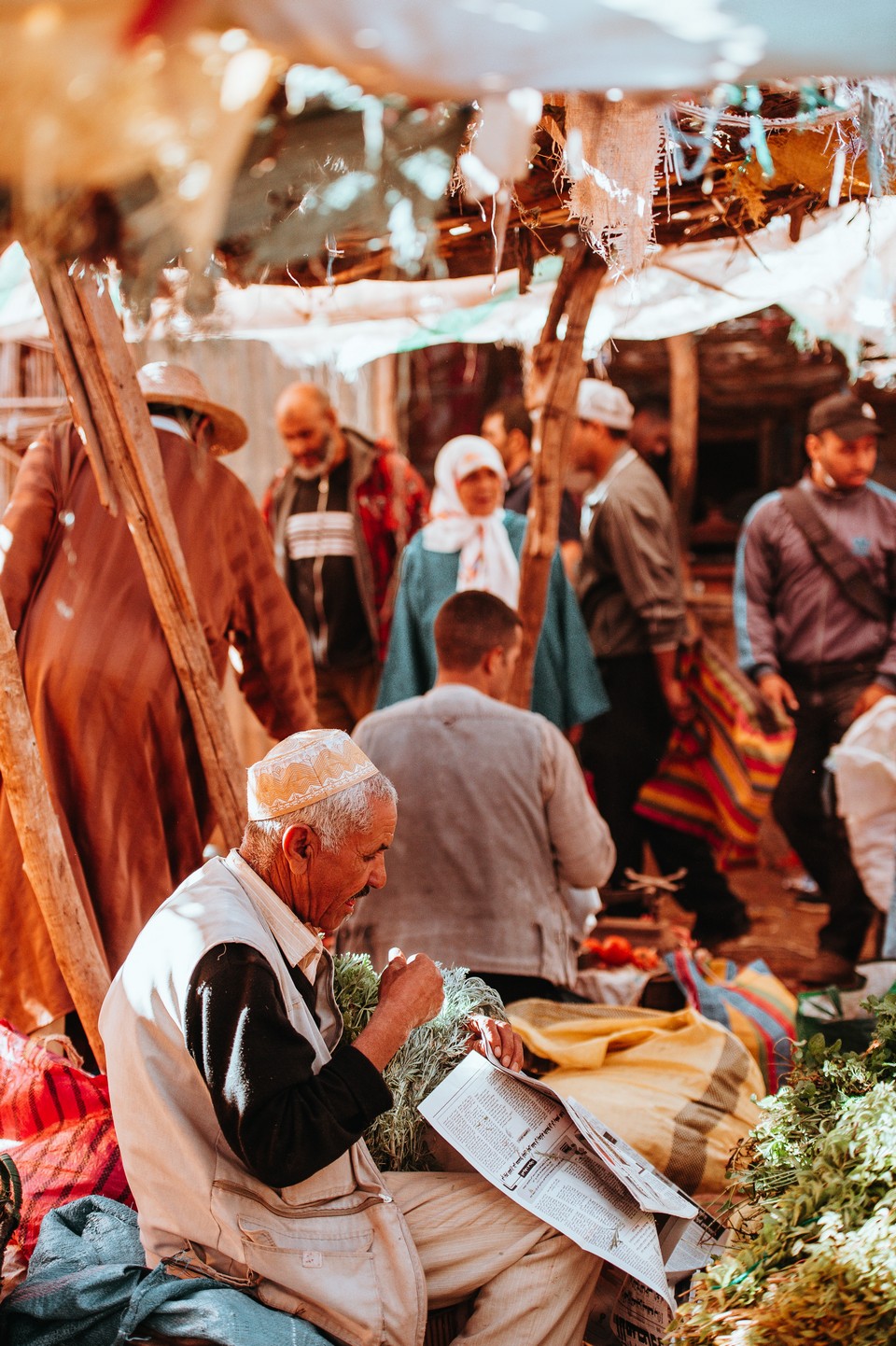
In order to limit being disturbed on the road, you should not hold a paper map in your hand with a blank face, a half-lidded gaze. Instead, you should download offline maps of MAPS.ME or Google Maps , plus compass apps to your phone for convenient navigating. In Marrakech and Fes, paper maps are also not very effective because in the souks, almost all streets have no numbers, streets without names.
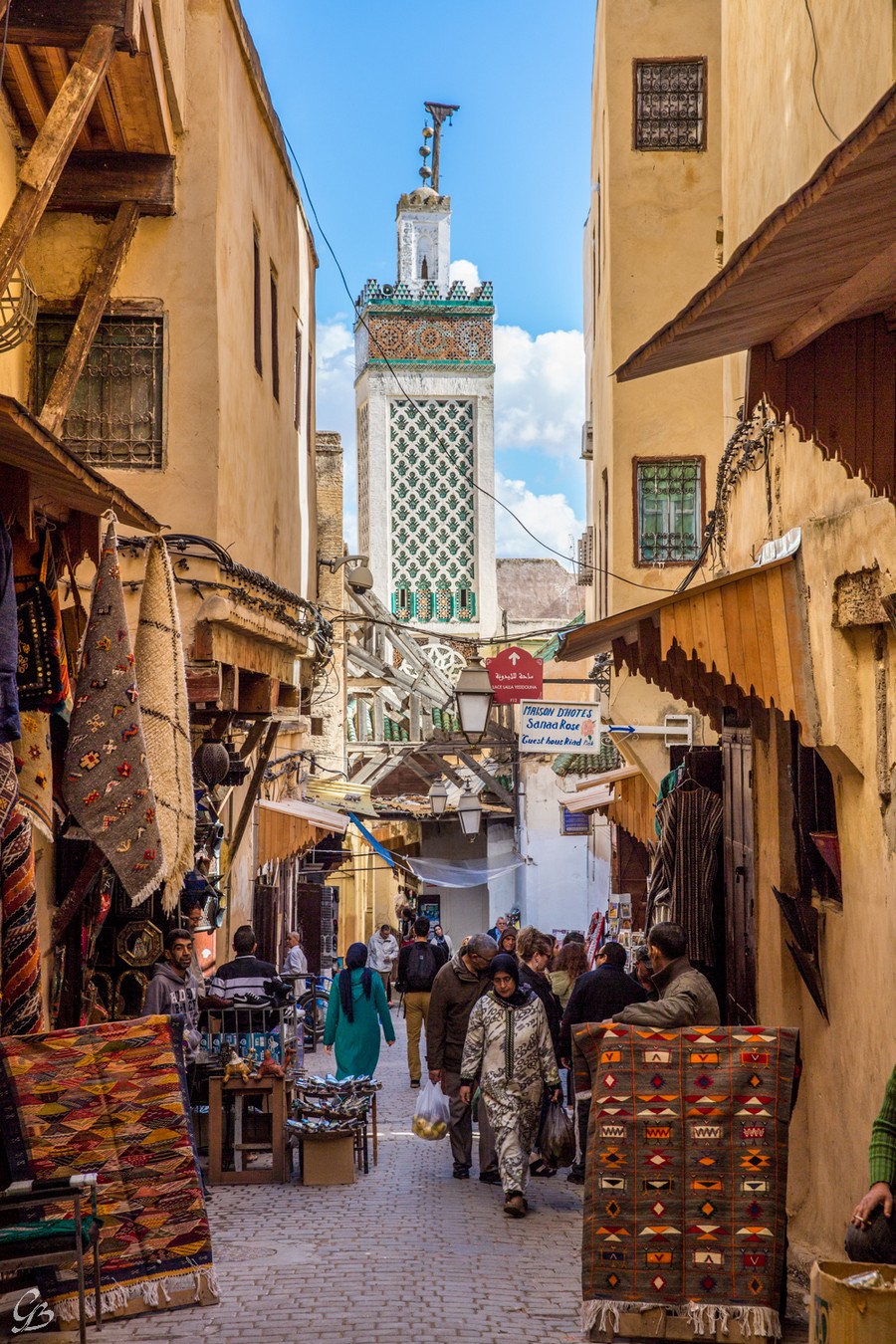
Outside of medina, the most convenient way to travel are taxis. Taxi prices in Morocco are comparable to Vietnamese taxis. In Casablanca and occasionally in Marrakech, taxi is billed by meter. During rush hour, the drivers often refuse to turn on the meter, you should ask in advance to be sure and bargain the price before getting on the car.
There are two types of taxis operating in cities in Morocco: “grand taxi” – large taxi and “petit taxi” – small taxi.
Small taxi: 4-seater car, only allowed to run in the inner cities. According to regulations, this type of taxi can only carry a maximum of 3 passengers.
“Our group went with 4 people, even though we saw that the car still has an available seat and asked the driver to take all 4 of us, the driver disagreed and asked to divide into 2 groups to accept it”.

Large taxi: Usually a 7-seater taxi, this type can go out of town or traveling between neighboring cities.
In cities, to getting from city center to airport, you can only take this large taxi.
With most taxis, the price list is listed on the window of the car, however, you can still bargain with the driver to get the most reasonable price.
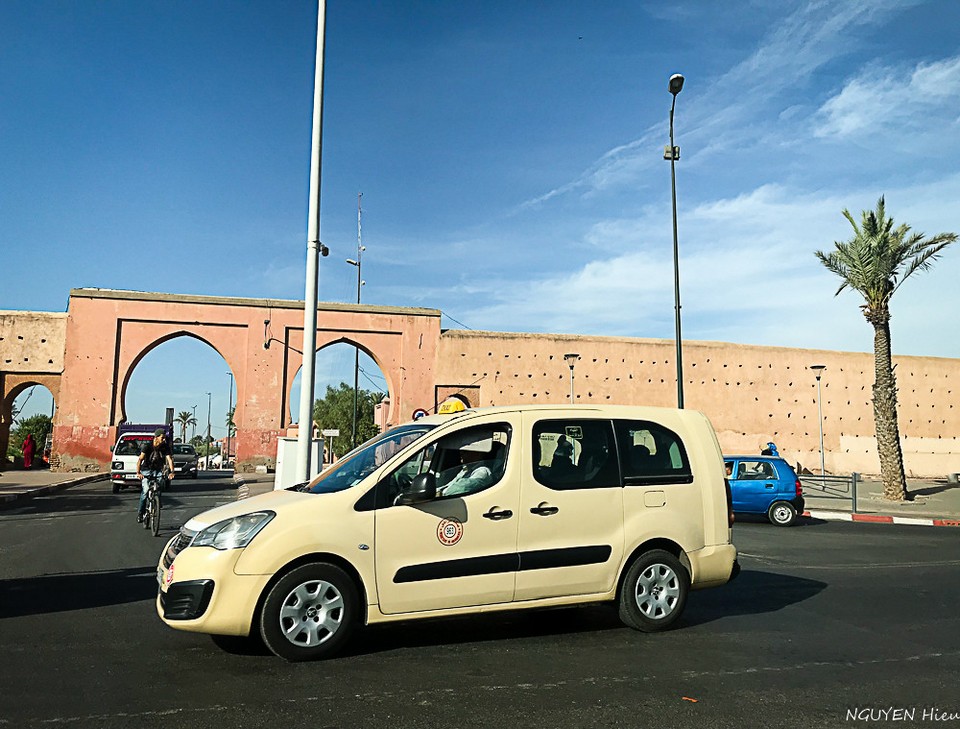
Casablanca also has a tram system, the way to buy tickets and travel is the same as in Europe.
Morocco travel blog: Where to go?
Marrakech (marrakesh).
There are few places where red is so overwhelming as in Marrakesh, from houses, walls, even the streets are painted pink or red. This North African city has a multi-dimensional, mysterious and captivating life.
It is the country’s fourth largest city, after Casablanca, Fes and Tangier. Marrakesh, located in the southwest, was once the capital of Morocco, playing an important role in the trans-Saharan trade route. The history of formation and development of Marrakesh has gone through many periods. Since the 13th century, Marrakesh is no longer the capital, but is still one of the four imperial cities of Morocco, an important commercial center. Marrakesh is also one of Morocco’s artistic cities, a national and international tourist destination.

Attractions in Marrakesh: Jemaa el Fna Square, Medina old town, Souks. Medina Old Town is a top tourist attraction in Marrakesh and is surrounded by 9km of high walls. Jemaa el Fna Square is a bustling place with all kinds of representations of the daily life of Moroccans, Ali Ben Youssef Medersa is the largest Koran school in North Africa, Bahia Palace, Souk Flea Market in the Medina is also a must-see place during your visit.
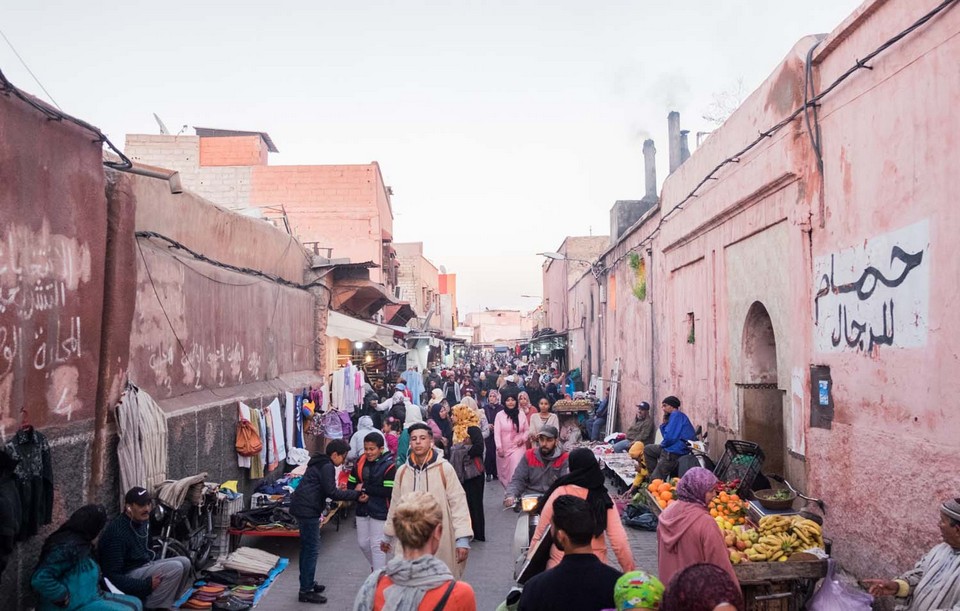
Chefchaouen
Also known as the Blue City of Morocco, Chefchaouen is located in the Rif Mountains in the northwestern Morocco. It’s a small city, a bit remote, but well worth a visit in the vibrant shades of turquoise of the houses, charming alleyways, a photogenic and perfect spot to take virtual living photos.
The city is built on a hill, so be prepared for a hike, when you get to the top it can feel like you just went for a hike. Walking is the best way to experience the city as there are many narrow streets that cannot be accessed by cars.
Sahara Desert tour
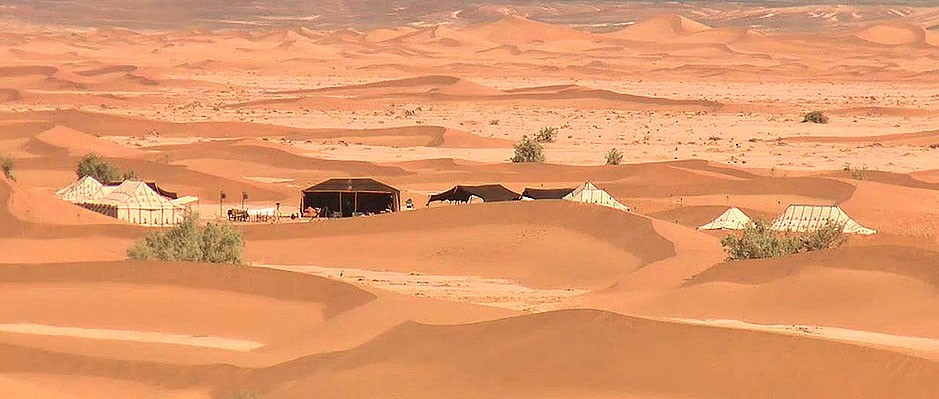
There are many Sahara desert tours that offered by tour operators in Morocco, with options ranging from camping, day trips, or night add-ons combined with other city tours. Camping in the Sahara Desert is a dream for any visitor, it’s definitely the ultimate nomadic experience. This is where you can experience walking on the sand dunes to watch the sunrise, camel riding, camping…
Known as Morocco’s cultural capital, Fes is a place you’ll definitely want to visit once. Ranked as the second largest city in Morocco, Fez served as the country’s capital until 1925. The city is known as the “Athens of Africa” for preserving its diverse historical heritage. One of the heritages with the most vivid image of the Moroccan people is in the Fez markets (souks). Visit the Fes el Bali area to discover the unique cultural features, which was recognized by UNESCO as a world heritage site in 1981.
Fes is located just over 300 miles from Marrakech which you can reach by car or plane. This UNESCO World Heritage city is one of the best-preserved ancient Arab cities in the world and the largest car-free urban area on earth.

The seaside city of Essaouira
Located on the coast of Morocco, Essaouira is known for its laid-back atmosphere and excellent kitesurfing conditions and beautiful beaches. If you stay in Marrakech, there is a bus that connects these two cities. The journey takes about 2.5 hours. Another option is to hire a taxi from Marrakech airport and a one-way trip will cost around $90.
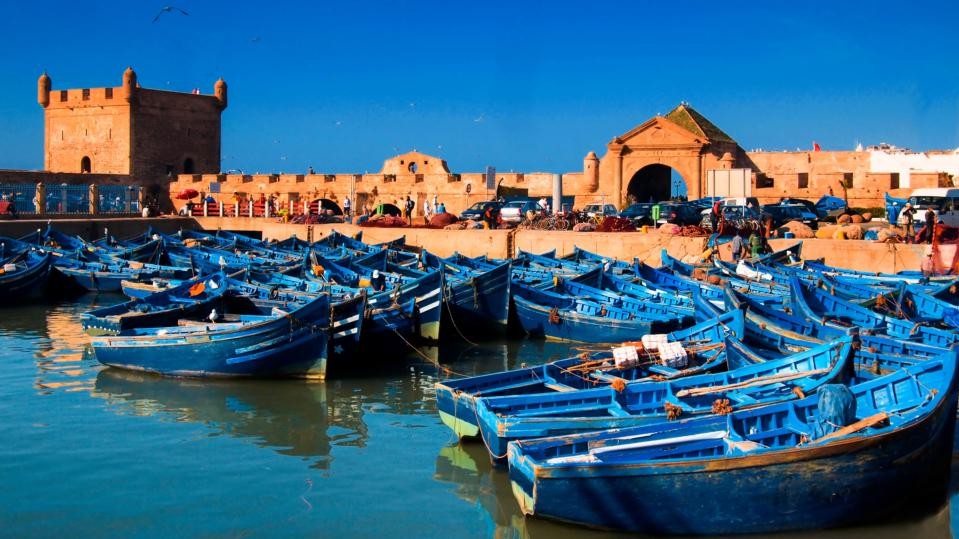
Tangier is a northern Moroccan city with a population of over 2 million, located on the North African coast, to the west of the entrance to the Strait of Gibraltar, which borders the Mediterranean and Atlantic Oceans at Cape Spartel. This city has cultural features, architecture that mixed of France and Spain.
Surrounded by beautiful beaches, Tangier attracts visitors by its vibrancy that few places have. Visitors can move here by taxi after about 10 minutes from city center. My first impression of Tangier is the lively, bustling street and beautiful beaches just ten minutes away from the center. By the beach are markets, modern residential areas, frequented by tourists from all over the world with a wide variety of goods on sale.
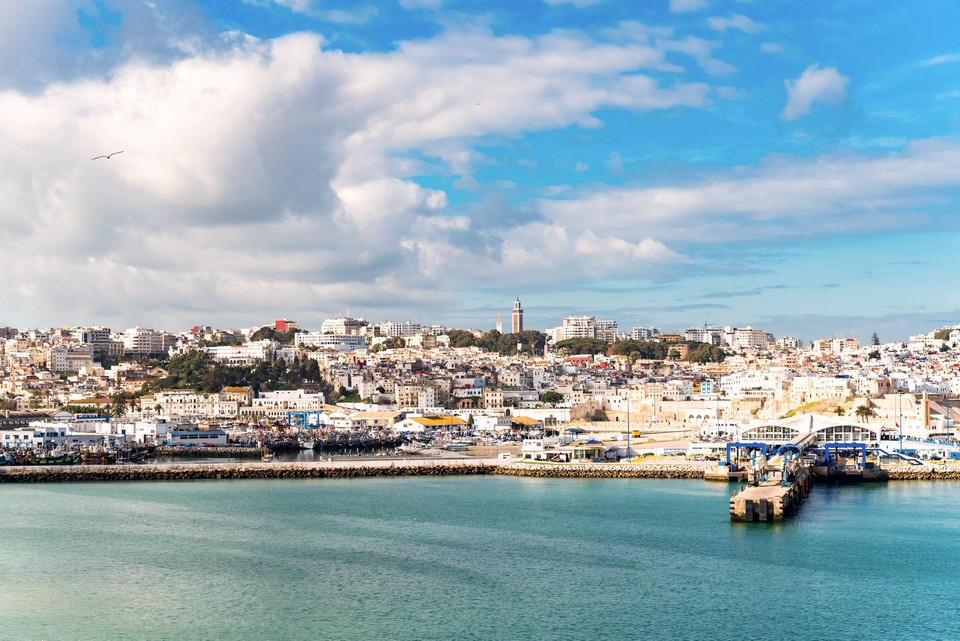
In 1923, Tanger was called an international city under a treaty between nine countries with interests in Morocco: France, Italy, Spain, Great Britain, USA, Sweden, Netherlands, Belgium and Portugal.
Meknes is one of the four most popular tourist destinations in Morocco. Before choosing Marrakesh as the next capital, Meknes served as the capital of Morocco from 1672 – 1727 under the rule of Sultan Moulay Ismail. Today, the city still retains the images that recreate the heroic history with the architectural style of Spain and Morocco. Especially the great gates with high walls. The impressive historical landmarks: Mosques, old markets and squares… Especially the old town (medina) in this city is also recognized by UNESCO as a world heritage site.
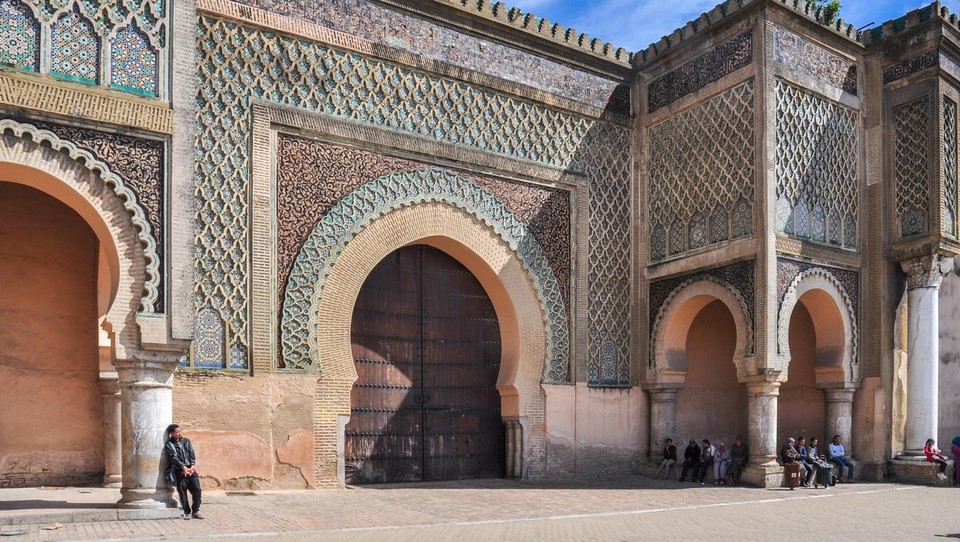
Casablanca is the largest city in Morocco and the largest port in Africa. Casablanca is known to many people through the movie of the same name, but it is not the filming location of this movie. With the diversity in culture from Portuguese, French and Moors, make the city is more dynamic and full of vibrant.
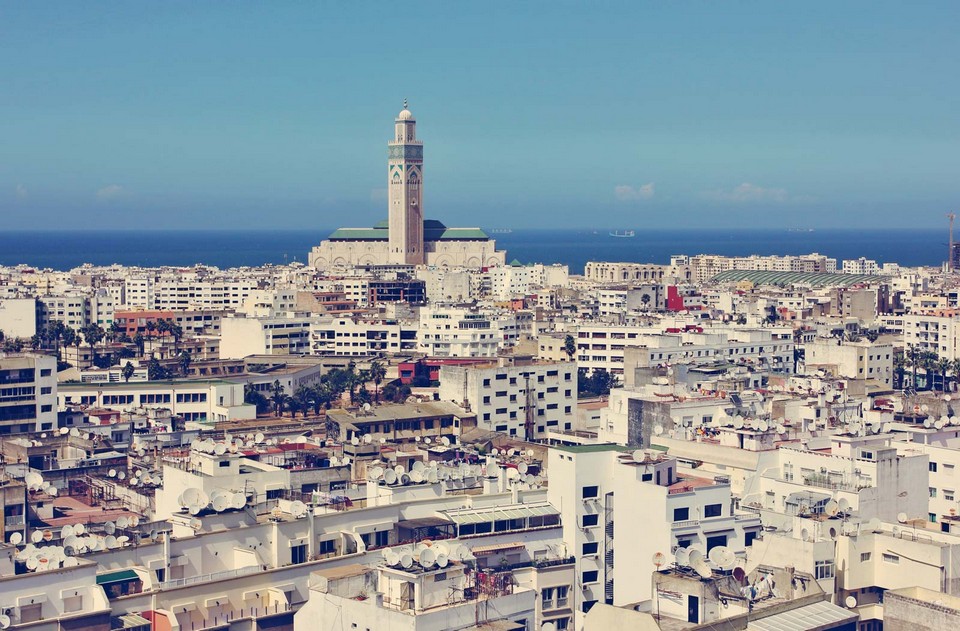
The city of Ouarzazate is known as “The Door of the Desert” because of its location on the edge of Sahara Desert. This place is a “quiet” land of palm trees, sandy roads and buildings bearing the image of fortresses. In particular, Ouarzazate also owns two largest film studios in the world, Atlas Studios and CLA Studios. Moreover, there are many movies using the setting here, so this city is also known as the “Hollywood of Africa”. When coming to this city, the following attractive tourist attractions will surely attract you: First is Sahara desert, Todra gorge – a great natural wonder or visit Taourirt Kasbah, which is an important histrical fortified residence complex of Morocco.
The city is now the capital of Morocco and was established in the 12th century. Rabat impresses with its diverse landscape of flowers, plants and trees. In addition, monumental works must be mentioned gates such as the Great Gate of the Kasbah (Bab Oudaya) and The Gate of Ambassadors.
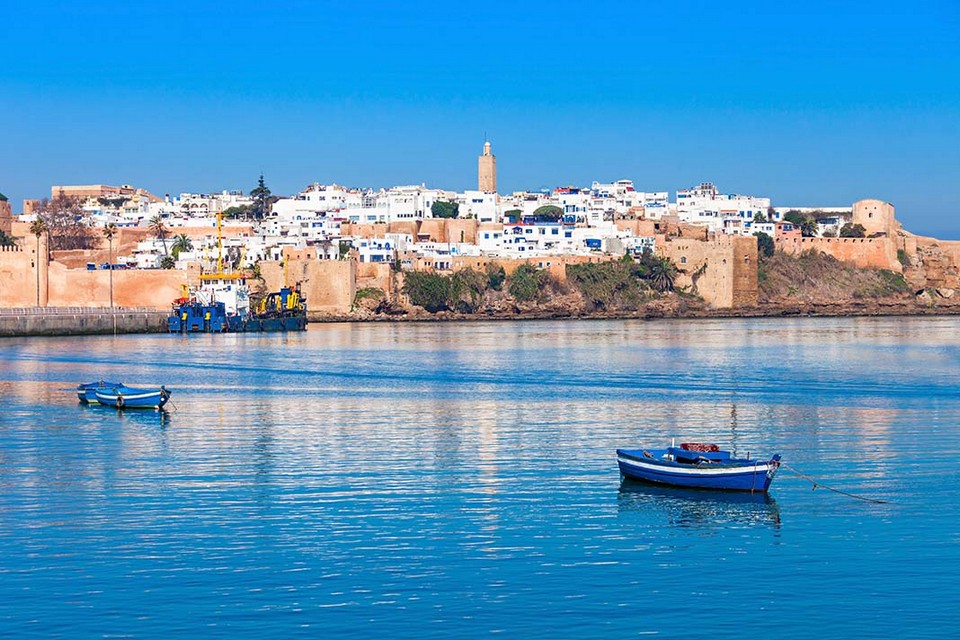
Some notable attractions in Rabat: Mamora forest, beautiful beaches, mosques, Mausoleum of Mohammed V, ancient city (medina), Royal square, Chellah medieval fortified, … Not only that, tourists can visit the National Craft Museum or stop at the street cafes while wandering in Rabat.
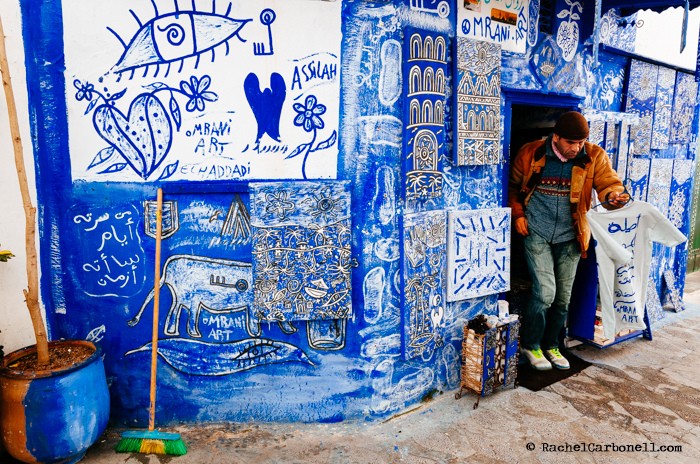
The town of Asilah or Arzeila is located in the northwest region on the Atlantic coast of Morocco. It is located in the northern Atlantic Bay and is 31km from the city of Tangier. The town has a pretty good depiction of Moroccan culture, including murals.
Morocco travel blog: Where to stay?
Room rates in Morocco are much cheaper than in Europe. The price for a double room, included breakfast, from 30 USD (guesthouse), 50 – 60 USD (2-star hotel or hostel), with more than 100 USD you can stay in a 4-star hotel.
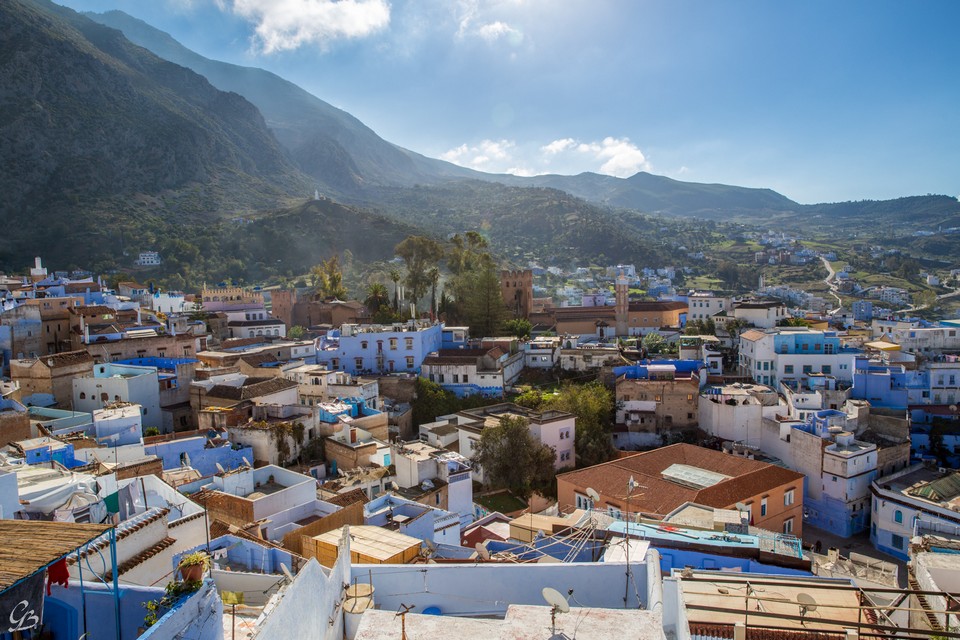
To find top rated and best hotels in cities in Morocco you can go to Booking.com , Agoda.com . If you want a budget stay let choose Airbnb , and use this link https://www.airbnb.com/c/anht5185 , to register for an Airbnb account and book a room, you will get a discount up to $55 for the first booking.
The main attractions are located in medina (old town in city), you should rent a room here for convenience. But also should not be too far from the motorway in case you have bulky luggage, to avoid spend much effort. For example, in Marrakech, you should rent a room near Jemaa el-Fna square, in Casablanca, you should rent near United Nations Square or Casa-Port Railway Station (note that in Casablanca there are 2 big stations that are quite far apart), in Fes, you should rent in Talaa Sghira street or Talaa Kebira street (the beginning of this street near Bab Boujloud).
In the old town, there are usually few big hotels. Instead, there are Dar or Riad which are traditional Moroccan homestays. Riad is usually built in square-shaped, with a skylight and a small garden in the middle, creating a quiet and pleasant atmosphere. You should stay there once, I’m sure you will like it.

Morocco blog: How to buy and choose desert tour?
Coming to Morocco, riding a camel in the sunset or sunrise in the Sahara desert is an experience not to be missed. In the medina in Fes and Marrakech there are many tour operators offering tours to the desert, but in reality there is only one company that organizes it. Tour operators only distribute as travel agents, so there is no need to book online in advance, so just directly go to their offices to bargain and choose the cheapest one to buy.
Check out the tour schedule here: https://www.igomorocco.com/
There are different types of tours to desert: 2 days to Zagora (Ouarzazate); 3 days to Erg Chebbi (near Merzouga) or 4 days to both places. I found the 3-day tour to Erg Chebbi is the most suitable and reasonable. The 2-day tour to the Zagora does not see the beautiful shimmering sand dunes as shown on Instagram, while the 4-day tour is a combination of the two tours above, you will have to waiting for the car for a long time in Ouarzazate.
The distance from Merzouga to Marrakech and Fes is about the same. If your itinerary includes both of these cities, you can request tour operator pick up in Marrakech, drop off in Fes or vice versa.
If riding a camel, you should wear long pants, not lace or jean pants that are too tight or hard (my own painful experience). Overnight in the desert, you have to sleeping in a Berber tent which is very cold, need to bring extra warm clothes. In addition, you should bring more toilet paper – “paper attached to the intestines”, haha!
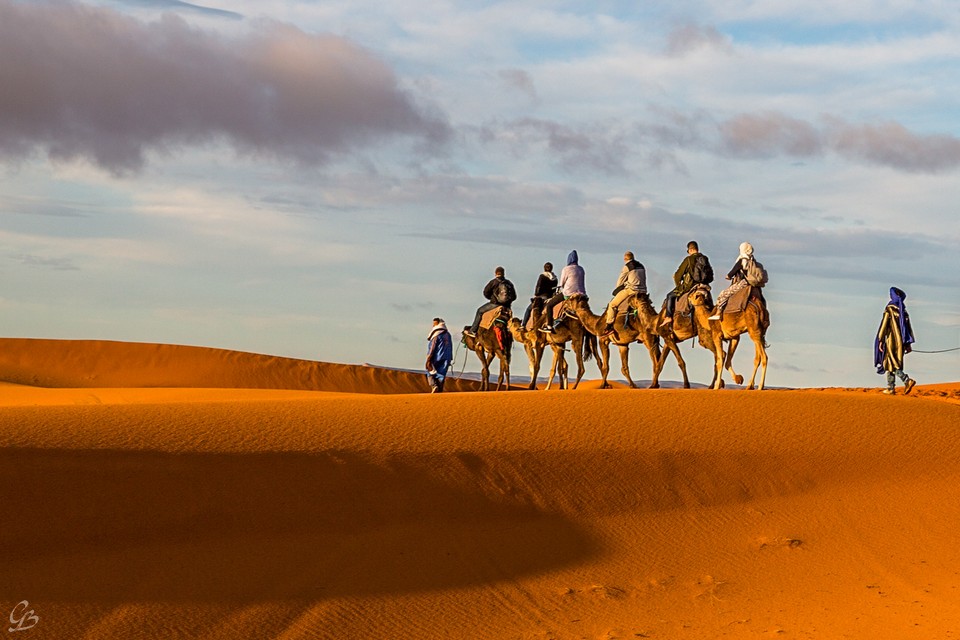
Morocco travel blog: What to eat?
Moroccan food is delicious and rich. Traditional restaurants often have tajin, couscous, pastilla or lamb or beef stews. In souks (traditional markets), there are many kinds of savory, delectable grilled meat, skewers. Morocco is a Muslim country, so people don’t eat pork.
Breakfast in riads has many types of breads, cornmeal pancakes, with jams, honey, butter, mint tea, and delicious freshly orange juice.
The Moroccan pastries are also delicious (but very sweet). Some pastry is as small as a thumb, goes well with mint tea.
During the two weeks of eating and drinking all over Morocco, I always remember of eating fresh fish and seafood in Essaouira. If you have the opportunity to visit, do not forget to try.
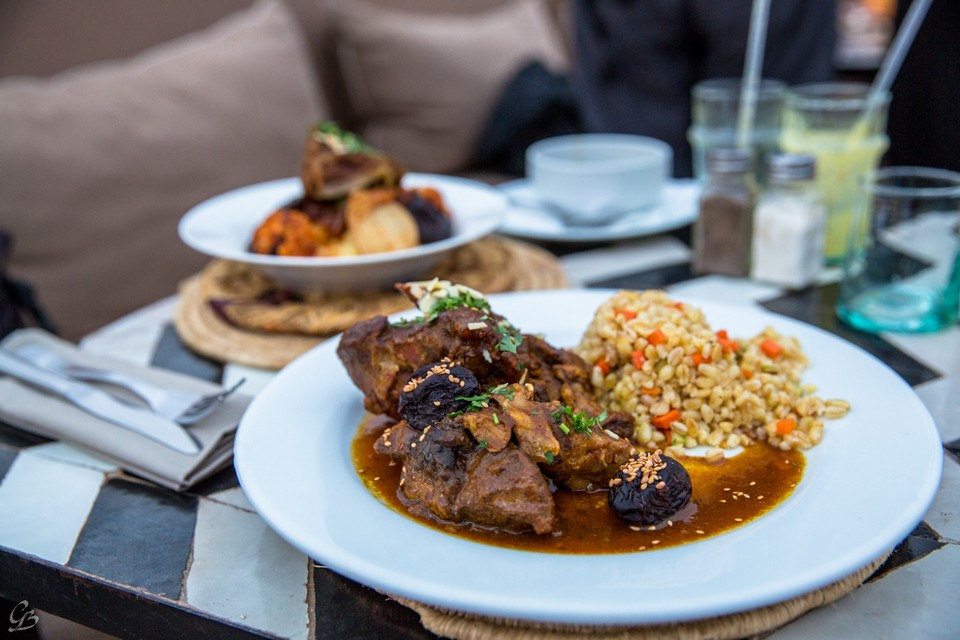
B’ssara (Moroccan fava bean soup)
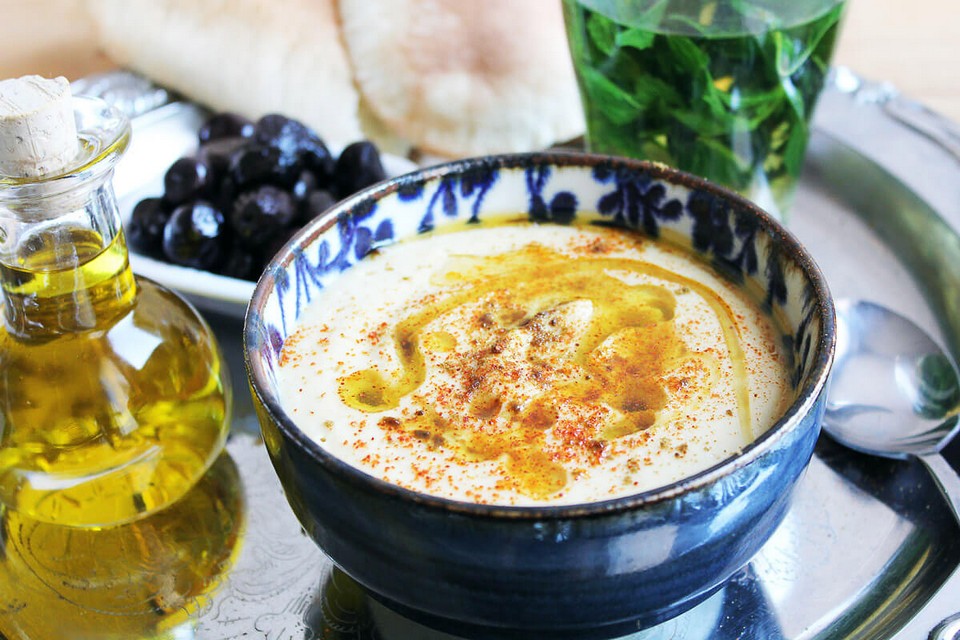
B’ssara is a soup made with simple ingredients using beans, olive oil and local flavor cumin. This is a traditional Moroccan dish often used in daily meals. It can be used in breakfast to start a new day and served with bread. The price for this dish is quite cheap, a bowl costs only a few cents.
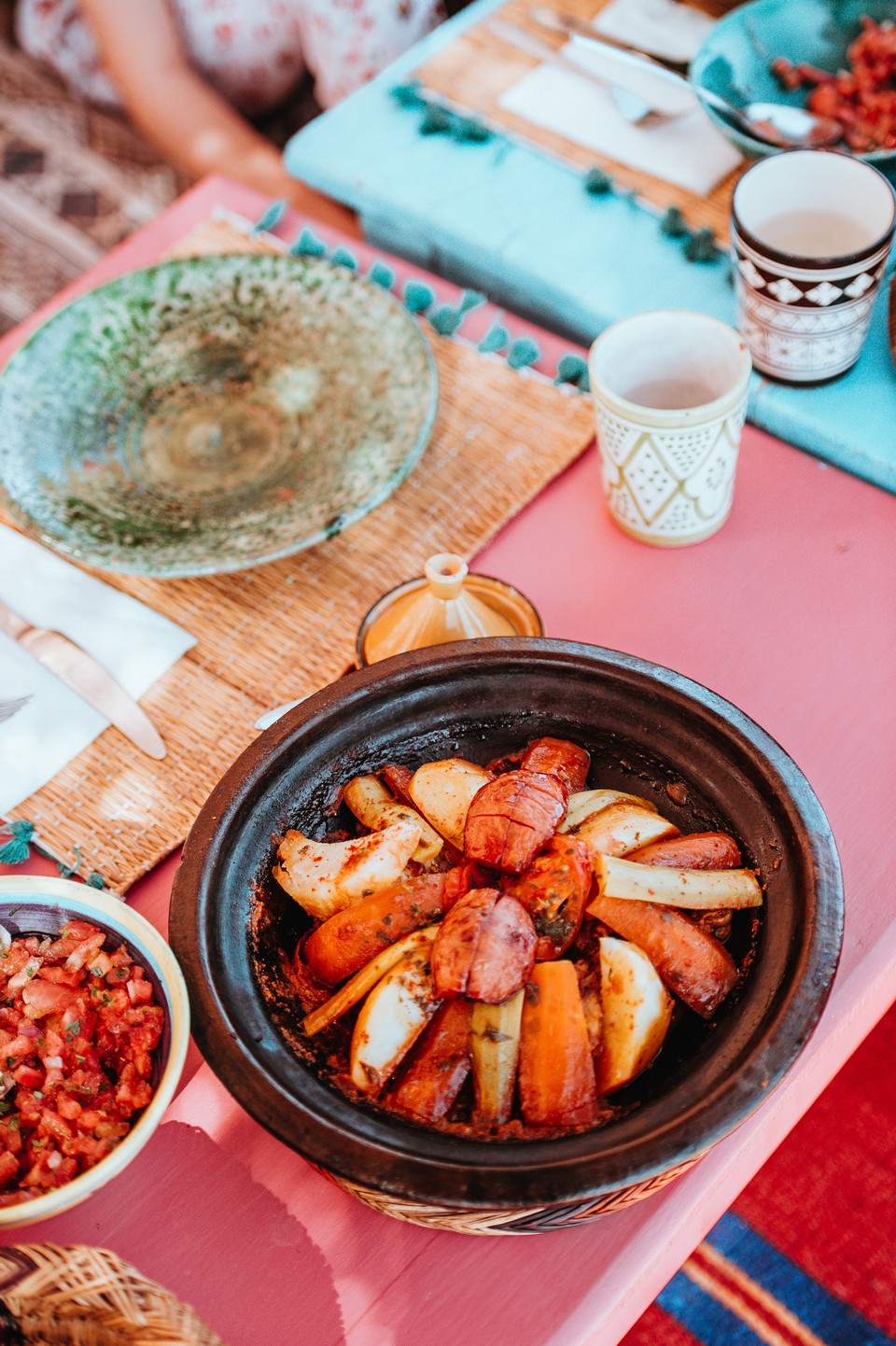
You can’t leave Morocco without trying tagine! This is a stewed soup that is considered a Moroccan’s culinary cultural symbol with its very own taste. Its ingredients include mea, poultry, or fish, vegetables, spices, nuts, all are stewed in a clay pot. It’s available everywhere that you can find easily in this country from high-end restaurants to eateries, roadside food stalls.
Goat Cheese
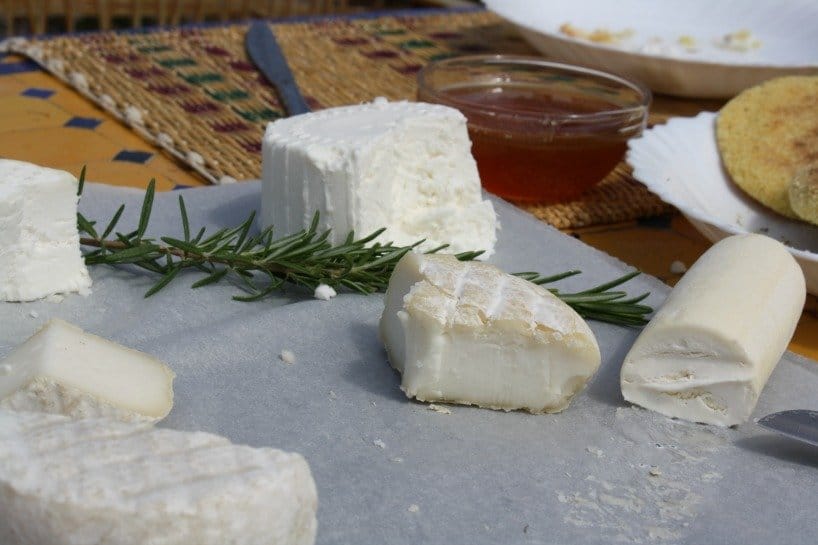
Goat cheese comes in a lot of Moroccan recipes and is amazing. If you are a lover of goat cheese then you will especially love this in Morocco.
Morocco is home to a wide variety of olives. The country is one of the world’s largest producers of olive oil, so it’s the perfect place to sample all kinds of olives.
Almonds are the basis ingredient of many of the delicious things here, especially the orange blossom flavored almond milk and Moroccan spiced almonds.
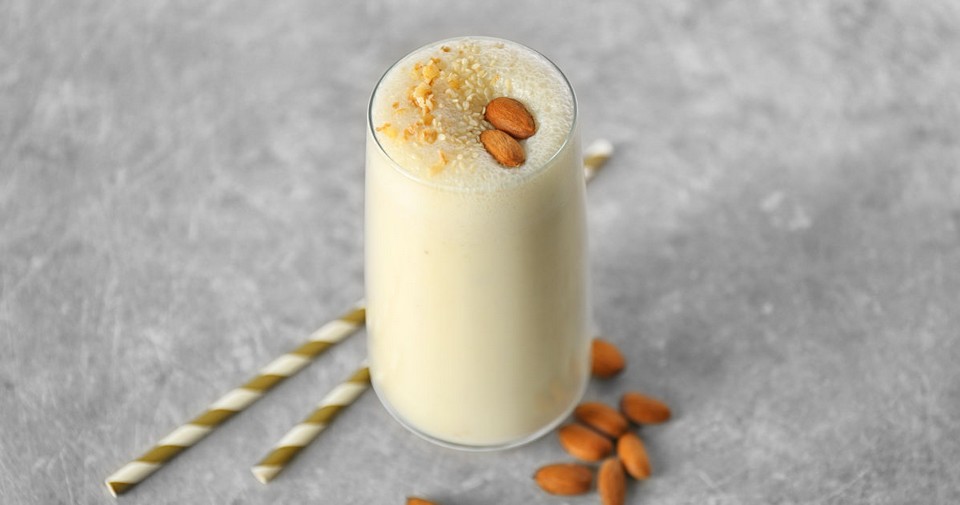
Kefta tagine
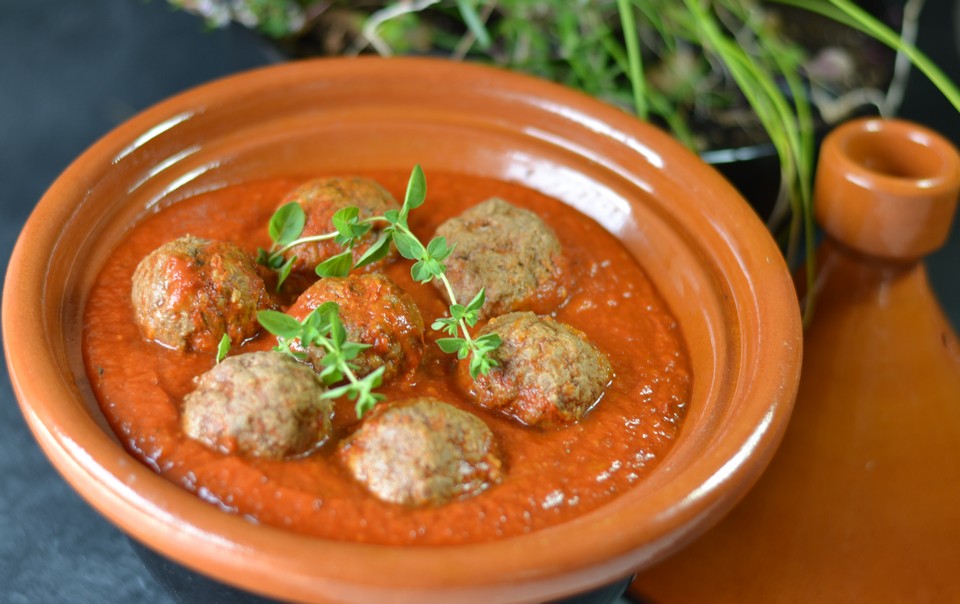
Kefta tagine is the name of a dish made from minced beef or lamb mixed with ingredients and spices such as coriander, garlic, and cinnamon. Then it will be rounded into balls and cooked in tomato and onion sauce under skillful hands of chefs. The final step to perfect the dish make it greasy, a few eggs will be added into the pot.
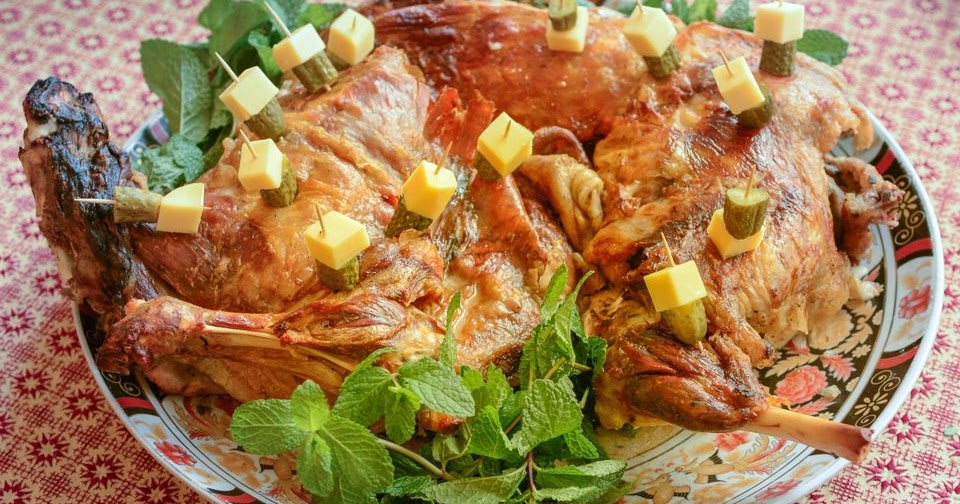
You must definitely enjoy delicious dishes made from lamb, the most famous of which is Méchoui. Previously it was a traditional dish used in wedding parties, later it was mentioned as one of the famous street foods in Morocco. To make this dish, people use a whole lamb, marinate with herbs and spices and then spit-roasted on charcoal.
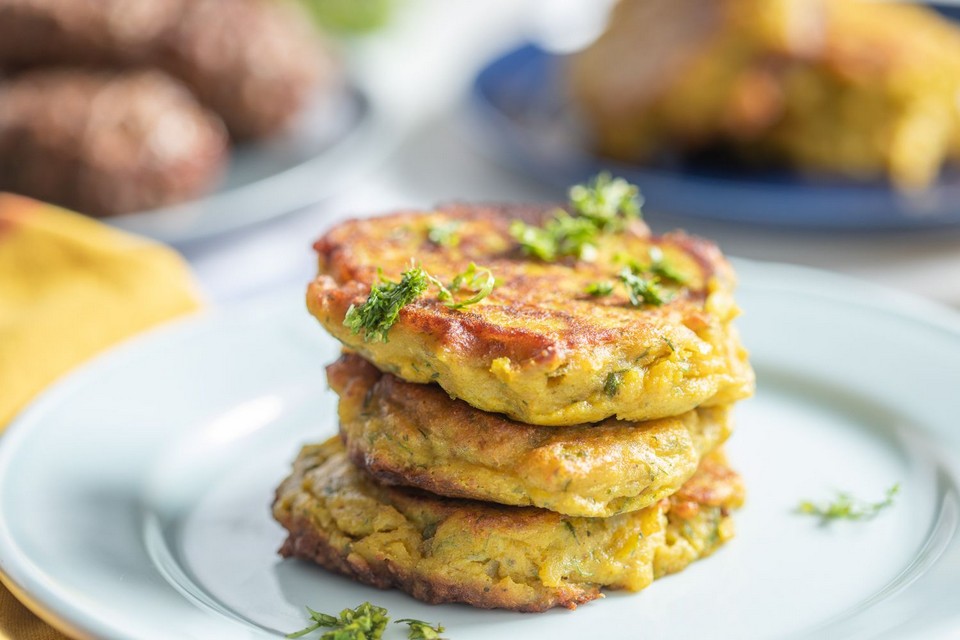
Akouda is a cake made from mashed potatoes combined with aromatic spices. This dish is deep-fried until golden crispy and eaten hot. It can be dipped with tomato sauce, served with salad or sandwiched with bread are all very delicious, this dish is popular in northern Morocco and in old towns (medina).
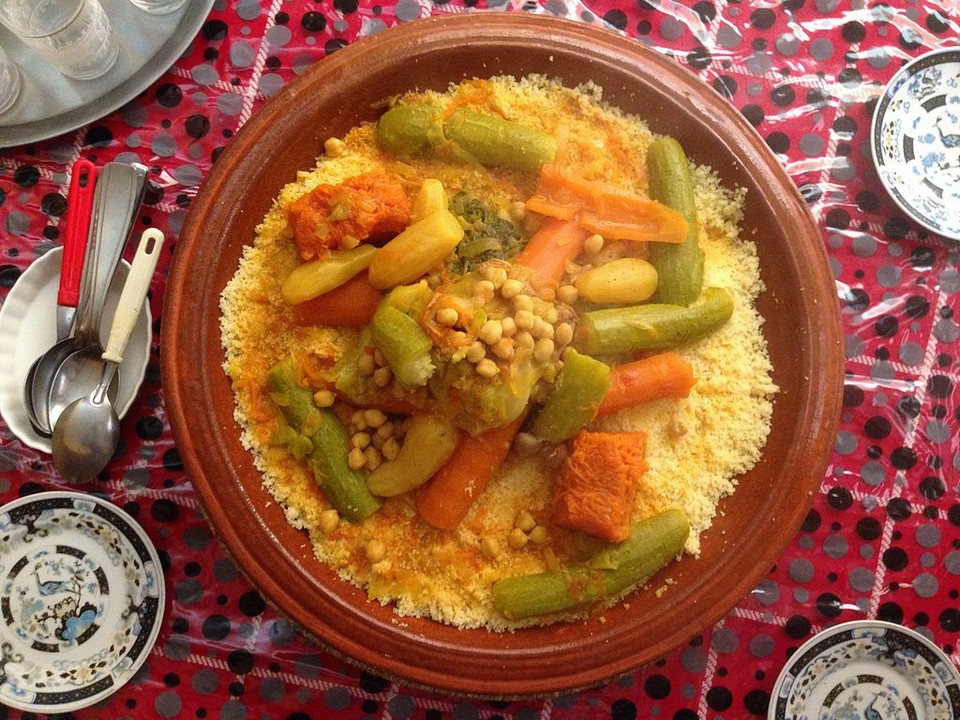
This is a traditional dish associated with Moroccan culture and religion. On the Friday after the weekly prayer, if you travel to Morocco, you will find this dish on all Moroccan family tables. Couscous is stewed from vegetables such as zucchini, pumpkin, eggplant, cabbage, potatoes, carrots, green beans, chicken and beef. Especially served with Leben – a traditional fermented milk.
Chermoula fish
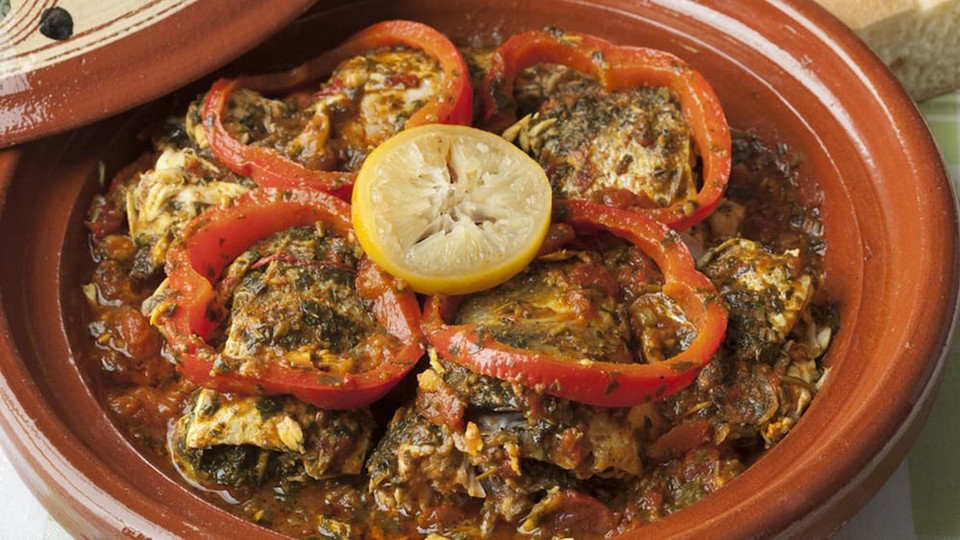
Bordered by Atlantic Ocean and Mediterranean with a long coastline, Moroccan cuisine is rich with a lot of dishes made from a multitude of different types of fish. Chermoula is one of them with an irresistible delicious taste. The dish with a combination of herbs, spices and fish is grilled over charcoal with the highlight of a special sauce.
Deep-fried Moroccan doughnuts
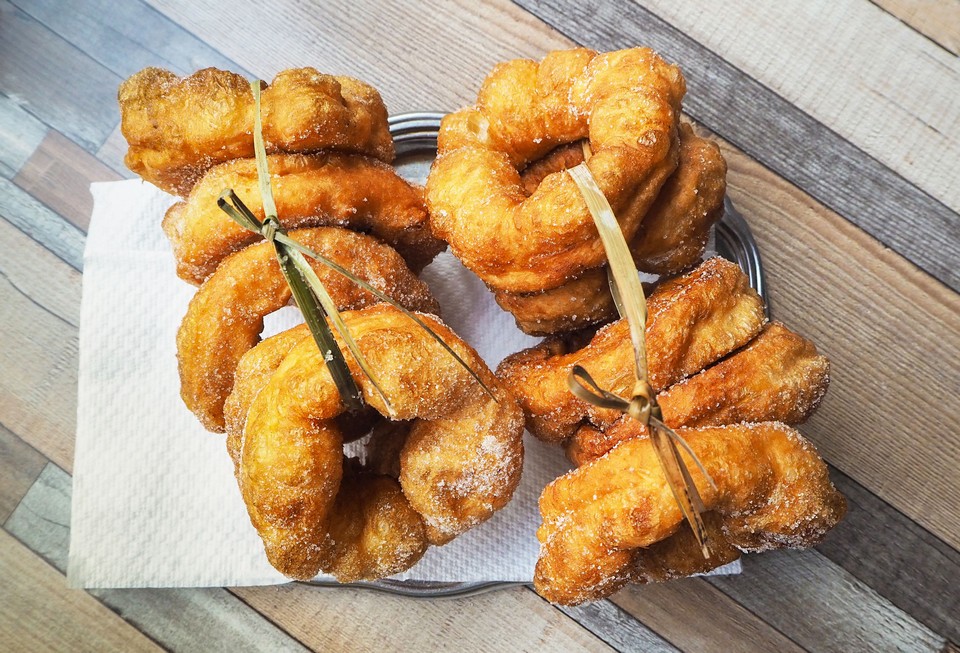
Import from French, a pastry lover’s dream. They are similar to fried donuts and you will find them all over the country.
Moroccan sweets, pastries

You’ll find shops full of sweets, and it’s easy to sample a variety. You can grab some bread and baklava or almond briouats and almost anything dipped in orange blossom water.
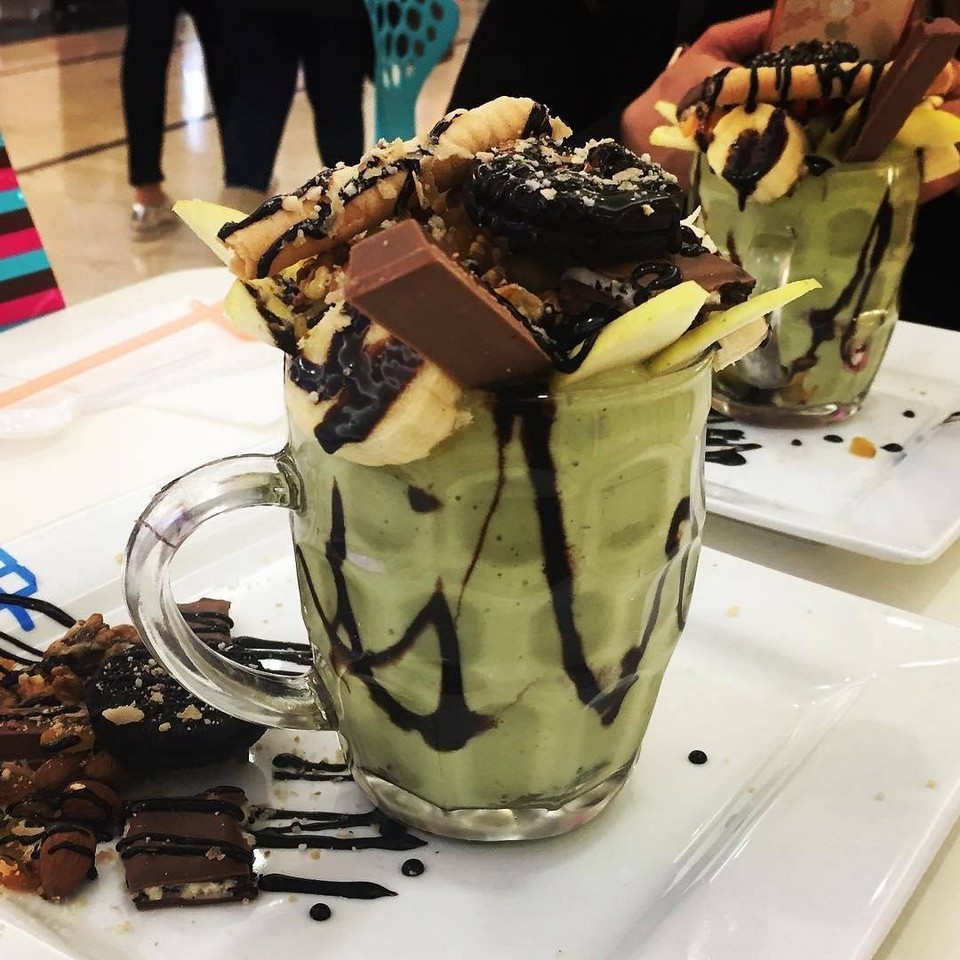
Moroccan smoothie made with avocado fresh fruits such as bananas, apples, kiwi, eggs, milk, and candies or nuts, is a must-try sweet treat of Moroccan cuisine.
Morocco travel blog: What to buy?
Morocco is one of the countries with many specialties. Tourists come here often buy:
- Rug: If you know that Iran has a famous Persian rugs, Morocco is also known as a rug paradise. The most prominent is the unique Berber wool rugs. One useful tip to not buy the wrong type of fake rug is to ask the seller to burn the tassels to try. If it’s real wool, it won’t catch fire, while fakes will catch fire and burn.
- Pottery (the most beautiful in Fes): You can come across all styles and ceramic products that Moroccans still use every day such as vases, cooking utensils, dishes, mosaics, ashtrays… The ceramics in Fes and Safi are best, the two main ceramics production sites of this country, they have a unique Moroccan style.
- Leather goods (in Fes, Essaouira or Marrakech). Head to Marrakesh and Fez to shop for these items, bags and leather products. Here sells a variety of products with vary prices, types and quality for you to choose from. In other cities of Morocco you can also buy these products but it is a bit smelly.
- Spices: Moroccan spices are very popular with tourists to buy as gifts after their trip. Locals sell spices in souks in every city. The most special is Ras el Hanout, which is a spice named after “head of the shop”. The reason it is called that is because the owner of the shop will mix this spices for you. Usually it consists of cumin seeds, cinnamon powder, ginger powder, clove pepper powder and some other spices.
- Herbal, dried rose, dried fruit (Marrakech or Essaouira have the most).
- Argan Oil (in Essaouira): The rarest gift that can only be found in Morocco is argan oil. Because the only place on earth where argan trees grow is near Essaouira. However, it is because of its scarcity that many people fake it to sell at a high price. When buying this oil, you should note that you should refer to a reputable place to buy and from locals to avoid being scammed.
- Decorative lamps and jewelry (in Marrakech)
- Fresh fruit, pomegranate, orange, and cactus are delicious.
Goods in Fes are a bit more expensive than in Marrakech, but much better. The souk near Marrakech’s Jemaa el-Fna square sells a lot of Chinese goods, making it difficult to distinguish the real from the fake items. Shopping in souks in Morocco, you always remember to bargain, starting from 1/3 to 1/2 off the asking price. It’s also a pleasure of going to a market, isn’t it?
Sometimes, you can meet people nearby invite you buy weed, you should be careful because Morocco has many policemen in plain clothes hidden in the crowd.
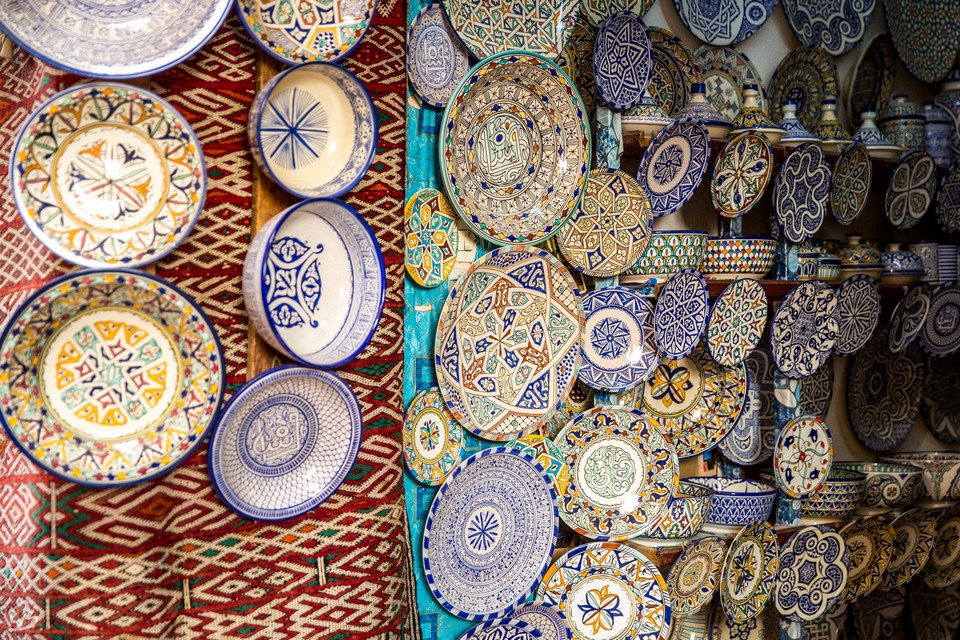
Morocco blog: Traveling cost
- Hotel: $50 – 60 / 1 night (double room in 2-star riad for 2 people)
- Food: $10 – 20 / 1 meal at delicious restaurants, with a nice view
I budgeted $80 – 90 / 1 person / 1 day (excluding airfare) and found it very Okay. If your budget is slightly lower, the total cost will be in the range of $60 – 70 / 1 day for all: meals, transportation, sightseeing (excluding airfare).
Picture below is the courtyard of La Table du Palais. One of the nicest restaurants I’ve been to. 150 DHs for the main course, 220 DHs for the main course and 1 side dish, 250 DHs for the whole appetizer, main course and dessert. If you just want to sit and rest for a while, don’t want to eat, you can order a glass of orange juice or mint tea, very affordable.
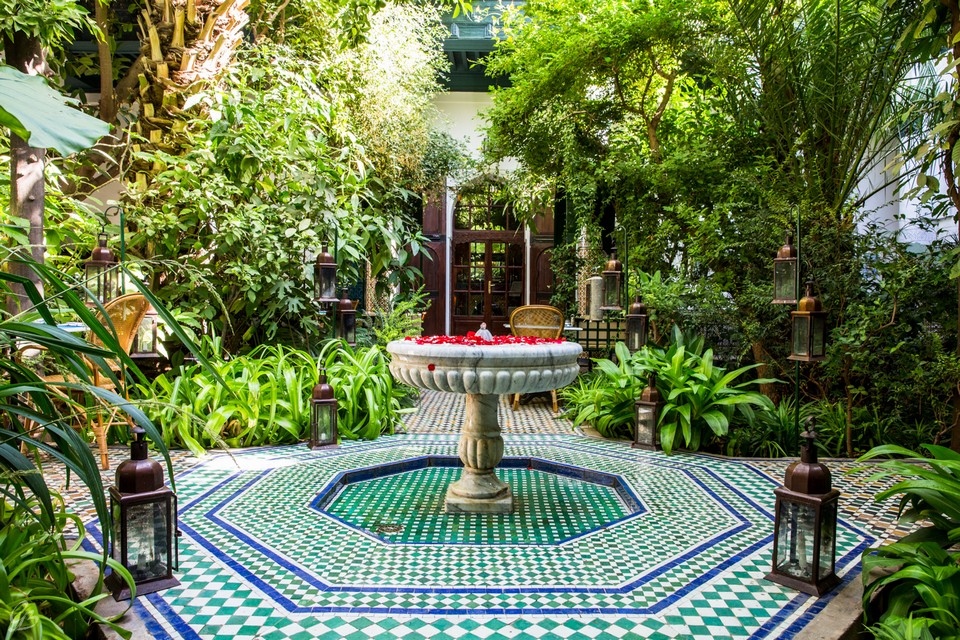
Morocco blog: Suggested Morocco travel itinerary
Over 2 weeks of traveling in this beautiful North African country has helped me gain some experience to be able to arrange a reasonable exploration itinerary.
Here are 2 itineraries that I think are quite reasonable for those who want to once set foot in Morocco:
- Itinerary 1: Marrakech (day 1 & 2) – Ouarzazate (day 3) – Merzouga (day 4) – Fès (day 5) – Chefchaouen (day 6) – Fès (day 7).
- Itinerary 2 (long time): Marrakech (day 1) – Essaouira (day 2) – Marrakech (day 3) – Ouarzazate (day 4) – Merzouga (day 5) – Fès (day 6 & 7) – Chefchaouen (day) 9) – Fès (10th) – Merknès (11th) – Rabat (12th) – Casablanca (13th) – Marrakech (14th).
In addition, if you have more time, you can also add to the itinerary of other tourist cities of Morocco such as Agadir, Tangier. Or, if you are an adventurer, you can also book High Atlas trekking tours departing from Marrakech, visit Berber villages (Imlil, Asni, Ourika, …) and admire the wonderful valleys beauty of this mountains.
These tours are very diverse in terms of places to visit as well as the number of days to go to which help you freely choose, and of course it is also sold a lot at agents in Marrakech.
We had another Morocco trip itinerary for 7 days here: Morocco 7 days itinerary — How to spend 7 days in Morocco perfectly to visit: Fez, Chefchaouen & Tangier .
Morocco travel blog: Some notes before you go
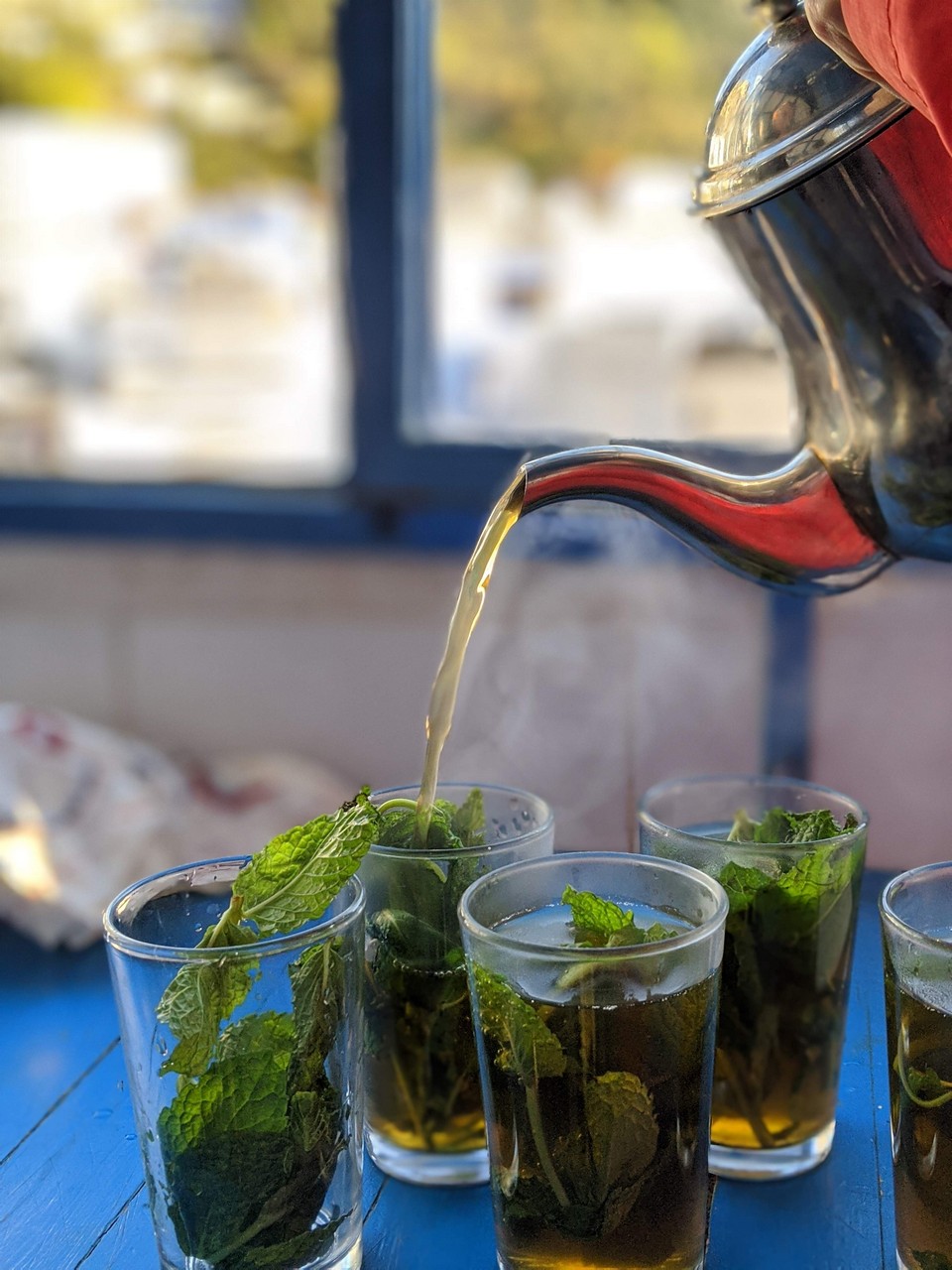
- Money exchange: The exchange rate in the airport is often not as good as outside, you should only exchange a little at the airport and then go to the city center to continue exchange. In Marrakech, on Prince Moulay Rachid street near Jemaa el-Fna square there are many banks.
- Major cities have ATMs, but don’t expect much because the machines are often broken.
- Plugs: Most plugs in Morocco are type C and type E. Standard voltage is 220 V and standard frequency is 50 Hz. An adapter will be the best for most electronic devices. Internet: Although you’ll find that most cafes, restaurants, and hotels in the city have Wi-Fi handy (and cheap!) for 4G while you’re traveling in Morocco. You can buy a Maroc Telecom SIM card for just 40 dirhams (just over $4) and get 10GB of data for 100 dirhams ($10).
- What to wear? Choose light, appropriate clothing. Be sure to always cover your shoulders and knees like using scarves and maxi skirts. They are ideal for warm sunny conditions and that shows respect for the culture – which in turn will get you treated with respect.
- Do not take pictures without permission in Morocco. They will respond as soon as you press the button. Many people here, and especially the elderly, think that if they are photographed, their images will be used for bad purposes. They are quite negative because of the influence on religion and spirituality. Usually people in tourist cities and young people will be more open, but you should ask before taking photos.
- Long pants should be worn when riding a camel, it is not denim or lace fabric and too tight will make you uncomfortable when sitting for more than 1 hour on a back of a camel. In addition, sleeping in a tent in the desert should wear enough warm clothes. Besides, it is necessary to prepare necessary personal belongings and drinking water, but it must be compact and hygienic.
- Do not go alone at night when traveling to Morocco, you need a trusted person to accompany you. Even if you are a muscular man, you should not go at night, especially in the desert, in a remote place. Another reason is because Moroccan roads are not always convenient and well-lit, so you should keep this in mind when traveling.
- Public toilets in Morocco are chargeable, except for hotels and restaurants. At some places, there is no collection, but there are still people standing to remind you not to forget to put tips in a box after use.
Some best day tours, trips, activities and transfer services, tickets in, from and to Morocco you can refer to
- 2D1N Zagora Desert Tour from Marrakech
- Ourika Valley Day Tour from Marrakech
- Essaouira Day Trip from Marrakech
- Agadir Day Trip From Marrakech
- Moroccan Cooking Class in Marrakech
- Marrakech City Tour
- Quad Biking Experience in Marrakech

Are you looking for more top things to do in Morocco: Tours, activities, attractions and other things? Let’s check it out here. And here .
Related articles
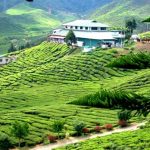
RELATED ARTICLES MORE FROM AUTHOR
Guide to shenzhen nightlife — top 5 things & what to do in shenzhen at night, ladakh trip cost per person from delhi — how much does ladakh trip by bike cost, india travel tips — 25+ what & things to know before traveling to india, coron itinerary 5 days — what to do & how to spend 5 days in coron.

Arashiyama travel blog — The fullest Arashiyama travel guide with top things to do in Arashiyama
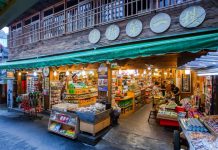
Explore Fenqihu old street — What to do in Fenqihu in a day trip?
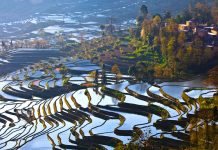
Where to go in Kunming? — 15+ top Kunming attractions & best places to visit in Kunming
Must eat in melaka — 10+ famous malacca street food & must try food in melaka.
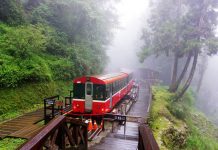
What to do in Alishan? — 5 top attractions & best things to do in Alishan, Taiwan
Editor picks.


Guide to Shenzhen nightlife — Top 5 things & what to...

Ladakh trip cost per person from Delhi — How much does...

India travel tips — 25+ what & things to know before...
Popular posts.

What to buy in USA? — 17+ must buy in USA...

Must buy souvenir in Taiwan — Top 17+ most famous, cheap...

Must buy in Korea — Top 23 cheap, famous & best...
Popular category.
- Inspiration + Guide 1459
- Trip Inspiration 468
- Thailand 209
- Food + Drink 208
- Coasts + Islands 193
- South Korea 168
- Vietnam 166
- Travel Photos 144
- Work for Us
- Terms & Conditions
- Privacy Policy
Morocco Travel Guide
Stunning interior gardens, courtyards, and delicious tajines, spanning from the Atlas Mountains to the Sahara.
Best time to visit Morocco
Rent a car in morocco, best places to visit in morocco, sahara morocco: visit the merzouga desert on a 3-day tour, 9 best things to do in chefchaouen, morocco, 11 things to do in fes, morocco (complete guide), map of morocco, weather in morocco.
Morocco's weather is primarily dry year round, with mild winters, and intensely hot summers. Springtime, from March to May, is the most beautiful time to visit as landscapes bloom. September to November are also very pleasant months, ideal for exploring.
Destinations in Morocco
Things to do in marrakech, morocco: a 3-day guide, how to rent a car in morocco, best travel insurances.
- Find Hotels via Booking.com
- Find Hostels via Hostelworld
- Find a Rental Car via Sunny Cars
- Find Flights to Morocco via Skyscanner
- Get a Travel Insurance via Heymondo
- Book Tours & Attractions via GetYourGuide
- Book a Bus/Train/Transfer via 12Go
- Get a Visa via iVisa
- How to pack light for your trip
- How to plan your trip our tips
Why is Morocco worth visiting?
Morocco is an incredibly stunning and diverse country, full of wonder. Home to the Sahara desert, the Atlas Mountains, stunning architecture, lively medinas, calming hammams, bustling souks, and tranquil gardens, it’s a destination that’ll overload your senses but captivating to explore.
Is Morocco cheap to visit?
Enjoy this Moroccan charm without breaking the bank! While there are some very luxurious hotels and experiences in Morocco, it tends to be a very affordable travel destination; with tempting stalls selling delicious food for $5 and quaint riads starting at $20 a night, there are options for everyone.
Can I drink tap water in Morocco?
While most locals will drink tap water, it’s recommended to avoid it as a traveler. Stay hydrated by using a reusable water bottle with a filter system, or purchase a large bottle that you can refill from during your trip.
Do I need a visa for traveling in Morocco?
Good news! Most travelers can explore Morocco visa-free for up to 90 days. Check your country’s specific entry requirements before your trip, and when entering the country, make sure to get your passport stamped on arrival.
What language do they speak in Morocco?
Moroccan Arabic is the native language of Morocco, amongst other languages, depending on the area. Virtually all Moroccans will be able to speak French, and in the main tourist areas, English is also widely spoken, so you should have no problems getting by.
Do I need travel insurance for Morocco?
While traveling around beautiful Morocco, unforeseen circumstances may arise, like lost belongings and medical emergencies. Having travel insurance will keep you protected on the go and ensure peace of mind.
Is Morocco safe?
Morocco is a safe country to travel to, with friendly locals keen to chat. Petty crime does exist, so it’s always a good idea to exercise caution, leave valuables out of sight, avoid back alleys, and make sure not to walk alone at night. However, for the most part, Morocco is a beautiful place to explore worry-free!
What power plug type does Morocco have?
The standard plug used in Morocco is the two round pin plugs, known as plug type C and E. Make sure to bring your adapters or purchase one at the airport to keep connected during your trip.
Why do people love Morocco?
Morocco is loved for its incredibly diverse experiences and sensory delights. One moment, you can be experiencing sunrise on a camel in the Sahara Desert , the next enjoying a delicious tagine on a rooftop in Marrakesh, or wandering the blue streets of Chefchaouen. Morocco has it all!
Travel in Morocco
A mesmerizing land of diversity, Morocco guarantees to enlighten all your senses. From majestic mountains, serene beaches, and quaint gardens to bustling medinas, camel riding in the desert, and tea with Berbers, a vacation in Morocco promises to be full of surprises.
How to plan your trip to Morocco
Use our Morocco travel guides to create the ultimate adventure! Whether you’re planning a weekend break to Marrakech , keen to get lost in the ‘Blue Pearl’ city of Chefchaouen , or looking for a breathtaking Sahara desert experience, our guides have you covered with all you need to plan the perfect Morocco holiday .
Backpacking around the country? 10 days in Morocco gives you a great amount of time to experience the best places in Morocco .
Best time to visit Morocco
Heading on vacation to Morocco ? Before your trip, it’s essential to pick the best season to explore this bustling destination!
Spring and Autumn (March – May, September – October): The best time to visit Morocco is in Spring and Autumn, between March and May and September and October. This period brings warm temperatures between 20°C – 30°C and sunny skies, making travel throughout the country very pleasant. Spring is also when the landscape starts to bloom, making it incredibly beautiful!
Winter (November – February): Morocco rarely sees any rain, so while winters are colder, they’re still dry and great for exploring cities, ranging between 16°C and 21°C. The months of November and February can be amazing times to visit; tourist hotspots are quieter, and the temperature is still warm, with only a light jacket needed for your trip. While the rest of Morocco remains relatively mild, if you’re looking for snowy adventures, head to the Atlas Mountains, where you’ll have the opportunity to go skiing and snowboarding.
Summer (July and August): July and August are the height of the summer and the hottest months of the year. We’d recommend avoiding these months as the heat can become extremely unpleasant in the cities. The coast can be a little more bearable, so this may be the best time to visit Morocco if you’re planning on a relaxing beach vacation.
Other than the summer months, which may be too hot for most, Morocco’s weather is typically beautiful and sunny year-round, perfect for exploring or even doing some snowy activities!
Coastlines and beaches in Morocco
Morocco might not be the first place that pops to mind when you think of sun, sea, and sand, but with nearly 2,000 km worth of coastline, Morocco has some incredible and unique beaches to explore.
One of the most laid-back coastal towns is Essaouira, a vibrant fishing port and medina, home to a long stretch of golden sand perfect for watersports. For a more unique experience, head to Legzira Beach, home to natural piercing red rock arches — a mesmerizing sight to behold. If you’re looking for the best places in Morocco to surf, the relaxed fishing village of Taghazout is home to amazing waves, with Devil’s Rock Beach becoming a hot spot for surfers worldwide.
From sunbathing on the Mediterranean sand to surfing the chilly Atlantic waves, there’s something for everyone, offering a calming escape from the hustle and bustle of Morocco’s lively cities.
Food, culture, and religion in Morocco
From the divine aromas of Moroccan cuisine to the calming calls of prayer and the vibrant colors of the medinas, Morocco is a place where food, culture, and religion beautifully intertwine, creating a uniquely immersive experience.
Food: The heart of Moroccan culture lies in its cuisine, bursting with aromatic flavors and spices. Delicious dishes like tagines, couscous, and m’hanncha take you on a journey with your taste buds filled with different spices, unique to whoever created them. Tea also plays a huge part in Moroccan life, taking great care of every step of the brewing and pouring process. This tradition gestures hospitality and friendship, sharing alluring stories along the way.
Culture: Moroccan culture is also vivid in its intricately designed architecture and artwork, with palaces covered in elaborate styles and souks showcasing craftsmanship through woodwork, textiles, and ceramics; each piece of art tells a story.
Religion: Religion plays a significant role in Moroccan life, with most of the population following Islam. As you travel Morocco , you’ll see and hear this influence through the magnificent mosques and soothing calls to prayer, the daily routines of locals, and their customs.
Why you should travel to Morocco
Morocco is a wonderfully chaotic yet beautifully quiet country. Journey through the bustling medinas of Fes and Marrakech to the tranquil Sahara Desert and the Atlas Mountains. The diverse experiences Morocco has to offer promise unforgettable memories.
There’s something for everyone in Morocco. For the backpacker looking to immerse their senses, the labyrinthine streets and souks will have you in awe, providing a glimpse into the traditional way of life. For those looking to unwind on their Morocco holiday , the numerous exquisitely designed riads will offer you your own tranquil paradise away from the hustle and bustle. Alternatively, choose the Agafay and the Sahara Desert , with their awe-inspiring landscapes, for epic, adventurous activities and clear, starry nights.
The unique experiences, incredible landscapes, vibrant culture, and warm locals of Morocco are truly something special.
Safety and travel advice Morocco
Traveling Morocco, a tantalizingly mysterious country in Africa, can be a challenging yet rewarding place to visit. Taking necessary precautions will help you get the most out of your trip.
Crime and safety in Morocco: Crime rates are relatively low, but like many tourist destinations, scam artists, overly persistent vendors, and pickpocketers can be expected in popular tourist areas. When visiting busy cities like Marrakech and Fes , you’ll find many touts trying to sell you things or unlicensed tour guides offering to show you where to go for “no money”, but then demanding payment once they’ve taken you there. In this case, simply provide a polite ‘no’ and walk away. It’s always a good idea to exercise caution, leaving valuables out of sight, and at night, making sure not to walk alone.
Solo female travelers: While Morocco is relatively safe to travel as a solo female, it’s always safer to travel with someone else if you can do so, particularly if you’re not an experienced traveler. As a Muslim country, it’s worth respecting local customs by dressing modestly (consider wearing loose-fitting clothing that covers your knees and shoulders to avoid unwanted attention). Also, refrain from walking alone, especially at night and within quieter areas.
Natural Disasters: Although natural disasters occur infrequently, Morocco is in an earthquake zone. Typically, earthquakes are minor and will go unnoticed, but there are cases of more significant incidents, with the last happening in September 2023. While this shouldn’t put you off visiting, it’s essential to familiarize yourself with safety procedures in the event of an earthquake and stay informed during your trip by registering with your embassy.
Driving in Morocco: Renting a car in Morocco allows you the freedom to explore at your own pace. Traffic in the major cities can be challenging, whereas driving in the countryside is extremely quiet, and most main roads are generally well maintained. Don’t be afraid of using the car horn, as it’s seen as a form of communication. Additionally, never leave your passport with the rental company while you hire the vehicle, and always keep your documents close to you, as there are many police checkpoints.
Travel Insurance: Don’t forget travel insurance for your vacation in Morocco! This will cover you for unexpected incidents such as medical emergencies, flight delays, and theft, ensuring you have a worry-free trip. Find the best travel insurance for you .

Is it safe to visit Morocco? Latest travel advice
F ollowing the outbreak of war in Israel and Gaza and the recent escalation of tensions between Israel and Iran, some people may be concerned about the safety of travelling to Morocco or other areas in North Africa and the Middle East right now.
Here’s everything you need to know about travel to Morocco, whether it is safe to visit, and your rights if you do decide to cancel your upcoming holiday.
What does the FCDO say about travel to Morocco?
The Foreign, Commonwealth and Development Office (FCDO) has not issued any blanket advisories against travel to Morocco. This means that travel insurance will be valid when visiting the country.
However, the FCDO has updated its advice to say: “On 13 April 2024 Iran carried out military action against Israel. On 19 April, there have been reports of explosions in Iran, and unconfirmed reports of explosions in Syria and Iraq. Monitor this travel advice and other media as the situation is changing fast. Follow and contact FCDO travel on Twitter , Facebook and Instagram . You can also get email notifications when this travel advice is updated.”
You can see the full Morocco FCDO advice here .
Are flights still operating as usual to Morocco?
Yes. Flights from the UK to Morocco do not go in the vicinity of the Middle East. Morocco is 2,500 miles away from Tel Aviv as the crow flies. By way of comparison, London is closer: 2,200 miles from Israel. So geographical proximity alone should not be a consideration for any upcoming travel plans.
Is Morocco impacted by the Israel-Hamas war?
To date Morocco has not been impacted by the conflict, although large-scale pro-Palestine marches have taken place in the country. The FCDO warns: “There is currently a heightened chance of demonstrations and protests occurring across the country. You should avoid these gatherings, and be aware of the potential for protests to occur spontaneously. Protests can happen at short notice and are generally heavily policed. Demonstrations are mostly peaceful but there has been isolated violence. Demonstrations and protests may lead to increased travel disruption in affected areas.”
Is Morocco still recovering from the 2023 earthquake?
On September 8, 2023, a 6.8–6.9 magnitude earthquake struck the Marrakesh–Safi region of Morocco. The epicentre was 45 miles (73km) southwest of Marrakesh, near the small town of Ighil and the Oukaïmeden ski resort in the Atlas Mountains.
Some 3,000 people were killed and more than 6.6 million Moroccans were affected by the earthquake, according to the Moroccan government.
There was considerable devastation across the remote mountain communities of the Atlas Mountains, and Marrakech, a city popular among tourists, experienced significant damage including building collapses. In some parts of the country the rebuilding process continues, but Marrakech’s airport is open and the country is very much open for tourism once again.
On the subject of earthquakes in Morocco, the Foreign, Commonwealth and Development Office (FCDO) says: “Morocco is in an earthquake zone. Minor earthquakes happen occasionally. The last major earthquake was in 2023, which killed almost 3000 people. Familiarise yourself with safety procedures in the event of an earthquake and take note of any instructions in hotel rooms.”
Is terrorism a risk in Morocco?
In 2018, two tourists were murdered while hiking near Mount Toubkal, and the FCDO advises: “Terrorists are very likely to try to carry out attacks in Morocco.”
The FCDO adds: “There is an increased threat linked to the number of Moroccans sympathetic or belonging to Daesh (formerly ISIL) and other extremist groups. Authorities regularly disrupt terrorist cells.”
Places at higher risk include crowded areas, government installations, transportation networks, businesses with Western interest, and areas where foreign nationals and tourists are known to gather.
“Be vigilant in these areas and follow any specific advice of the local security authorities,” the FCDO adds.
What if I want to cancel my holiday?
If you have booked a package holiday to Morocco and want to cancel your trip for any reason, contact your tour operator and they might offer flexibility with alternative dates.
But bear in mind that, because the Foreign Office has not issued any formal advice against travel to Turkey, there is no guarantee you will receive a refund, nor will you be able to claim money back with your travel insurance company.
If you have booked flights and accommodation independently, and wish to cancel your holiday, contact your travel providers as soon as possible to see if you can rearrange your plans. Note, however, that given the circumstances, it is unlikely you will receive a full refund.
This story was first published in October 2023 and has been revised and updated.
Sign up to the Front Page newsletter for free: Your essential guide to the day's agenda from The Telegraph - direct to your inbox seven days a week.
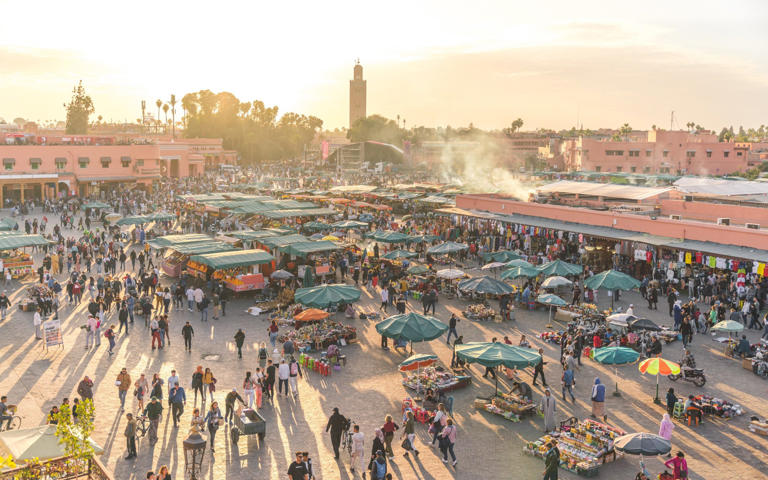
Moroccan Recipes

Zaalouk (Eggplant and Tomato Salad)
Nargisse Benkabbou

Zaalouk With Tahini
Yotam Ottolenghi

Loubia (White Bean and Tomato Stew)
1 hour 35 minutes

Moroccan Nachos
40 minutes

90 minutes

Chicken M’Hammer

Tfaya Baked Chicken

Taktouka With Burrata and Lime-Parsley Oil

Meskouta (Moroccan Orange Cake)
1 hour, plus cooling

Msemen (Moroccan Flatbreads)
1 hour 15 minutes

Saffron Fish With Red Peppers and Preserved Lemon
Joan Nathan

Rose and Almond Ghriba

Mrouzia Lamb Shanks

Pressure Cooker Chicken Tagine With Butternut Squash
Sarah DiGregorio

Moroccan Chicken Pie
David Tanis

Slow Cooker Chicken Tagine With Butternut Squash
4 1/2 to 6 1/2 hours

Baked Coconut Balls
Ron Lieber, Yuki Levinson

Moroccan Moufleta
About 1 hour, plus resting

Spiced Lamb Meatballs With Yogurt and Herbs

Moroccan Shakshuka
Melissa Clark, Mourad Lahlou

Moroccan Semolina and Almond Cookies
Melissa Clark, Dorie Greenspan

Harira Soup

Moroccan Steamed Lamb Shoulder
4 hours, mostly unattended

Moroccan Chickpeas With Chard
Melissa Clark
2 1/2 hours, plus overnight soaking

Daniel Boulud’s Chicken Tagine
Sam Sifton, Daniel Boulud

Basic Harissa

Chickpeas With Mint, Scallions and Cilantro
About 1 hour, plus overnight soaking

Almost-Spit-Roasted Moroccan Lamb
David Tanis, Paula Wolfert
5 to 6 hours

Cumin-Flavored Salt

Moroccan Baked Fish With Onions
1 1/2 hours

Lamb Shank Tagine With Dates
3 1/2 hours

Moroccan Jewish Tanzeya
Joan Nathan, Ron, Leetal Arazi

Lamb Shanks With Caramelized Onions

Broiled Fish With Chermoula
Martha Rose Shulman
15 minutes, plus 30 minutes' refrigeration

Chicken Tagine With Prunes and Olives
Florence Fabricant
1 hour, 15 minutes

Moroccan Carrot-Blood Orange Salad

Moroccan-Style Pumpkin (With Lentils)
Mark Bittman
1 hour 30 minutes

Couscous With Tomatoes, Cauliflower, Red Peppers and Olives
30 minutes, 2 hours' simmer

Moroccan Pancakes
Julia Moskin, Mourad Lahlou

Moroccan Almond-Argan Butter
Julia Moskin, Paula Wolfert

Clay Pot Pork
John Willoughby

Slow-Cooked Goat Shoulder Moorish Style
Mike Emanuel
5 hours 30 minutes, plus overnight refrigeration

1 hour 10 minutes

Aromatic Baked Rice

Moroccan-Style Carrot Salad

Moroccan-Style Cornish Hens with Couscous

Chickpea Tagine With Chicken and Apricots

Lamb Tagine With Green Olives
Amanda Hesser, Andrew Carmellini
2 hours 50 minutes
Or try our popular searches
- Active Adventures
- Beach Escapes
- Bucket-List
- Escape The Crowds
- For First-Timers
- Group Bookings
- Wildlife Trips
- Winter Getaways
- Safari Adventures
- Ambassador Adventures
Trip duration

New and trending
- Our Newest Adventures
- Bestselling Adventures
- Iconic Flash Pack Experiences
- Coming Soon
- Meet Your Travel Experts
- Meet your Pack Leaders
- Don’t be a tourist. Be a Flashpacker.
- The Flash Pack Foundation
How it works
- Payments, deposits & instalments
- Travel Extras
- About Solo Travel
- Careers at Flash Pack
- Partner as a Travel Agent
- Trip terms and conditions
- Safety with Flash Pack
- Flash Pack’s privacy policy
Latest deals
- Your latest travel offers
- Your last chance to book
Insider trips
Sorry no insider trips are available right now, check back soon.
- Feed your inspiration with all the latest stories from our content hub.
- Relationships
- Career Tips
Top stories

Friendship Tips

Travel Tips

- See all articles
Favourite Trips
Destinations
Morocco Group Tours for Solo Travellers
Travel solo as part of a group tour to Morocco
Why travel solo to Morocco?
With less than an hour between Tarifa and Tangier, Morocco is where North Africa brushes up against Moorish southern Europe. In Morocco, Arab and European influences happily coexist, all underpinned by ancient Amazigh (Berber) culture.
The range of landscapes in Morocco is just as varied and breathtaking: the Atlas Mountains, peaking at Mt Toubkal’s 4,167m; the vast Sahara Desert; and the rugged Atlantic coastline, serving some of the best surf on the continent.
Then, there are Morocco’s colour-rich cities. Marrakech, with its labyrinthine medina and traditional textiles. The Rif Mountain ‘blue city’ of Chefchaouen, with its sapphire-washed streets and alleyways winding into the hills. Casablanca, elegant and sea-washed. And many more, brimming with history and character…
Offering good value for travellers and a year-round temperate climate, it’s no wonder Morocco consistently ranks as one of Flash Pack’s most popular destinations. You’ll quickly fall in love – and be back for more.
Please see our FAQs page about travel to Morocco after the September 2023 earthquake.
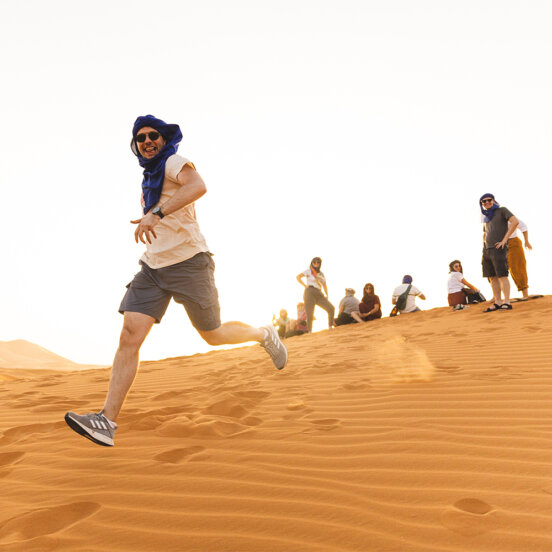
Top places to visit in Morocco
Marrakech’s medina is a walled city, built during the Berber Empire. Meander through souks sampling local cuisine, tour ancient ruins and admire its mix of mosques, palaces and markets.
Take to the beach in Essaouira – a beautiful, breezy port city on Morocco’s Atlantic coast. Nicknamed the ‘Wind City of Africa’, it’s particularly popular with windsurfers. Escape the coastal currents in the winding spice-filled alleys of the medina.
A small fishing village north of Agadir is home to some of the best waves in Africa. If you prefer calmer waters, pop over to Paradise Valley on the Tamraght River to take in a palm-lined gorge, complete with pools and waterfalls.
Casablanca is Morocco’s largest city, a commercial hub boasting a blend of Moorish, art deco, and French colonial influences. Admire the graceful architecture with a fresh Atlantic breeze to keep you cool.
Trips to Morocco
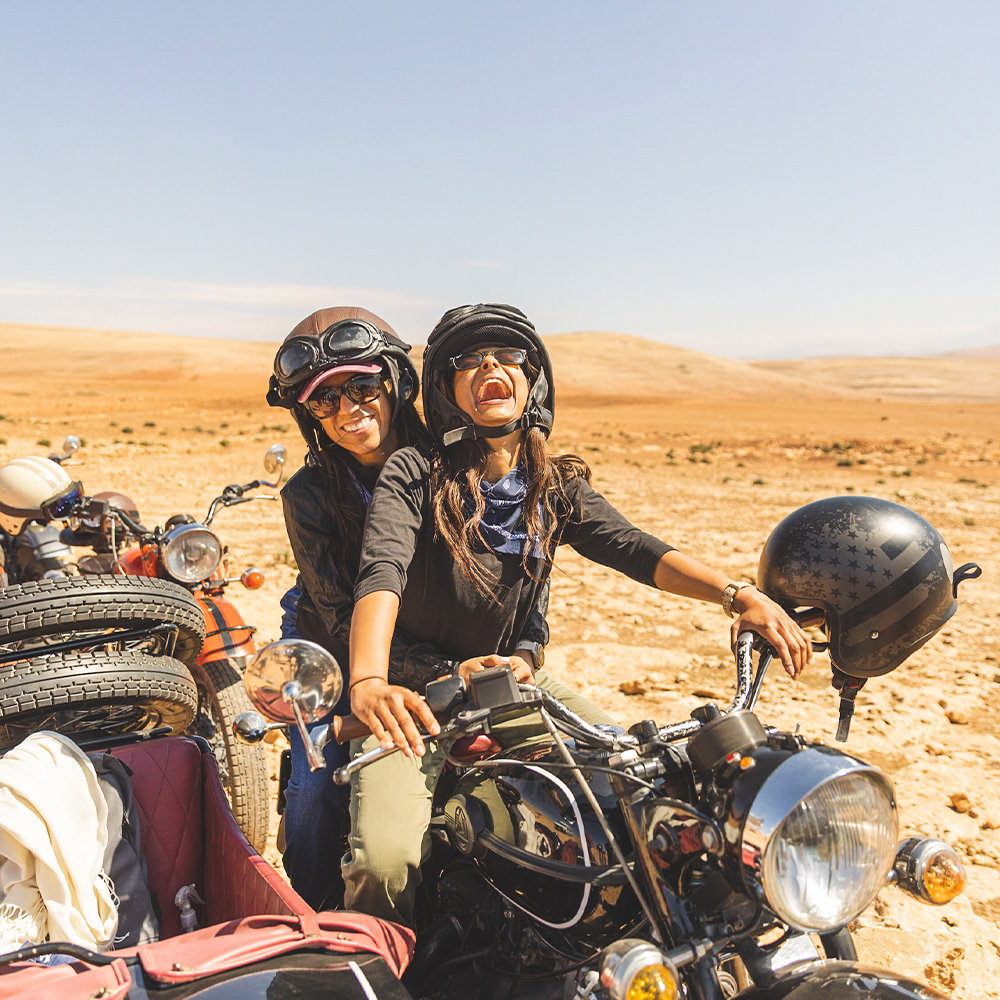
Morocco Highlights: From Coast to Medina
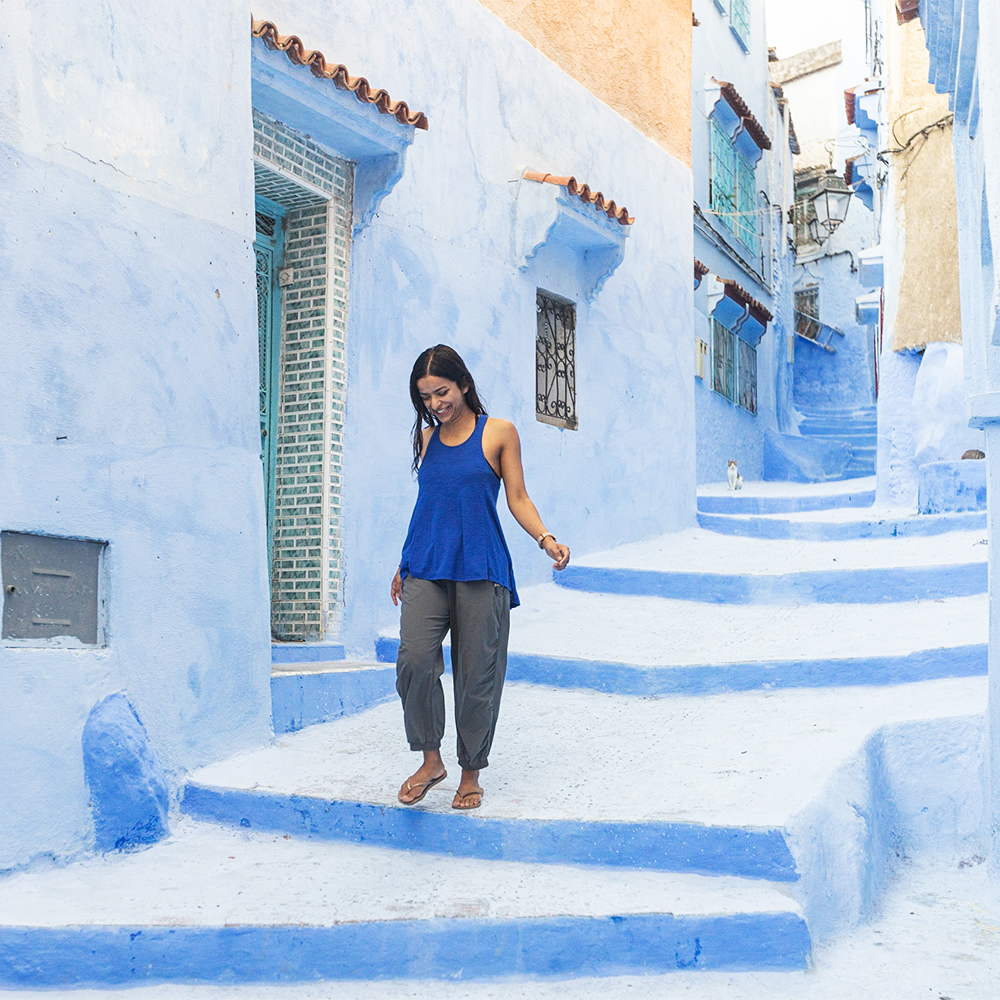
The Best of Morocco
Morocco facts, what are the national languages.
Arabic and Berber
What is the currency?
Moroccan dirham
Set your watches for GMT+1
Top three experiences
1. Visit a hammam 2. Take a camel ride through the desert 3. Surf some of the best waves in Africa
Top five dishes to try
1. Tagine – slow-cooked aromatic stew 2. Chicken pastilla – pie with crisp pastry 3. Maakouda – crispy potato fritters 4. Zalouk – aubergine and tomato salad 5. Couscous – crushed durum wheat semolina
Average temp in high season
What's the weather like?
Morocco has a subtropical desert climate with average temperatures in the high season of 25ºC (77ºF) and 12ºC (54ºF) in winter.
Subscribe to our newsletter
Sign up to our newsletter.
Hear about our new adventures before anyone else
Hear about our new adventures before anyone else.
Be the first to hear about exclusive Flash Pack offers.
Access exciting competitions.
Receive weekly inspiration and travel stories from solos just like you.
You are browsing our US website.
Please choose your current location below:
You are browsing our UK website.

Mary Cosby allegedly calls Lisa Barlow's son, 12, the R-word amid...

Why Tom Cruise 'absolutely dumbfounded' guests at Victoria...

Kim Kardashian loses more than 100K followers after Taylor...

Rebel Wilson claims a royal family member once invited her to a...

Melinda Gates' breakup from former Fox News reporter Jon Du Pre...

David & Victoria Beckham were so 'starstruck' they kept a Tom...

Ariana Madix reveals whether she'll return to 'Vanderpump Rules'...

The unlikely political figure Lauren Sánchez begged for help...
- Click to share on Facebook (Opens in new window)
- Click to share on Twitter (Opens in new window)
- Click to email a link to a friend (Opens in new window)
- Click to copy URL
Inside Kelly Ripa and Mark Consuelos’ ‘magical’ Morocco getaway
- View Author Archive
- Follow on Twitter
- Get author RSS feed
Thanks for contacting us. We've received your submission.

Kelly Ripa and Mark Consuelos are taking fans inside their luxurious getaway to Tangier, Morocco.
The “Live with Kelly and Mark” stars, both 53, took to social media over the weekend to share pics from their relaxing vacation and luxurious accommodations at the Villa Mabrouka .
“Scenes from a magical weekend,” Ripa wrote via her Instagram Stories, sharing a stunning view of the ocean, flowers and palm trees.

Ripa also included plenty of pics from the luxury hotel they stayed at, which starts at $530 per night . One of the snaps showcased the entryway with its black-and-white checkered floors and a gorgeous stained glass chandelier hanging from the grand white ceiling.
The longtime television personality was even able to sneak in a mirror selfie in the entryway that showed her smiling while wearing in a casual athleisure outfit.
Of course, Ripa’s posts also included plenty of pictures of her and her husband of 28 years enjoying their escape from reality.

When the duo weren’t staying at the hotel, they ventured to the Tangier American Legation –– America’s “oldest diplomatic property” and museum.
Consuelos appeared to also be taking photos while walking around the garden and taking in the stunning views.
After exploring during the day, the couple got all dolled up to attend a party at the hotel’s terrace restaurant, L’Orangerie.

Ripa wore an ivory blazer over a white dress, while Consuelos opted for a long white T-shirt under a tan blazer and tan pants.
For more Page Six you love…
- Listen to our weekly “We Hear” podcast
- Shop our exclusive merch
The long white dining table at the bash seemed to be set for around 50 guests and had small table lamps and vases with white flowers running down the center.
The Villa Mabrouka opened its doors last spring and has just 12 rooms in the entire property, which once belonged to famed fashion designer Yves Saint Laurent.

The hotel includes views of the Mediterranean Sea, two crystalline swimming pools, three restaurants and access to garden pavilions where you are “transported immediately into the feeling of paradise,” according to their website.
Ripa made it back in time for Monday’s live taping of “Live with Kelly and Mark.” However, Andy Cohen filled in for Consuelos, who hopped on a different flight to visit Italian soccer team Campobasso 1919 in Molise, Italy.
The co-hosts are no strangers to sharing social media posts from their extravagant vacations over the years. In September, the “All My Children” alums took their three children –– Michael, 26, Lola, 22, and Joaquin, 21 –– to a tropical destination to celebrate the end of summer.
Share this article:

Advertisement
- Share full article
Advertisement
Supported by
Sober Travelers Find Something to Savor in Wine Country
Mocktail trails, olive oil tours and elevated dining experiences are among the many ways the renowned wine-producing areas of Sonoma, Mendoza and Tuscany are appealing to sober or sober-curious travelers.

By Christine Chitnis
Amy Snook knows more about wine than your average traveler. Originally from California, she now lives in the Douro Valley of Portugal, her partner works in the wine industry, and she has visited 47 countries, many of which have celebrated viticulture. But seven years ago, on a trip to Mendoza, a winemaking region in the foothills of Argentina’s Andes Mountains, she opted to abstain from drinking alcohol, a decision she would repeat in future travels.
“It’s such a long flight to Argentina, and I was only there for 10 days,” said Ms. Snook, 34, a publishing professional. “I’m aware of how alcohol affects me, and I chose to prioritize feeling amazing every day of the trip over dealing with a hangover.”
During her visit, Ms. Snook bicycled between vineyards, reveled in breathtaking scenery, relaxed with spa treatments and engaged with sommeliers and winemakers, coming away with a new appreciation for sustainable and regenerative agriculture.
“The obvious question when you tell someone that you aren’t drinking is, ‘Out of all the places you could go, why travel to wine country?’” she said. “But to me, it makes perfect sense because these regions offer all the perks of luxury travel — wellness amenities, beautiful landscapes and fine dining.”
With 41 percent of Americans seeking to reduce their alcohol intake, according to a consumer-sentiment study released in January by NCSolutions, Ms. Snook’s experience is part of a larger trend: the rise of sober-curious or mindful drinking. While sober travel is hardly a new concept, its popularity is surging to new heights — particularly among younger generations — and forcing a reckoning in the wine industry. The 2024 State of the U.S. Wine Industry report , an annual forecast of market conditions and trends written by the wine-business analyst Rob McMillan, found that 52 percent of consumers ages 21 to 34 believe that consuming alcohol, even in moderation, is bad for your health.
This trend is reshaping travel to world-class wine destinations like Sonoma County, in California, as well as Mendoza and Tuscany. Blessed with temperate climates, extended growing seasons, fertile soils, rich histories and breathtaking vistas, these renowned wine locales are expanding their offerings to attract drinkers and nondrinkers.
Here are some of the restaurants, tour groups and wineries in those regions that are reinventing the travel experience to be more inclusive of the sober-curious.
Dining in Sonoma
If wine is a true expression of the land, embodying the unique characteristics of its soil, weather and the meticulous craftsmanship of those who cultivate it, can you still forge that connection without drinking?
At Cyrus , a Michelin-starred fine dining destination in Geyserville , Calif., the answer is a resounding yes. Sonoma County, double the size of neighboring Napa, made conscious decisions to protect and diversify its land use, ensuring grapes as well as agricultural crops were grown. Douglas Keane, Cyrus’s owner and chef, highlights the local harvest by working with small farms and purveyors to source his ingredients. Crosnes — a Chinese artichoke — from Alexander Valley Vineyards gardens, yuzu and finger limes from the citrus grower David Levine, and cheesefrom Andante Dairy have all ended up on Cyrus’s menu.
Also on the menu: Kally , an alcohol-free wine alternative produced with housemade organic verjuice and sourced from Northern California. Served at more than 15 other Michelin-starred restaurants, Kally’s bottles include Early Chardonnay, which is crisp, bright and changes flavor and aroma as it moves across the palate, similar to a fine wine. A tart, vibrant Golden Sparkler has notes of jasmine and citrus, and a floral, fruity Rosé Sparkler offers hints of strawberry and hibiscus.
“Chefs and sommeliers are interested in having precise nonalcoholic pairings. Their food was created to be prepared with sophisticated drinks, not just sparkling water,” said Scott Mitic, who created the beverage along with his wife, Katie.
Customers, too, appreciate having a choice, he said, noting that many of Kally’s most loyal drinkers are wine enthusiasts. “This is not an abstinence movement; it is a moderation movement.”
Cyrus Schultz, the wine director and sommelier at Cyrus, aims to create drinks that make sober guests feel just as special, if not more, than those indulging in traditional wine pairings. His nonalcoholic creations include the Rosé Champagne, an effervescent blend of coconut, white sesame, cherry blossom and lime, and the Apple Martini, a sweet, herbaceous concoction of pink lady apple, fennel and mint olive oil.
“The intention is never to mimic alcohol products, but to construct the pairings similarly to how a chef looks at a menu — different textures, temperatures and flavor profiles,” Mr. Schultz said.
These efforts are not limited to one restaurant. Chris Vomvolakis, senior manager of consumer public relations at Sonoma County Tourism , said bars, restaurants and wineries across the region are recognizing that it’s not all about wine.
The town of Healdsburg recently created the Mocktail Trail , with eight participating restaurants, and Meadowcroft Wines in the town of Sonoma curated a flight of original zero-proof cocktails. David Messerli, Meadowcroft’s marketing and strategy director, said the winery encourages guests “to discern aromas, flavors and nuances, much like they would with wine.”
“For those opting out of alcohol, we felt there was more we could do,” he said. “People have various reasons for abstaining from alcohol, and no one should feel excluded because of it.”
Women-led luxury in Mendoza
Mendoza, renowned for its malbec wines and stunning Andean landscapes, is no stranger to luxury accouterments, but sober guests? That is a newer phenomenon. “We have definitely noticed an increase in guests seeking nonalcoholic travel options in recent years,” said Victoria Stiles, sales manager at Cavas Wine Lodge , a luxury 18-room hotel set amid a 55-acre vineyard.
At Cavas, wine may be the main attraction, but guests can book spa treatments using vine and grape-seed extracts, join yoga sessions on the private terrace overlooking the Andes and vineyards, and take full-day hiking excursions to Aconcagua Provincial Park, a rugged, mountainous destination that is home to Mount Aconcagua, South America’s highest peak.
Wild Terrains , a certified B-Corp travel company specializing in experiences for women, has planned three days of a 10-day Argentina tour to be sober-inclusive in Mendoza. Built around women-owned businesses, stops include boutique lodging at Entre Cielos , horseback riding in the Andean foothills, home-cooked asado at Estancia Los Chulengos and a private dining experience at Michelin-starred Zonda Cocina de Paisaje . The meal offers special mocktail pairings with distinct flavors like lemon verbena, beets and burro, an herb used to make digestive teas and infusions.
“In Mendoza, our trip centers on talented female winemakers who are pushing boundaries in a historically male-dominated industry,” said Lauren Bates, founder of Wild Terrains. “While these experiences include wine tastings, we want sober travelers to feel intentionally included even if they are skipping the wine tasting.”
Sofia Pescarmona, owner of the Bodega Lagarde vineyard and Zonda Cocina de Paisaje, said that while the restaurant experience aims to showcase their wine, nondrinkers will also appreciate it.
“We truly believe we can offer an elevated experience for those who don’t drink wine by highlighting other seasonal produce grown on our property,” she said.
Tasting olive oil in Tuscany
Wine tastings epitomize indulgence, especially immersed in the heart of Tuscany, when visitors can savor glass after glass of Chianti, Brunello di Montalcino and Vino Nobile di Montepulciano. Salvatore Ferragamo Jr., chief executive of the Il Borro wine estate and grandson of the fashion house’s founder, encourages guests to find other ways to indulge.
“The olive harvests in the autumn produce the region’s spicy, piquant ‘green gold,’” said Mr. Ferragamo.
Il Borro, in Tuscany’s Valdarno, is a meticulously restored medieval village that includes 58 suites, three vacation villas, two restaurants, stables, working vineyards and olive groves. Olive oil production began in 1996, following the recovery of varieties like Frantoio, Moraiolo and Leccino that had long been neglected. Now, after touring some 80 acres of organic groves, guests can engage in a tasting experience of two distinct oils, one full-bodied with floral, fruity and grassy aromas, the other robust, peppery and dark.
Another option, Tuscan Organic Tours , offers immersive daylong experiences that delve into wine and oil but also other rich agricultural offerings. Delicious tours with private transportation highlight tastes and flavors that include Pecorino di Pienza, one of the most renowned Italian cheeses, saffron and fresh pastas. The tours include visits to organic farms, lunches, tastings, and opportunities to participate in cheese-making and saffron harvesting.
Follow New York Times Travel on Instagram and sign up for our weekly Travel Dispatch newsletter to get expert tips on traveling smarter and inspiration for your next vacation. Dreaming up a future getaway or just armchair traveling? Check out our 52 Places to Go in 2024 .
Open Up Your World
Considering a trip, or just some armchair traveling here are some ideas..
52 Places: Why do we travel? For food, culture, adventure, natural beauty? Our 2024 list has all those elements, and more .
Mumbai: Spend 36 hours in this fast-changing Indian city by exploring ancient caves, catching a concert in a former textile mill and feasting on mangoes.
Kyoto: The Japanese city’s dry gardens offer spots for quiet contemplation in an increasingly overtouristed destination.
Iceland: The country markets itself as a destination to see the northern lights. But they can be elusive, as one writer recently found .
Texas: Canoeing the Rio Grande near Big Bend National Park can be magical. But as the river dries, it’s getting harder to find where a boat will actually float .

IMAGES
COMMENTS
Mama Souiri, a colorful, small hotel right on Essaouira's main square, offers 21 rooms, a lounge, a patio and a roof terrace. Doubles start at 480 dirhams. Because Essaouira is so compact, an ...
We ranged in age from 31 to 45. "Morocco Highlights" is an expensive way to make friends: The price of the eight-day trip (the first and last days of which are devoted to arrival and departure ...
A Tangier native, the fashion designer Kenza Bennani is the founder of New Tangier, a handbag and clothing brand that updates traditional Moroccan garments and accessories. The garden designer ...
A 6.8-magnitude earthquake struck the area on Friday. Tiago Petinga/EPA, via Shutterstock. By Ceylan Yeginsu. Sept. 12, 2023. Leer en español. Some of the world's most popular tourist ...
36 Hours in Marrakesh. In Morocco's "Jewel of the South," the streets and bazaars spill over with artistry, whether it be in architecture, cuisine, crafts or fine art. Related Article. Jemaa ...
By Aatish Taseer. May 15, 2019. THE SHAMROCK GREEN of Casablanca graded into a flat plain of beige. From the tarmac itself, I could see the beige run into a towering wall of white — the Atlas ...
The Kingdom of Morocco lies at the northwest edge of the Maghreb region of North Africa, strategically located on the Atlantic Ocean at the entrance to the Mediterranean Sea. In the late 19th ...
Read more recommendations for Marrakesh, Morocco. 36 Hours In
Casablanca, Morocco's largest city, is a cosmopolitan port where visitors can eat, drink, shop and wander, surrounded by an alluring blend of tradition and p...
Morocco. Africa. Check out this year's Best in Travel winners. A country of dazzling diversity, Morocco has epic mountains, sweeping deserts and ancient cities, and it greets travelers with warm hospitality and the perfect glass of mint tea. Best Time to Visit. Best Places to Visit.
Essaouira is a popular tourist destination in Morocco, known for its music festivals, beautiful architecture, and rich history. Rabat - The New York Times has featured Essaouira's tourism assets ...
The best way to travel between Moroccan cities is by train. Morocco now has Africa's fastest trains traveling at 300km/h (186mph) linking Tangier, Rabat and Casablanca every hour over a new high-speed line. Classic trains link northern Tangier and Casablanca with Meknes, Fes and Marrakech.
Costs of Traveling in Morocco. Travel on a budget in Morocco, from $170 − $590 USD weekly per person, mid-range $720 − $1430 USD, and high-end from $1480 − $2320 USD. However, costs depend on factors like accommodation, transportation, and activities. We did not include flights. Check flight prices here
In medinas, it's helpful to know that if the street sign is a hexagon, it's a dead end. If it's a square, it's a through street. 16. Don't drink the tap water. Morocco's tap water is not safe to drink. Bring a water bottle with a filter to avoid buying plastic. 17. Bring tissues for public toilets.
The largest oasis in the world is in Morocco Oases are part of the natural wealth of Morocco. With an area of 77,000 km2, the region of Tafilalet, in the south of the country, is home to the largest oasis in the world.This group of oases,...
I Went on a Package Trip for Lonely Millennials. It Was Exhausting. On traveling to Morocco with a group-travel company that promised to build "meaningful friendships" among its youngish clientele. Caity Weaver for the NYT / Archive link. Just a quick note, because I want to come back to this article later.
Morocco travel blog: Overview of Morocco Morocco Map. Geographically, Morocco is formed up of four different regions: The Sahara desert with its towns and Berber oasis (Siwa Oasis); the Atlas and Rif mountains; the plains were home to the royal cities of Strasbourgesh and Fez (Fes); and finally the sandy shores of the Mediterranean Sea and Atlantic Ocean, surrounded by small seaside towns and ...
Spring and Autumn (March - May, September - October): The best time to visit Morocco is in Spring and Autumn, between March and May and September and October. This period brings warm temperatures between 20°C - 30°C and sunny skies, making travel throughout the country very pleasant.
Day 1: Arrive in Marrakech. This Morocco itinerary has you arriving in Marrakech as it's typically one of the cheapest airports to fly into. Marrakech is also at the top of most people's Morocco bucket lists, enticed by beautiful images of Instagram of luxe riads, ornate doors, and sumptuous spice markets.
Latest travel advice. Morocco is a popular holiday destination in autumn and winter. However, following the devastating earthquake in September 2023, and the ongoing conflict in Israel and Gaza ...
Top Things to do in Morocco - The ULTIMATE Travel Guide for MoroccoWelcome to our ultimate road trip travel guide to Morocco! In this video, we'll take you o...
On top of the ticket fare, flying an unaccompanied minor can be pricey. Southwest Airlines charges $100 one way for each child, regardless of distance. Alaska Airlines charges $50 per child if the ...
Lamb Tagine With Green Olives. Amanda Hesser, Andrew Carmellini. 2 hours 50 minutes. Show More Recipes. Or try our popular searches. Easy Vegetarian Weekend Projects Classic Quick Healthy. Browse and save the best moroccan recipes on New York Times Cooking.
The range of landscapes in Morocco is just as varied and breathtaking: the Atlas Mountains, peaking at Mt Toubkal's 4,167m; the vast Sahara Desert; and the rugged Atlantic coastline, serving some of the best surf on the continent. Then, there are Morocco's colour-rich cities. Marrakech, with its labyrinthine medina and traditional textiles.
The Foreign and Commonwealth Office has advised against travel to certain parts of Egypt, especially to within 20km of the Egypt-Libya border, except for the town of El Salloum (where they advise against all but essential travel). They advise that the land border into Israel from Egypt at Taba could close with little notice.
April 22, 2024, 5:02 a.m. ET. In 2023, the seashores, lakeshores, battlefields, historic sites, monuments and more that make up the National Park Service had 325.5 million visits, an increase of 4 ...
Published April 22, 2024, 10:59 a.m. ET. Kelly Ripa and Mark Consuelos took a "magical" vacation to Morocco over the weekend. kellyripa/Instagram. Kelly Ripa and Mark Consuelos are taking fans ...
10:30 a.m. Slide into a booth for pancakes and comforting melts. When hunger strikes, hop back on the streetcar headed west to the White Lily Diner, an all-day restaurant in the Riverside ...
Designed to travel in a 965-mile loop when completed, the Maya Train will whisk passengers to the Yucatán Peninsula's colonial cities, archaeological sites, splashy resorts and tropical forests.
April 17, 2024. Amy Snook knows more about wine than your average traveler. Originally from California, she now lives in the Douro Valley of Portugal, her partner works in the wine industry, and ...